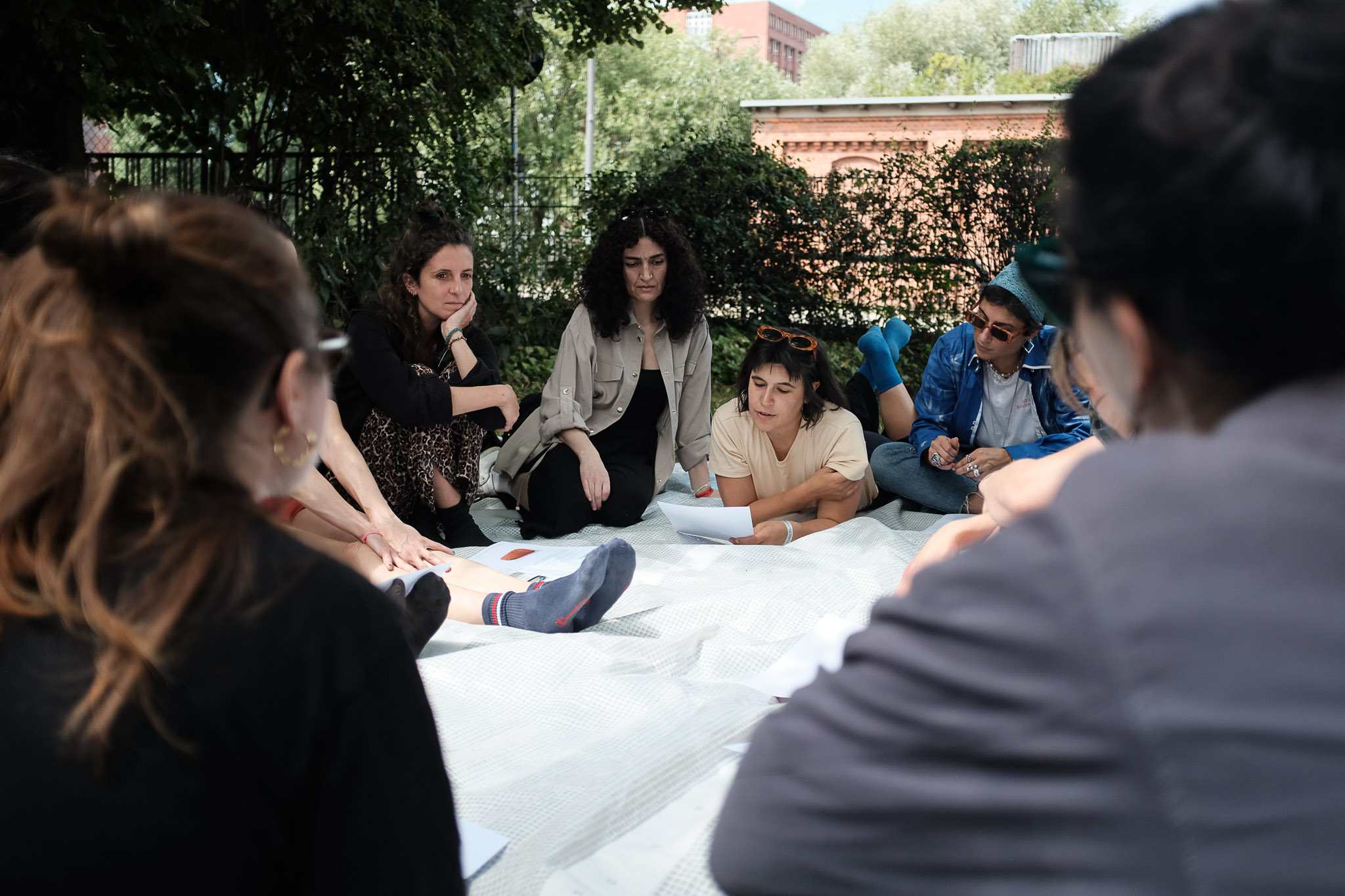
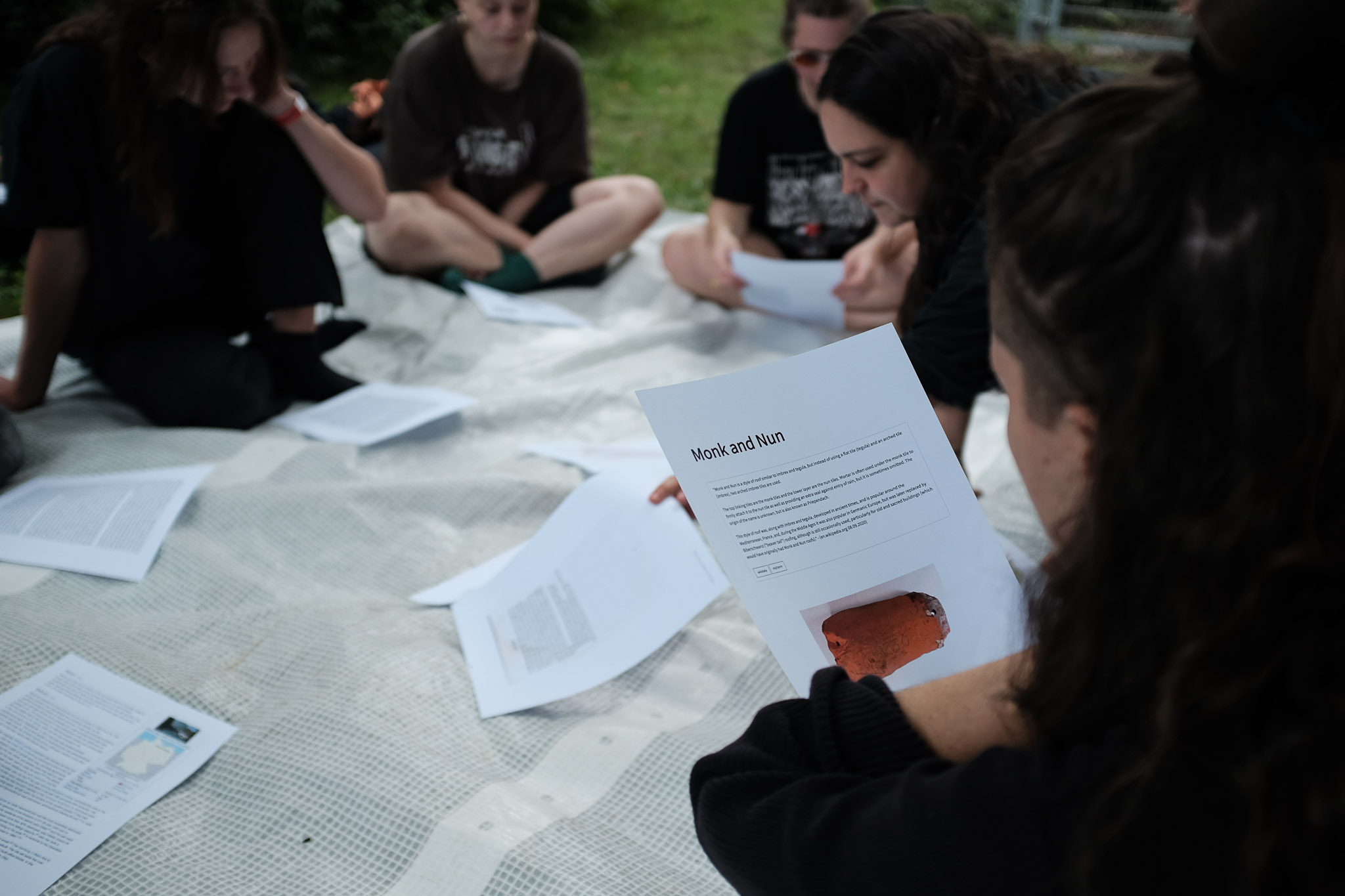

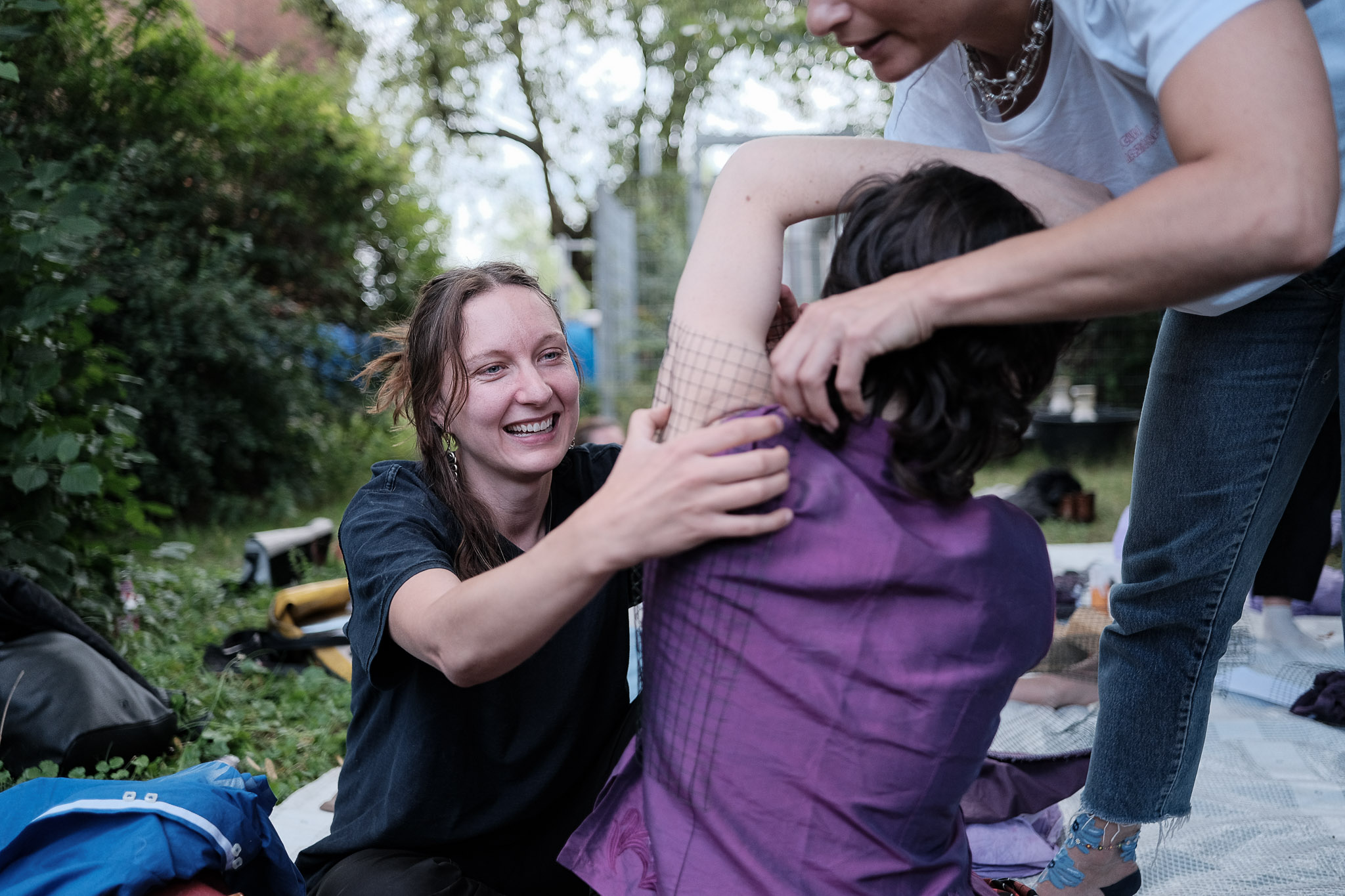
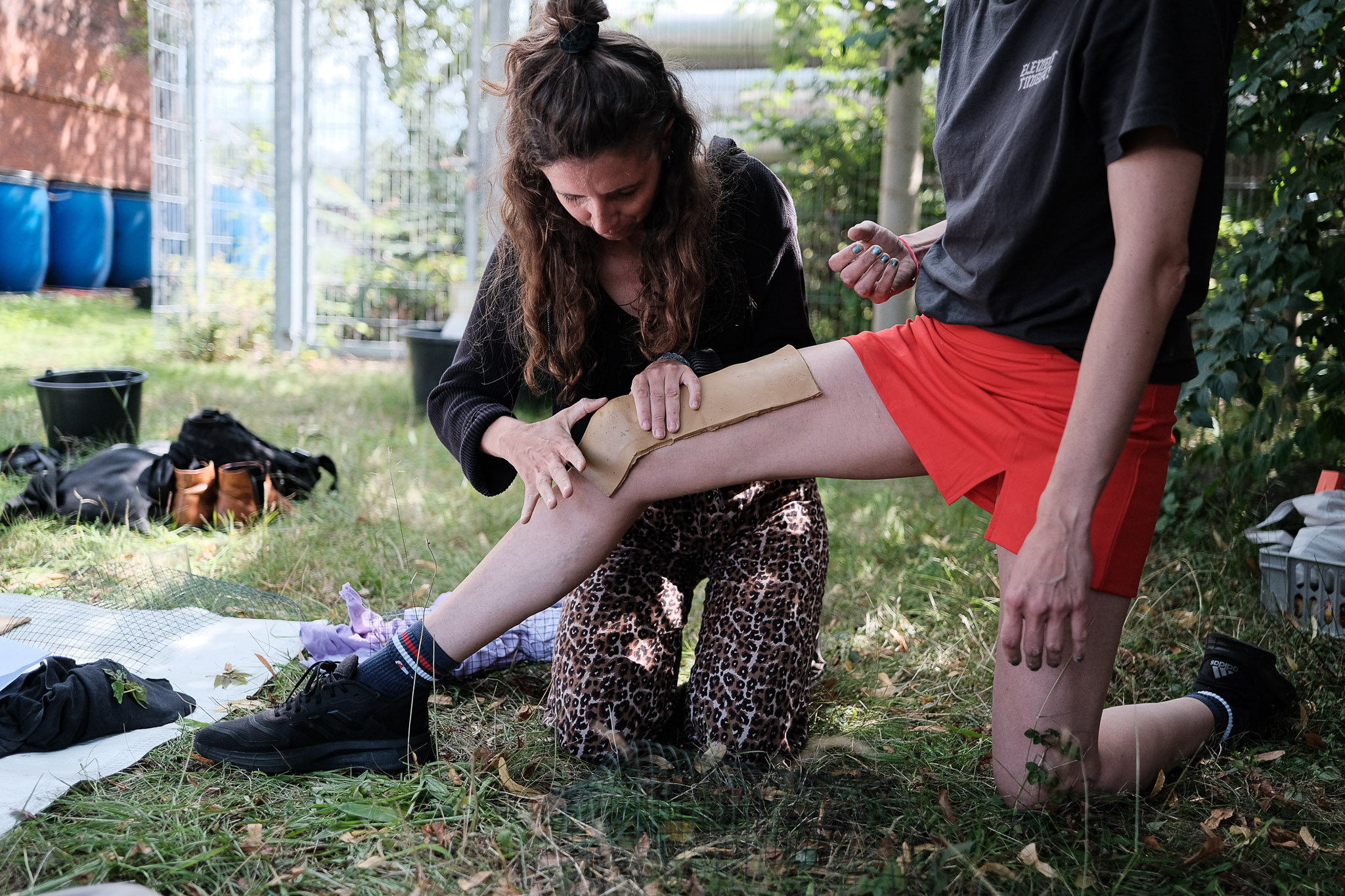
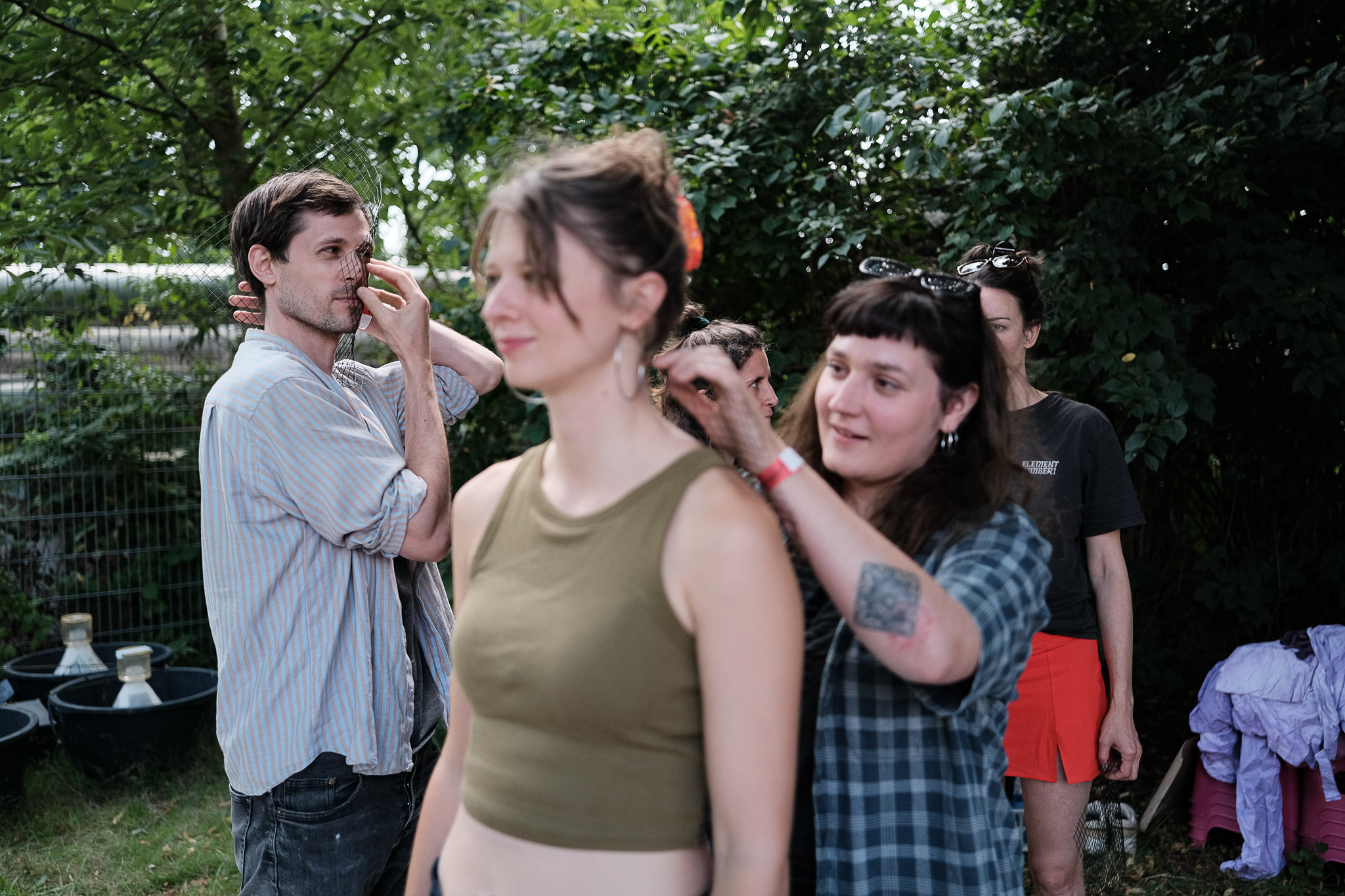


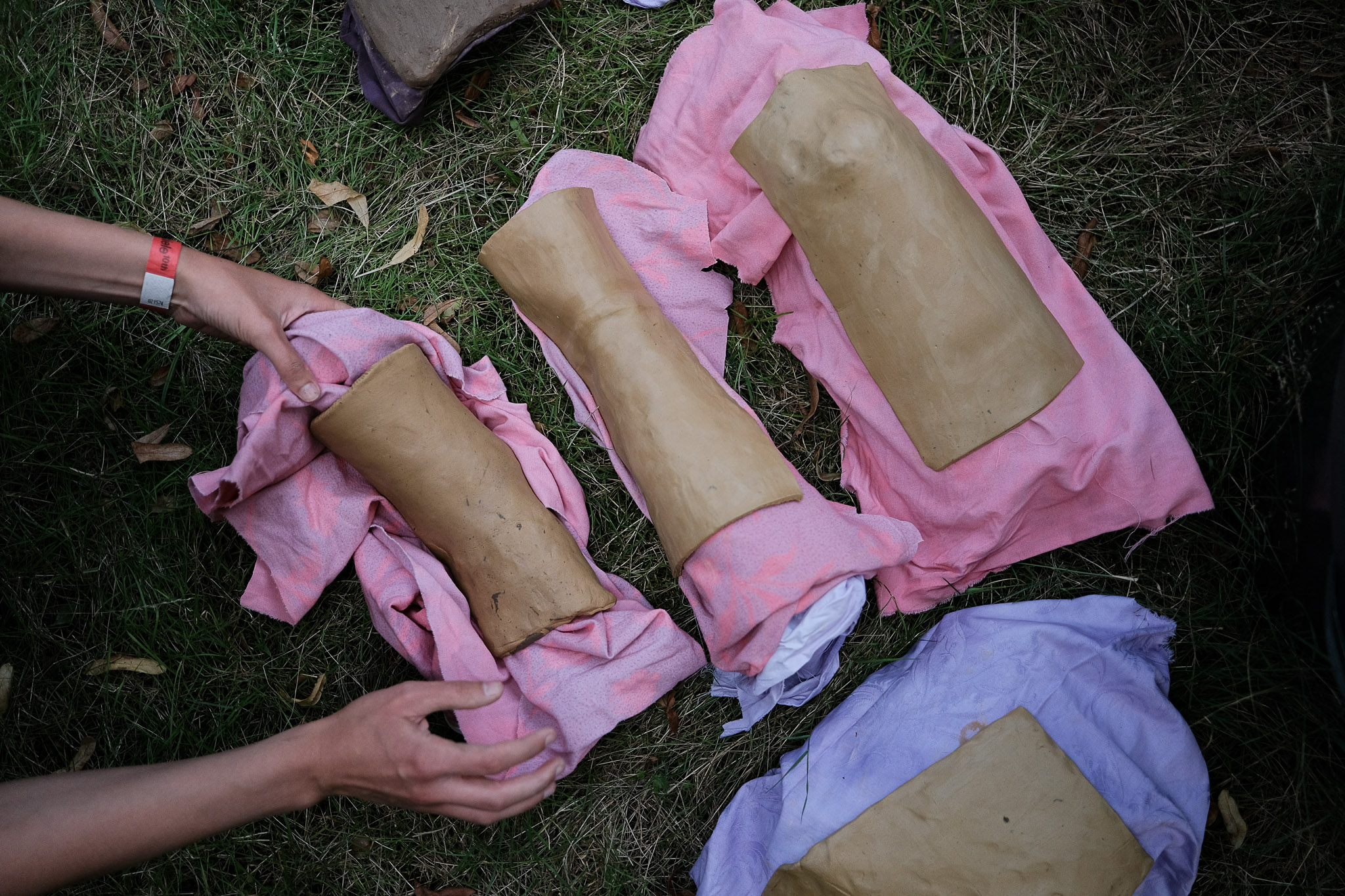
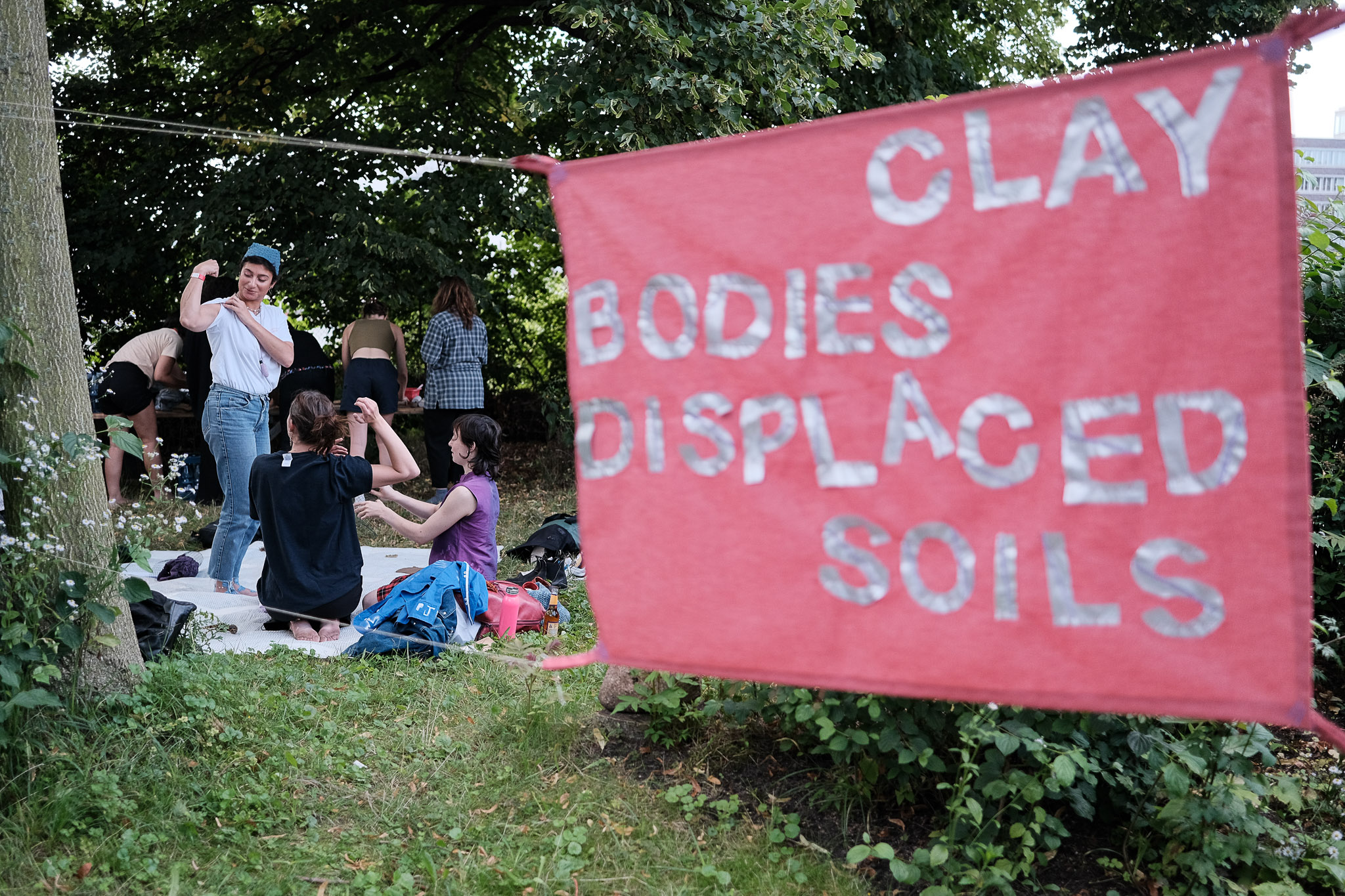
clay bodies, displaced soils
Hamburgo, Alemania | 2025
En colaboración con Dshamila Bücker. Hallo: Festspiele 2025, PARKS.
Fotos por Ali Haji.
Bajo el concreto de PARKS yacen huellas de un humedal, borradas hace mucho por la industria y la guerra, y cerradas para siempre al tacto. Clay Bodies, Displaced Soils se pregunta qué significa estar alejados de esa tierra y cómo podríamos volver a vincularnos con ella.
Sin poder acceder al suelo que pisábamos, acudimos a la arcilla comercial: un material moldeado por la extracción industrial y el comercio global, traído de otros lugares y hecho para servir en cualquier parte, sin memoria de dónde vino.
L+s participantes moldearon baldosas de arcilla con su propio cuerpo —piernas, caderas, hombros, espaldas— inspirándose en la técnica ‘Mönche und Nonne’ (monje y monja) de tejas moldeadas en el muslo, que solía practicarse en Hamburgo. Ya cocidas y esmaltadas, estas piezas se instalarán en PARKS, formando una superficie de gestos compartidos.
Hamburg, Germany | 2025
In collaboration with Dshamila Bücker. Hallo: Festspiele 2025, PARKS.
Photos by Ali Haji.
Beneath the concrete of PARKS lay traces of marshland, long overwritten by industry and war, and sealed away from touch. Clay Bodies, Displaced Soils asked what it meant to be estranged from that land, and how we might still shape a connection.
Unable to access the ground we stood on, we turned to commercial clay: a material shaped by industrial extraction and global circulation, taken from elsewhere and made to serve any place, bearing no memory of where it had come from.
Participants shaped clay tiles using their own bodies – legs, hips, shoulders, backs – drawing from the ‘Mönche und Nonne’ (monk and nun) technique of thigh-moulded tiles once common in Hamburg. Fired and glazed, these pieces will be installed on-site in PARKS as a surface of shared gestures.
Photos by Ali Haji.
Beneath the concrete of PARKS lay traces of marshland, long overwritten by industry and war, and sealed away from touch. Clay Bodies, Displaced Soils asked what it meant to be estranged from that land, and how we might still shape a connection.
Unable to access the ground we stood on, we turned to commercial clay: a material shaped by industrial extraction and global circulation, taken from elsewhere and made to serve any place, bearing no memory of where it had come from.
Participants shaped clay tiles using their own bodies – legs, hips, shoulders, backs – drawing from the ‘Mönche und Nonne’ (monk and nun) technique of thigh-moulded tiles once common in Hamburg. Fired and glazed, these pieces will be installed on-site in PARKS as a surface of shared gestures.
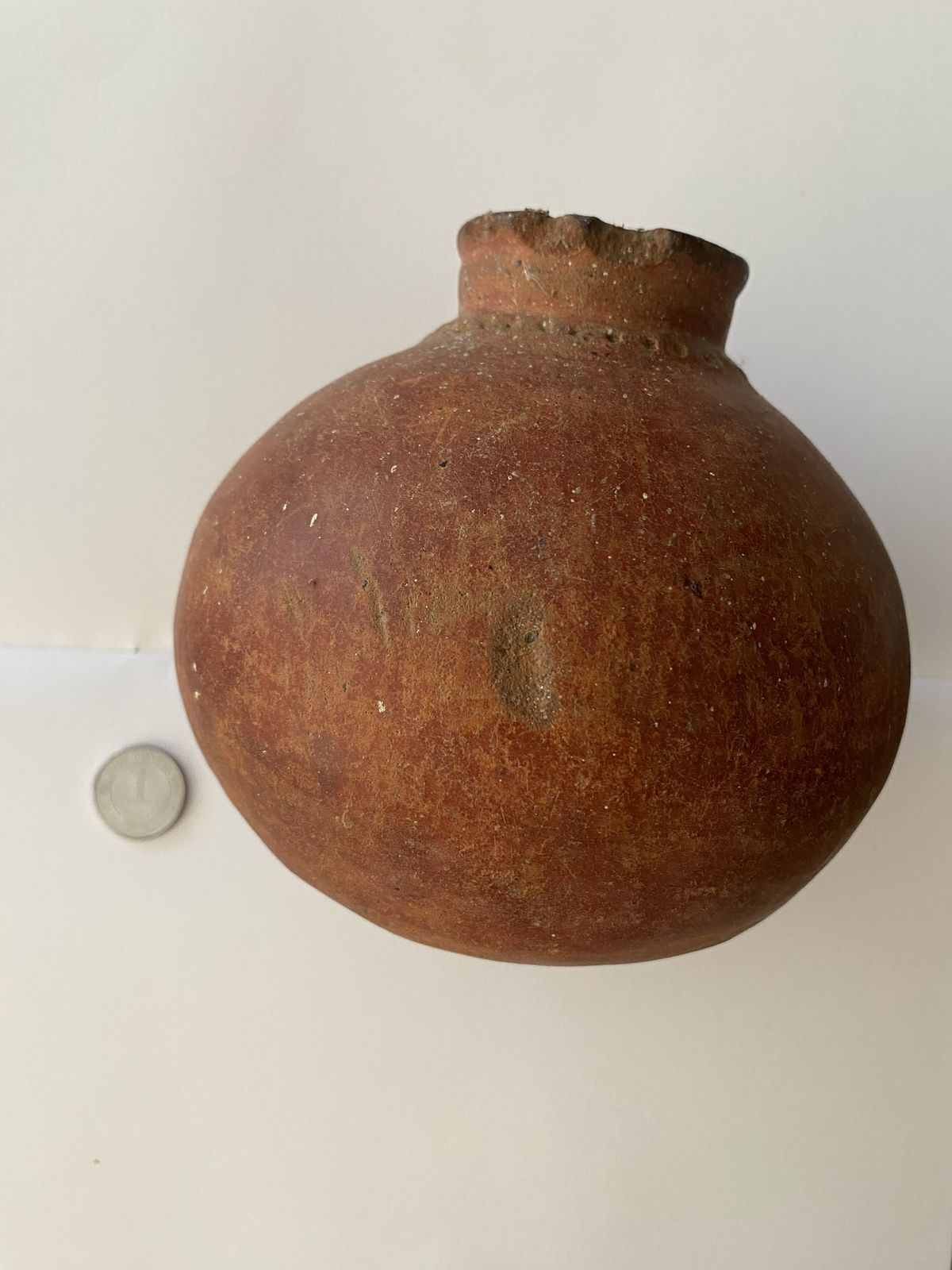



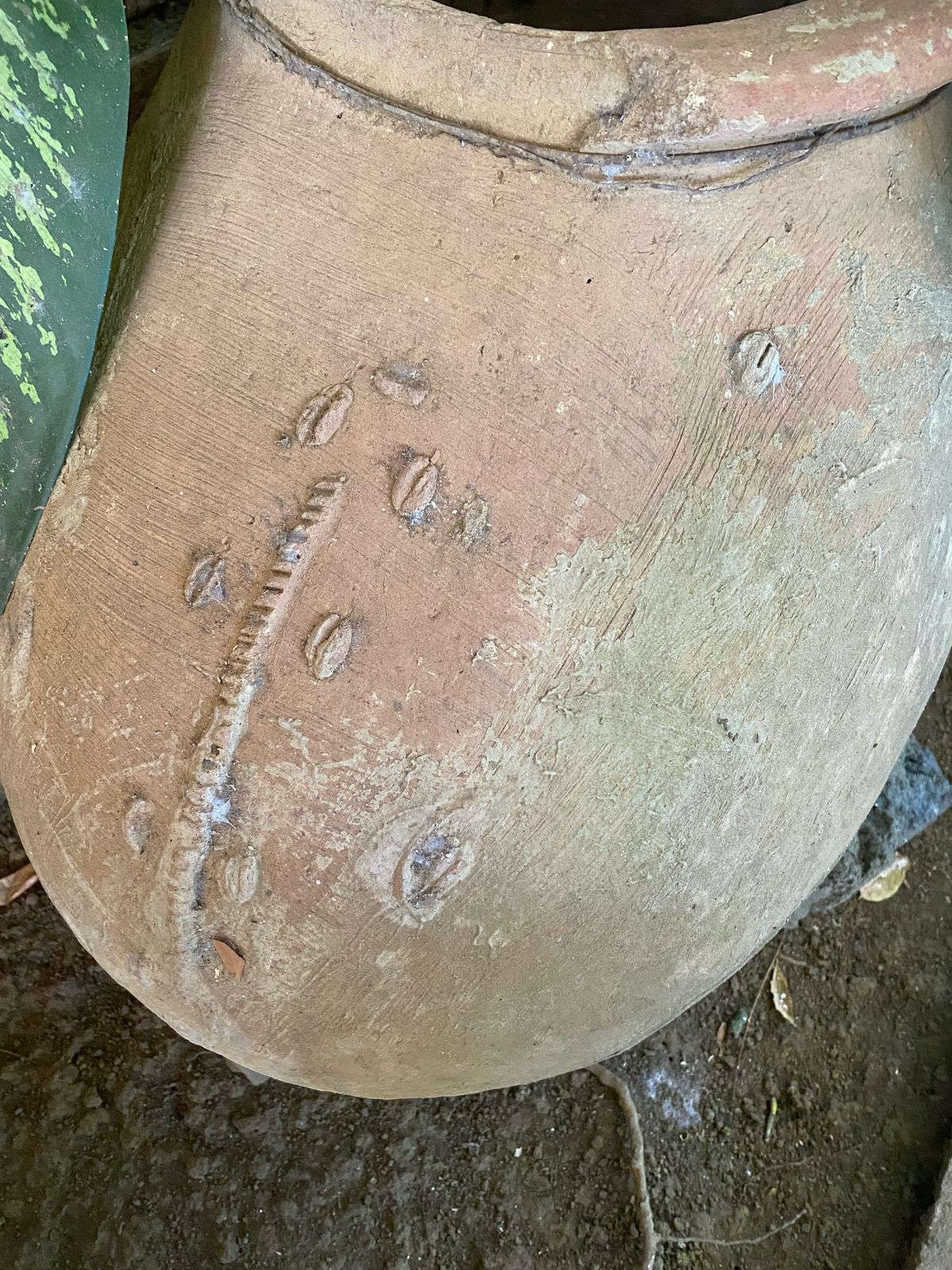

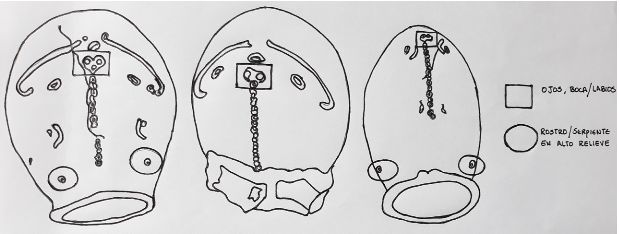
vasijas para sembrar duelos / vessels for sowing grief
Barcelona, Cataluña, España | en proceso
En colaboración con Andi Icaza(residente La Escocesa 2023-presente). Becas de Investigación Artística Barcelona Crea para residentes.
Un proyecto de investigación fundamentado en la colaboración, amasando los suelos que cargamos, los suelos que nos cargan, y los duelos que nos ayudan a navegar sus porosidades. Al aprovechar el potencial vital del vacío dentro de la porosidad como metodología, esta exploración inyecta ideas de continuidad y ciclos en dualidades como vida-muerte, ausencia-presencia y suelo-cielo, desplazándose de la oposición hacia la relación.
El proyecto aborda el duelo en múltiples escalas, reconociendo que el dolor trasciende lo individual y se manifiesta en dimensiones colectivas, locales y globales. Considera el duelo personal como la experiencia de una ausencia presente y la búsqueda de sentido a través de rituales y memorias tanto individuales como colectivas. Reflexiona sobre los duelos incrustados en el imaginario de países marcados por el conflicto armado, la violencia y represión estatal, el desplazamiento forzado y el desmantelamiento intencionado de las estructuras sociales y cotidianas—realidades que además complican la idea de retorno para quienes están lejos. Contempla también el duelo por el desarraigo provocado por migraciones económicas, políticas o ambientales—por ese territorio físico que resguarda nuestras memorias personales y colectivas.
Piensa el duelo de la Tierra en un sentido amplio, vinculado a la emergencia climática y a los cambios radicales que esta crisis conlleva. Aquí, el duelo no se refiere únicamente a la pérdida humana, sino también a la transformación acelerada de los ecosistemas, la ruptura de equilibrios naturales y la modificación de paisajes que han sostenido tanto la vida humana como la más-que-humana. Este duelo se vive a diario—en los cambios del clima, en los patrones agrícolas, en el acceso al agua y en la constante incertidumbre sobre el porvenir.
Conceptualmente, el proyecto se arraiga en la expresión coloquial “sembrar muertos”, utilizada para referirse a enterrar a los difuntos. Es una frase cargada de sentido sobre la conexión entre muerte, tierra y ritual, especialmente en contextos rurales. La segunda base del proyecto es la investigación de Kevin Gonzales Hodgson sobre la iconografía de urnas funerarias Chorotega y Nicarao en Villa Tiscapa, Managua. Este sitio, con su relieve escarpado y fertilidad variable de sus suelos, forma parte de la cuenca volcánica del graben de Managua. Está impregnado de una historia funeraria prehispánica que entiende la muerte como parte de un ciclo vital continuo, en un paisaje sujeto a un cambio ambiental constante—terremotos, erupciones, tormentas y sequías.
La metodología de vasijas para sembrar duelo se despliega en varias fases, integrando aproximaciones teóricas y prácticas, exploraciones territoriales y talleres colectivos. El proceso se sustenta en la investigación experimental y la creación colectiva, utilizando la cerámica como medio para explorar la relación entre duelo, territorio y memoria. A través de una investigación material y simbólica realizada en Nicaragua y Barcelona, el proyecto busca conectar tradiciones precoloniales con los desafíos contemporáneos de la pérdida y la regeneración.
Barcelona, Catalonia, Spain | Jul 2025
In collaboration with Andi Icaza (La Escocesa resident 2023–present). Barcelona Crea Artistic Research Grants for residents.
A research project grounded in collaboration, kneading the soils we carry, the soils that carry us, and the griefs that help us navigate their porosities. By drawing on the vital potential of the void within porosity as methodology, this exploration injects ideas of continuity and cycles into dualities such as life–death, absence–presence, and earth–sky, shifting from opposition toward relation.
The project addresses grief at multiple scales, recognizing that pain transcends the individual and manifests in collective, local, and global dimensions. It considers personal grief as the experience of a present absence and the search for meaning through rituals and memories, both individual and collective. It reflects on the grief embedded in the imaginary of countries marked by armed conflict, state violence and repression, forced displacement, and the intentional dismantling of social and everyday structures—realities that also complicate the idea of return for those far from home. It also contemplates the grief of uprooting caused by economic, political, or environmental migrations—grief for that physical territory that shelters our personal and collective memories.
It thinks through the grief of the Earth in a broad sense, linked to the climate emergency and the radical changes this crisis entails. Here, grief does not refer only to human loss, but also to the accelerated transformation of ecosystems, the rupture of natural balances, and the alteration of landscapes that have sustained both human and more-than-human life. This grief is lived daily—in the shifts of climate, in agricultural patterns, in access to water, and in the constant uncertainty about what lies ahead.
Conceptually, the project is rooted in the colloquial expression “to sow the dead”, used to refer to burying the deceased. It is a phrase laden with meaning about the connection between death, earth, and ritual, especially in rural contexts. The second foundation of the project is Kevin Gonzales Hodgson’s research on the iconography of Chorotega and Nicarao funerary urns in Villa Tiscapa, Managua. This site, with its rugged relief and variable soil fertility, is part of the volcanic basin of the Managua graben. It is steeped in a pre-Hispanic funerary history that understands death as part of a continuous life cycle, within a landscape subject to constant environmental change—earthquakes, eruptions, storms, and droughts.
The methodology of vessels for sowing grief unfolds in several phases, integrating theoretical and practical approaches, territorial explorations, and collective workshops. The process is sustained by experimental research and collective creation, using ceramics as a medium to explore the relationship between grief, territory, and memory. Through material and symbolic research carried out in Nicaragua and Barcelona, the project seeks to connect precolonial traditions with contemporary challenges of loss and regeneration.
un taller en tres movimientos / a workshop in three movements
Barcelona, Cataluña, España | Jul 2025
Durante 3 sábados consecutivos propusimos una deriva entre la acción material, la lectura y la reflexión colectiva, trabajando el barro como cuerpo común y contenedor poroso de duelos en su con-formación material, simbólica y situada.
Barcelona, Catalonia, Spain | Jul 2025
For three consecutive Saturdays, we proposed a drift between material action, reading, and collective reflection, working with clay as a common body and porous container of griefs in its material, symbolic, and situated con-formation.


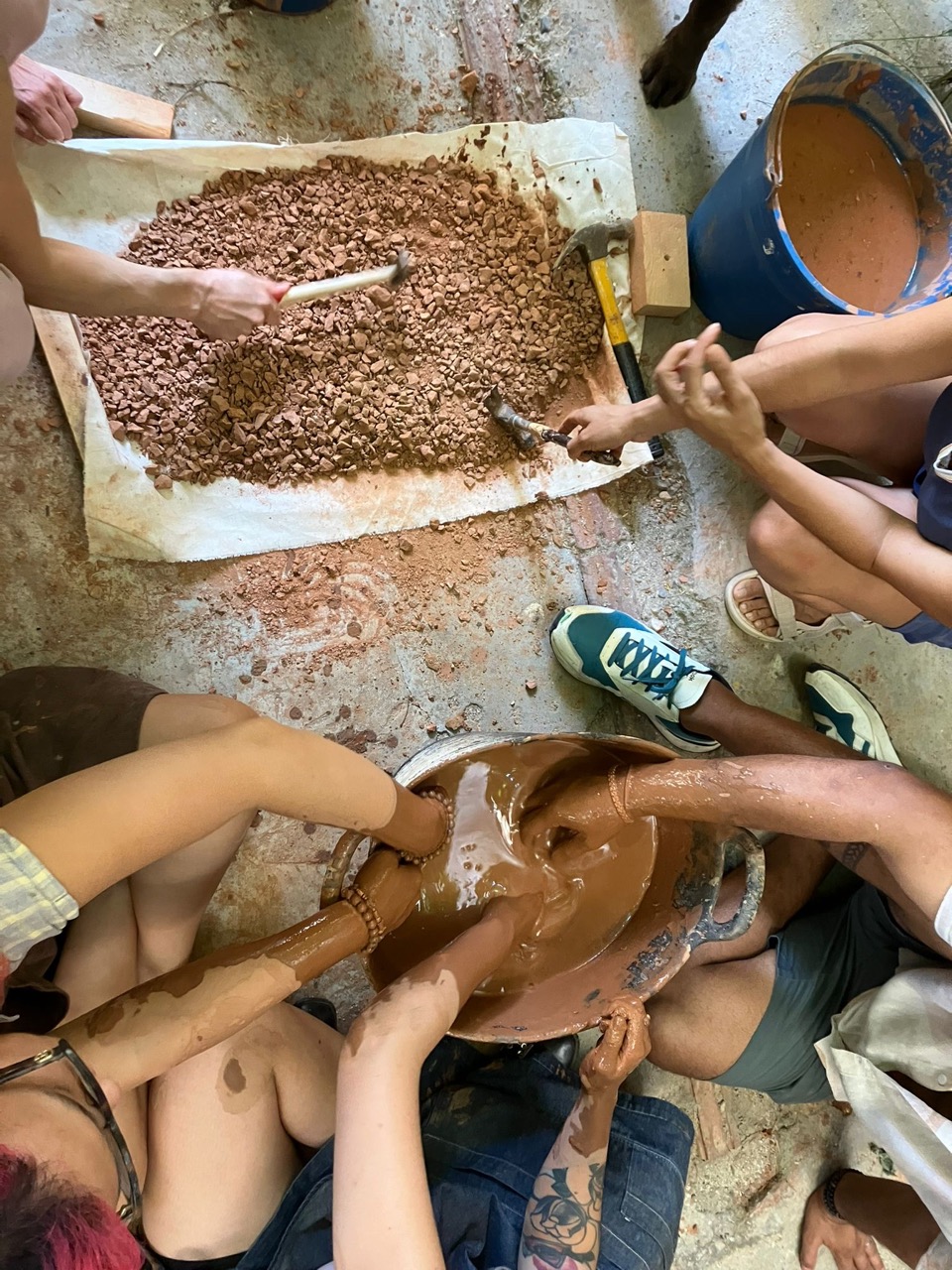

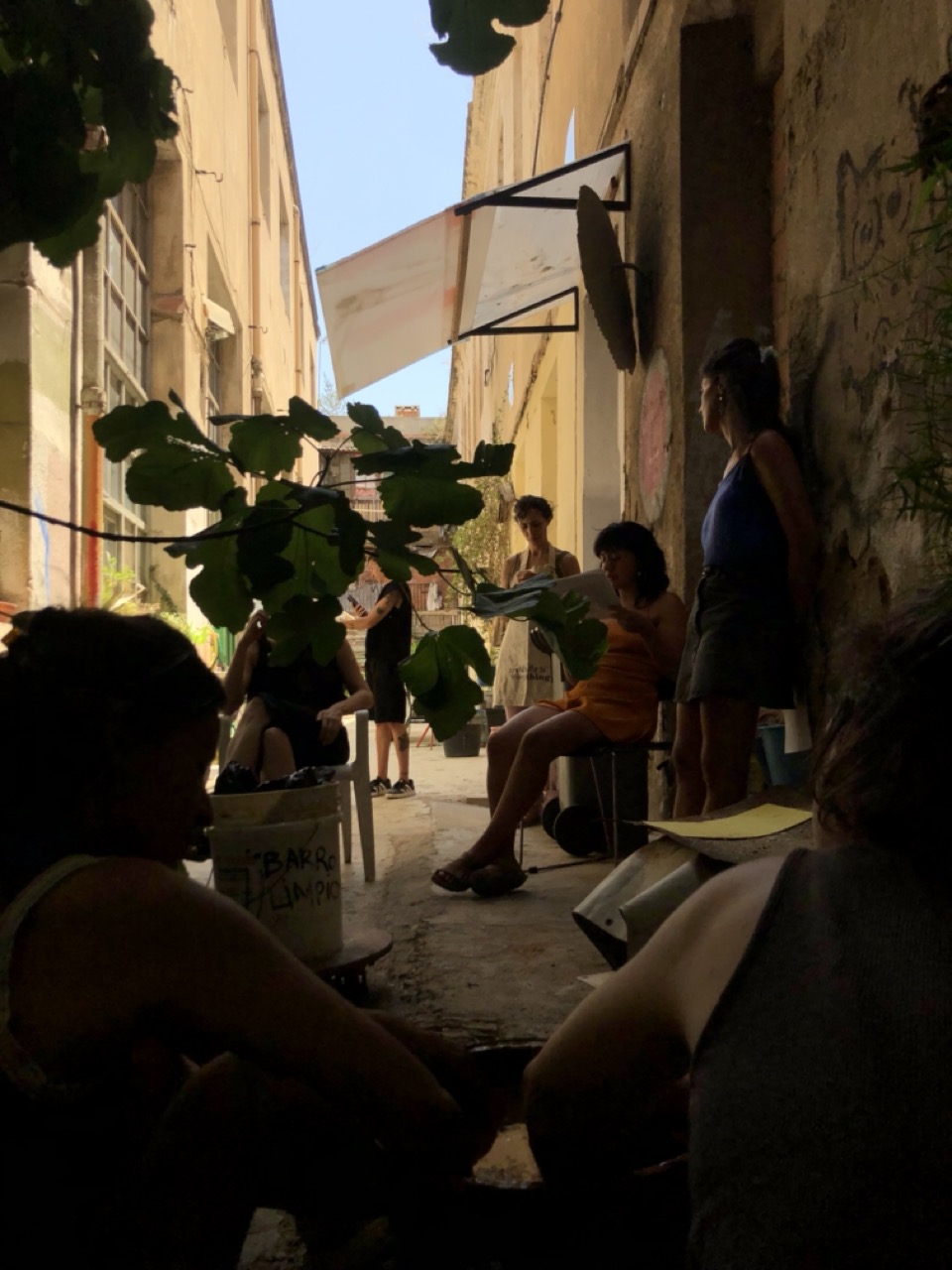

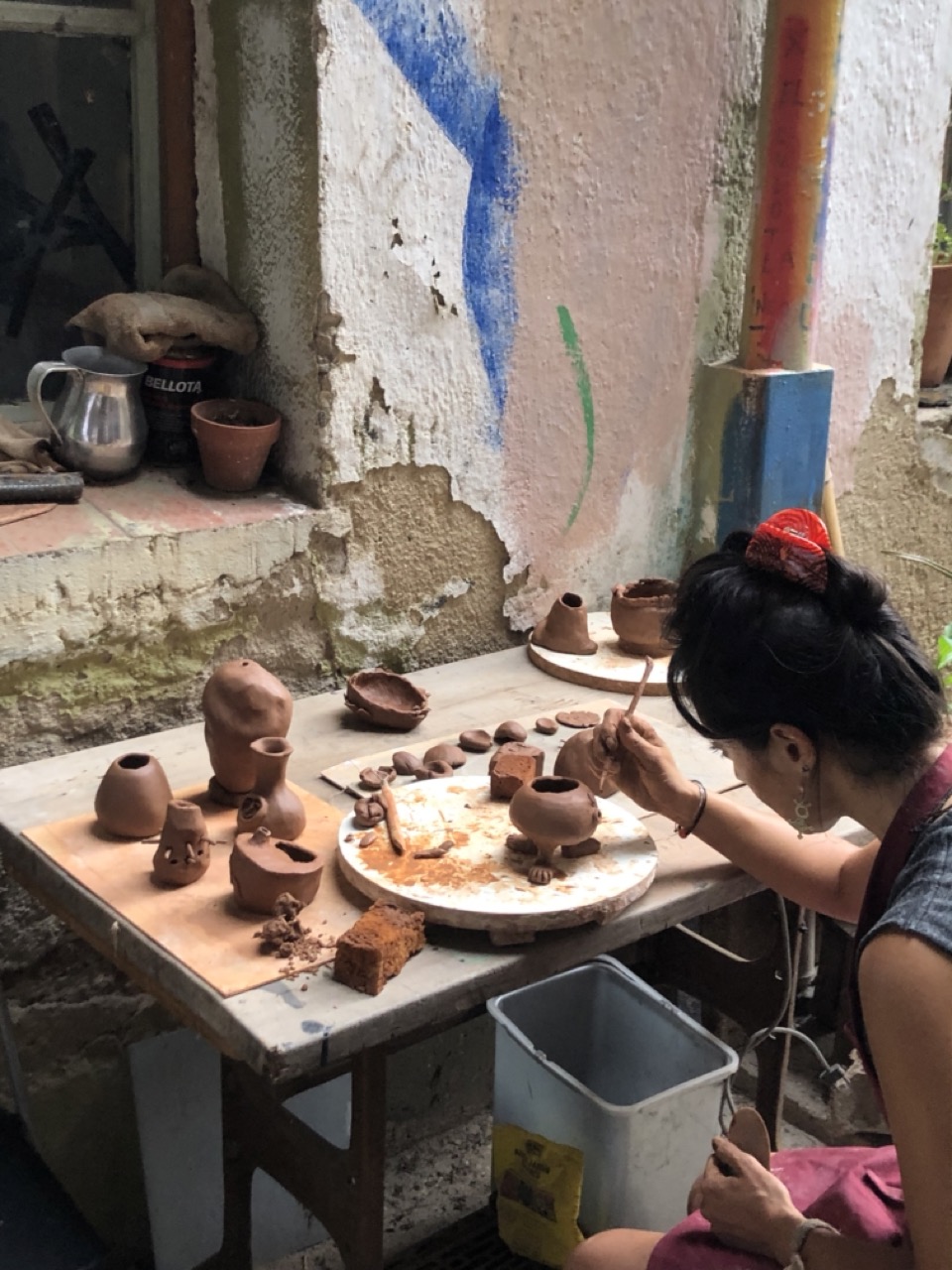
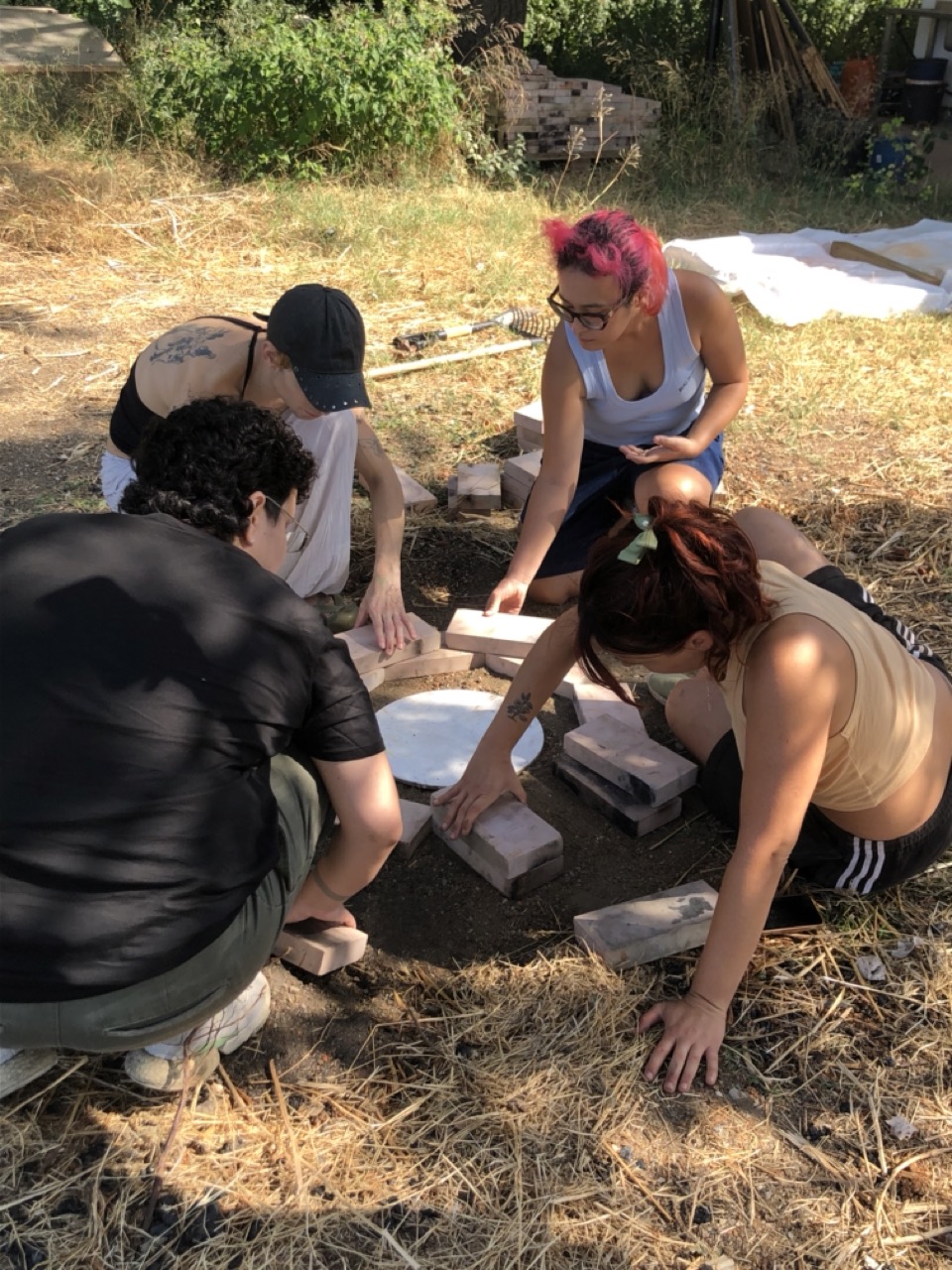
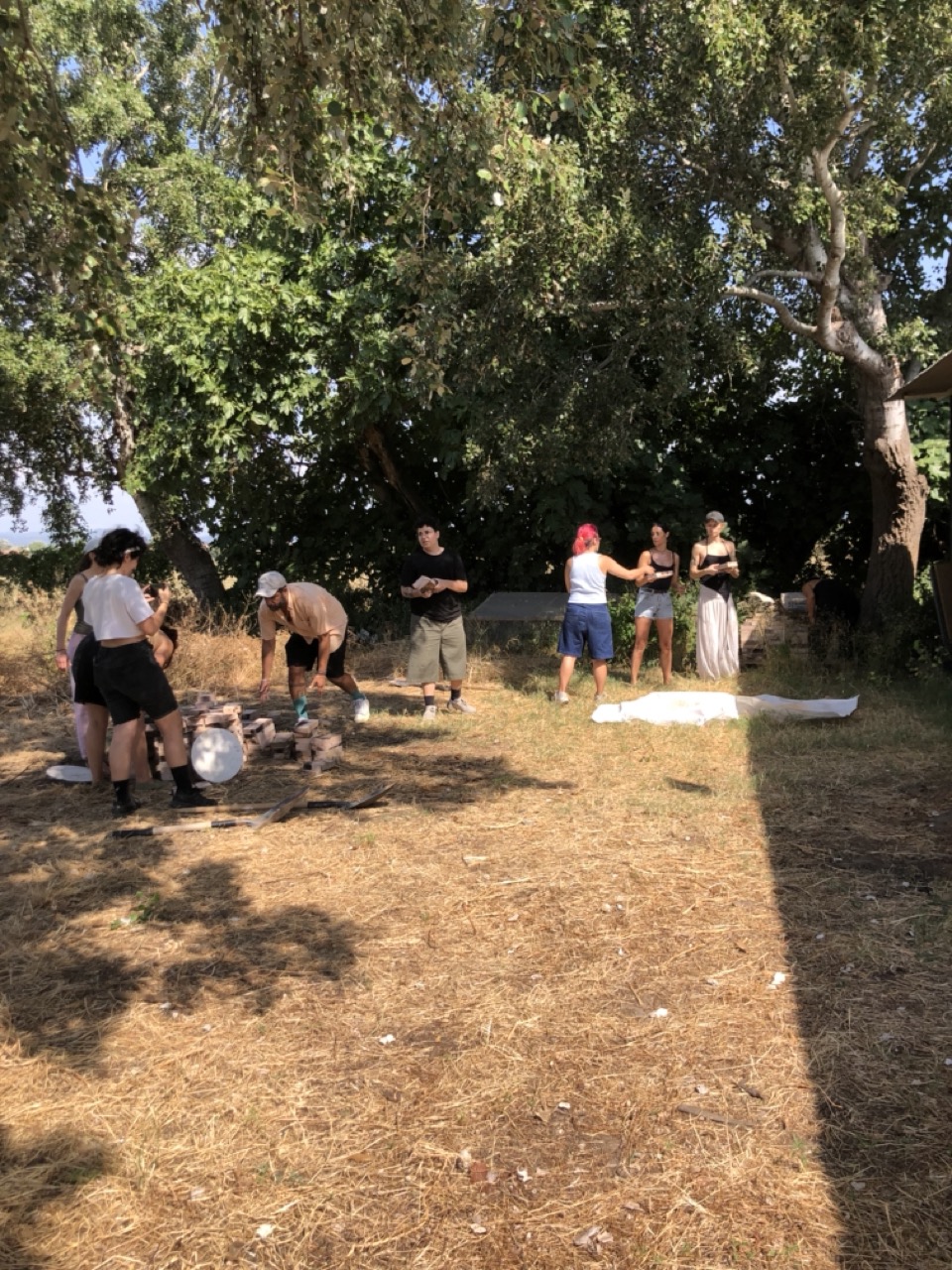
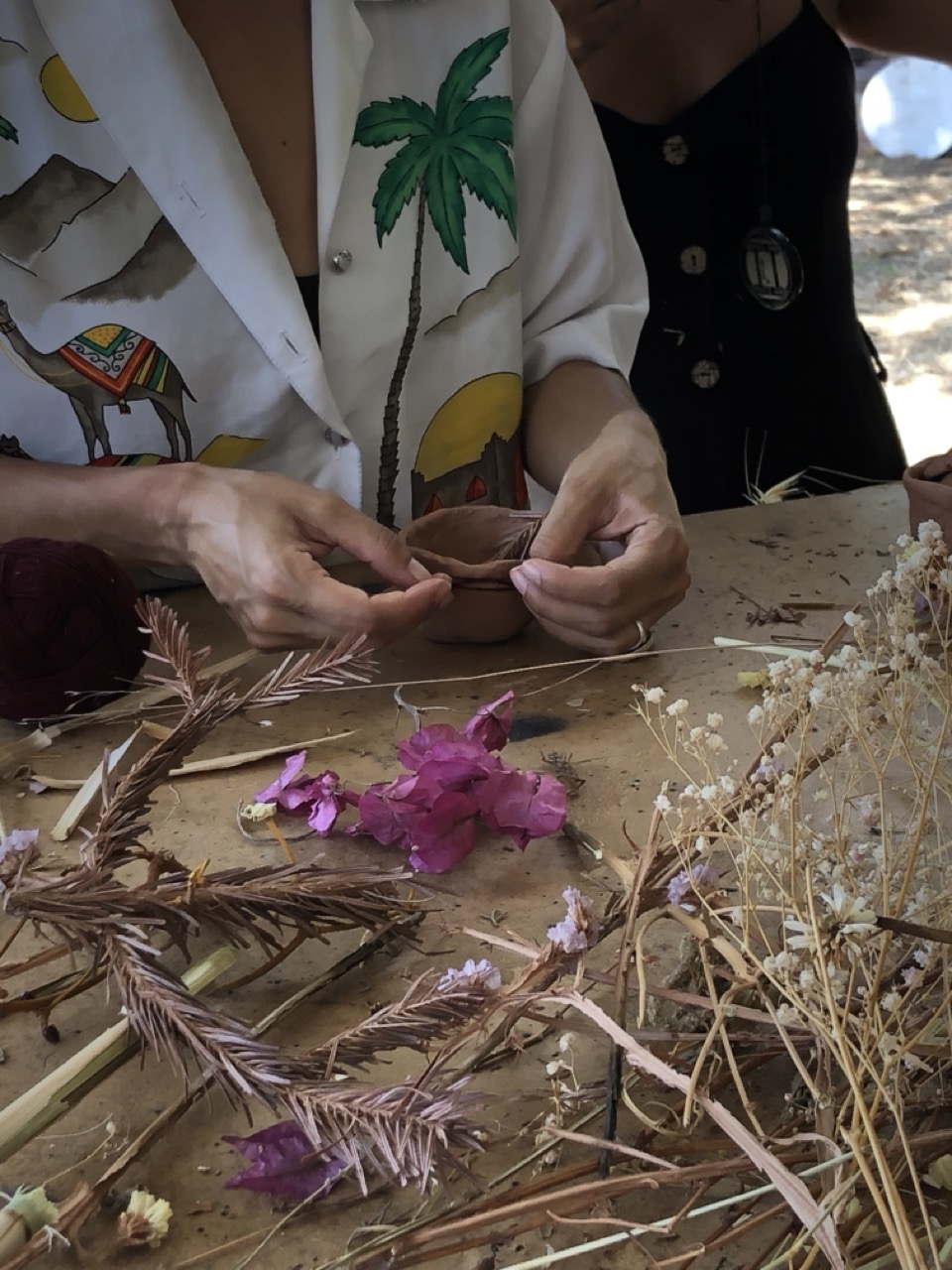

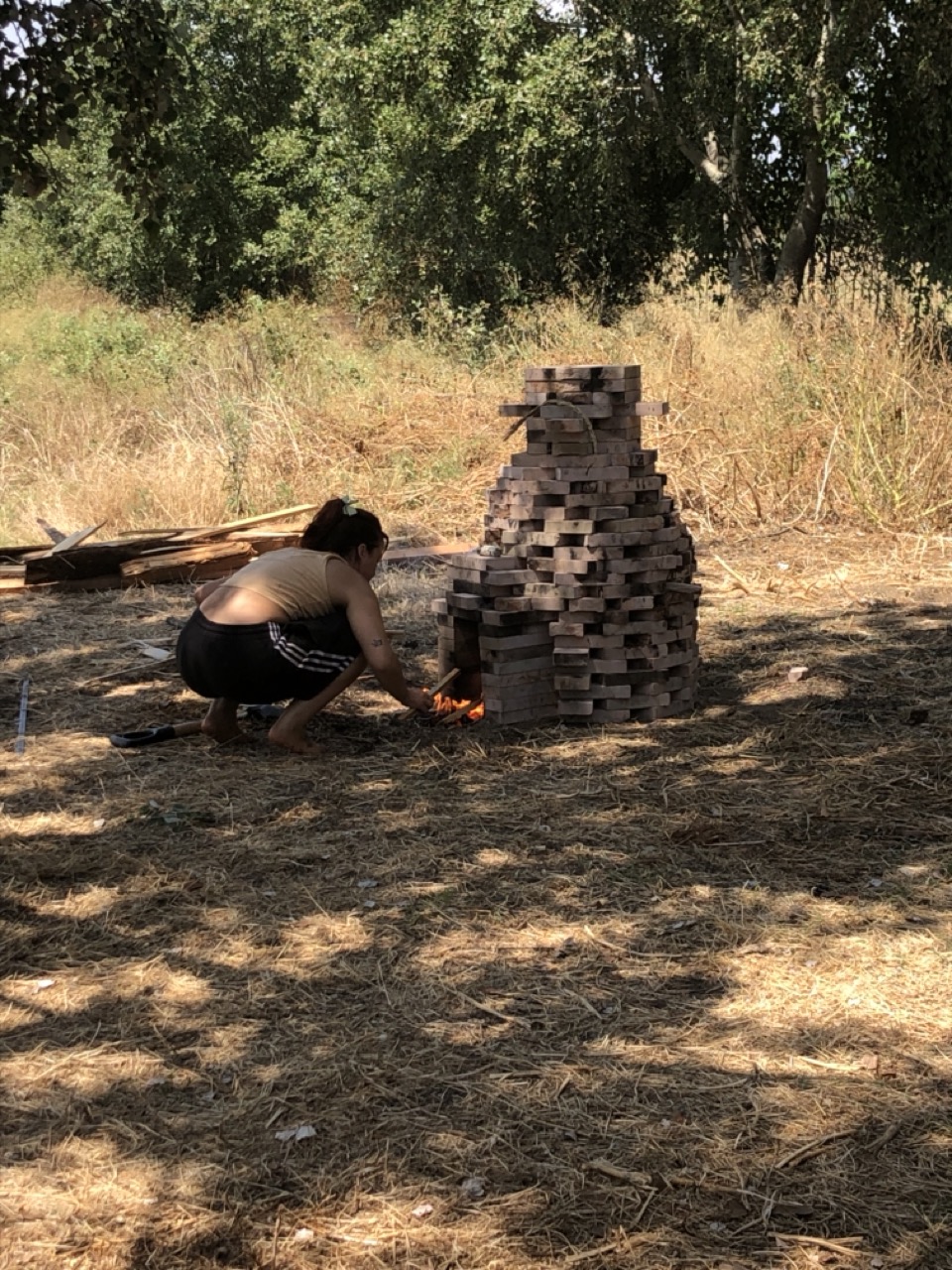

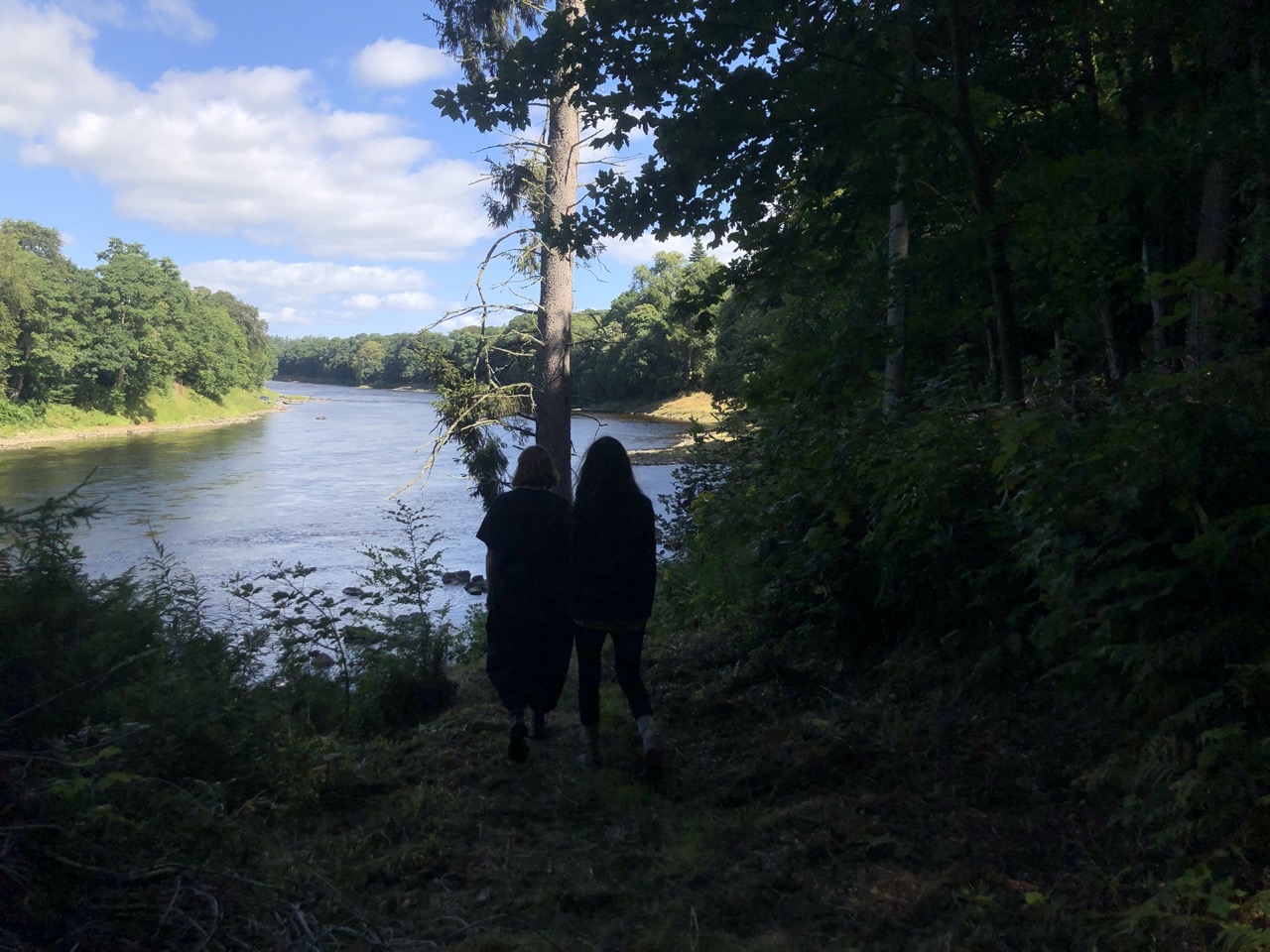
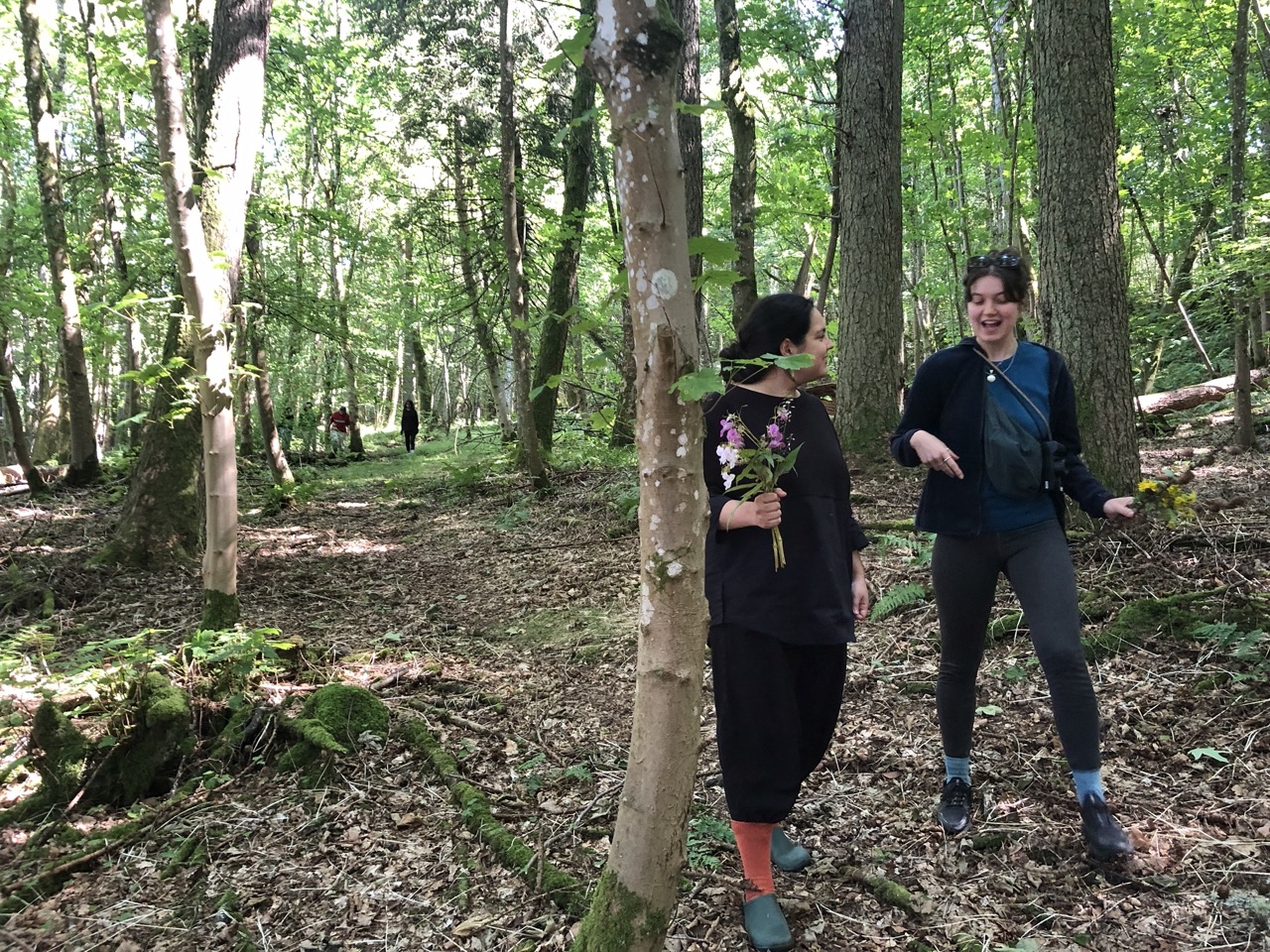


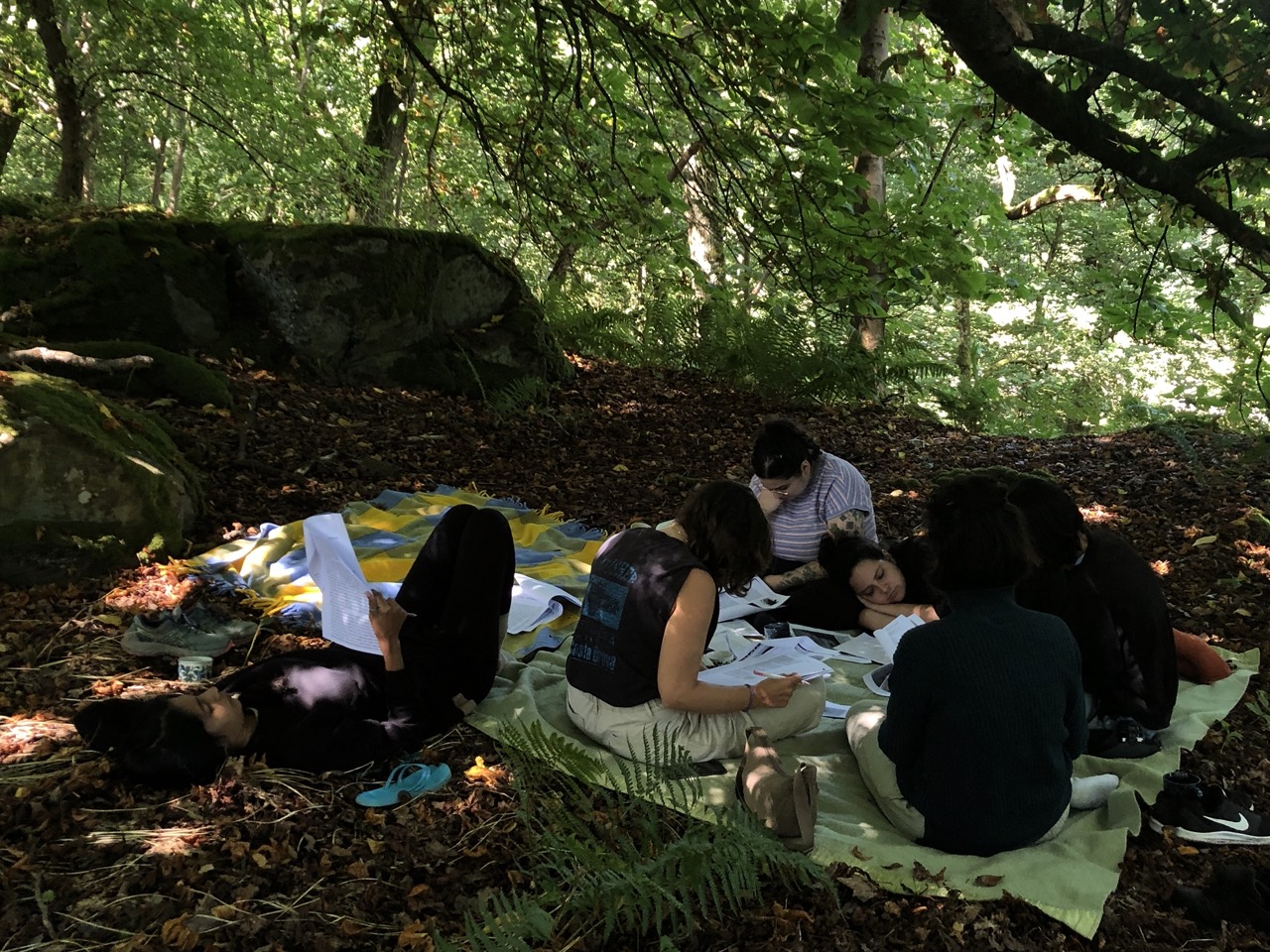
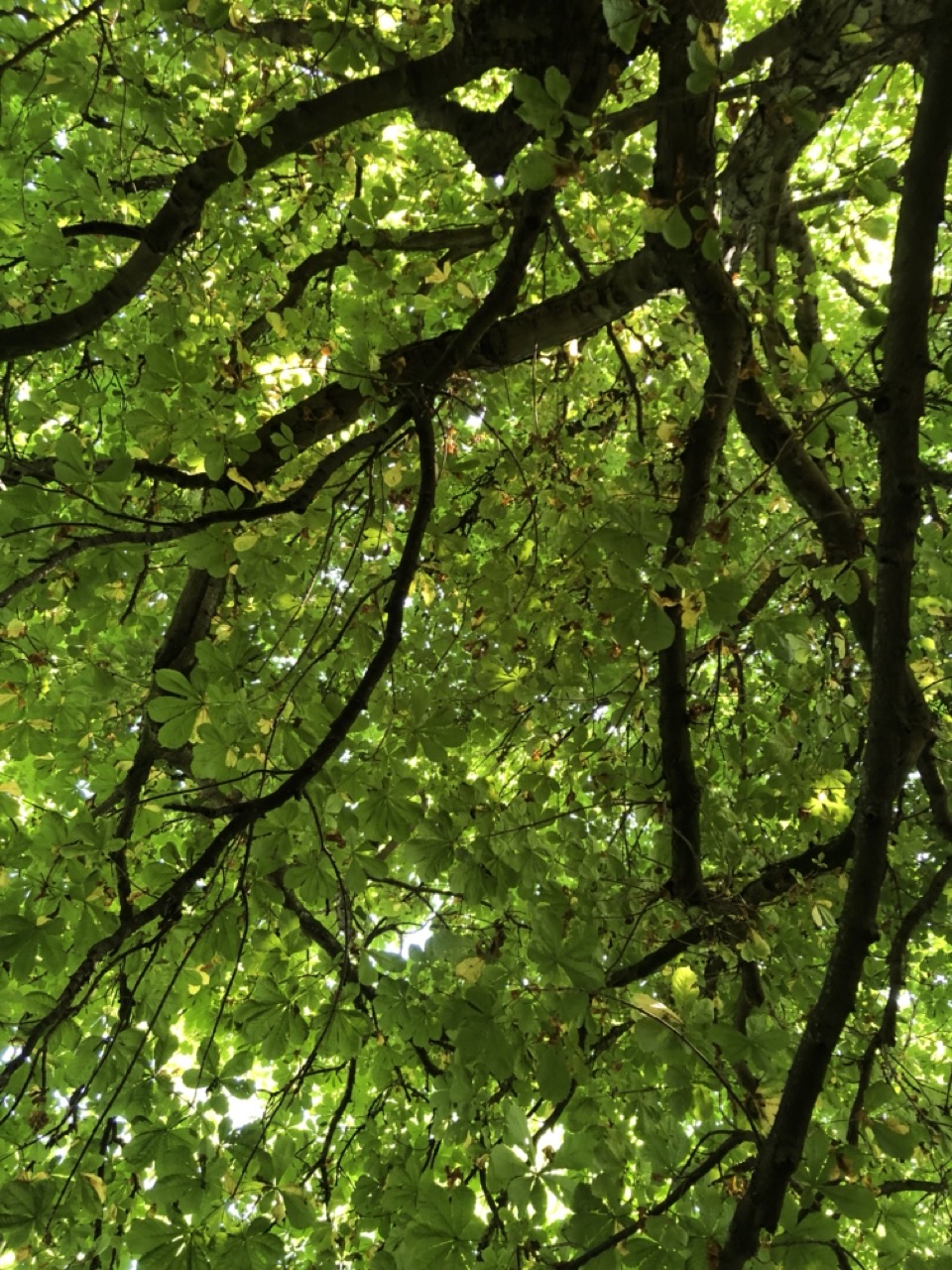
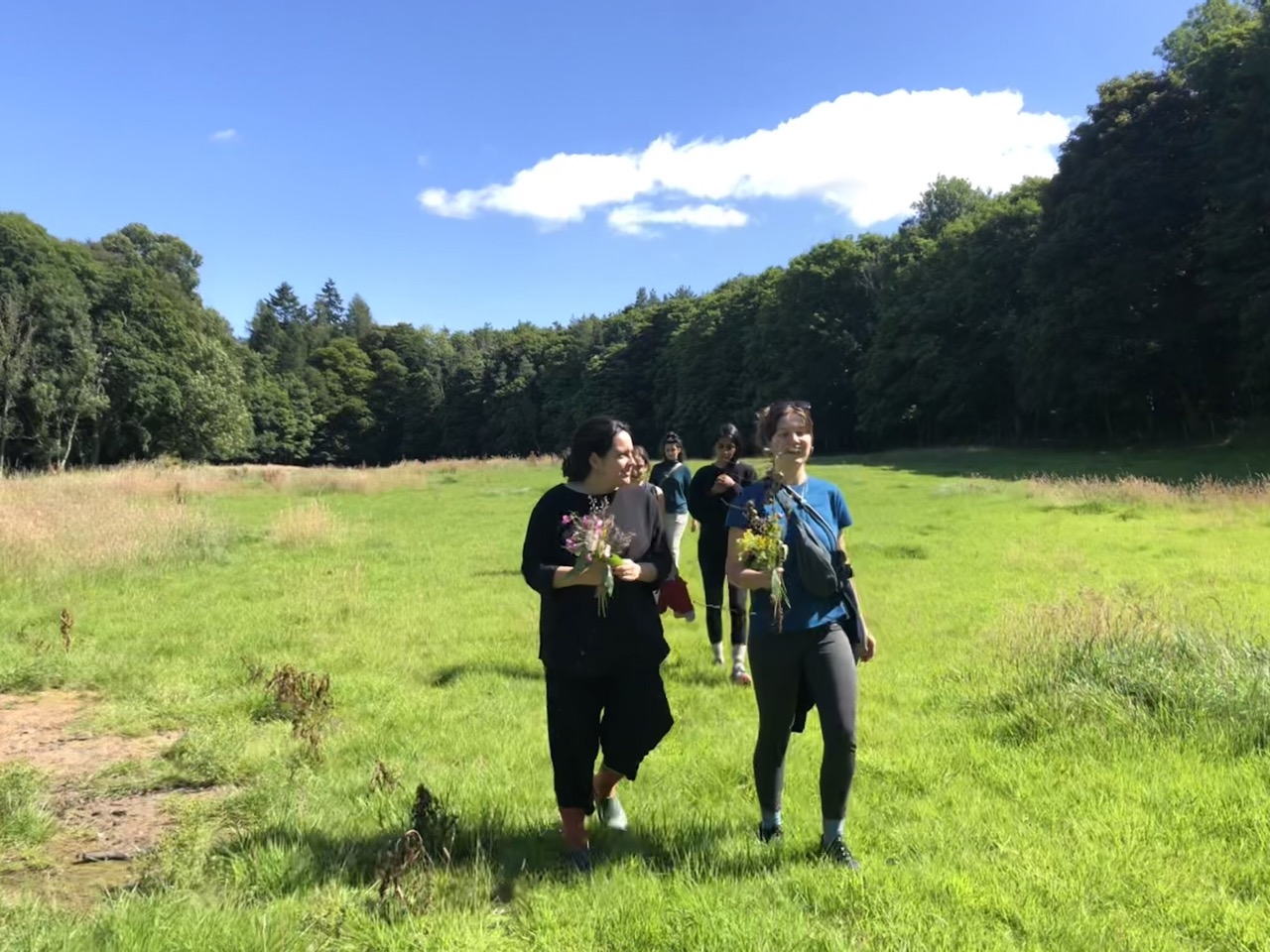


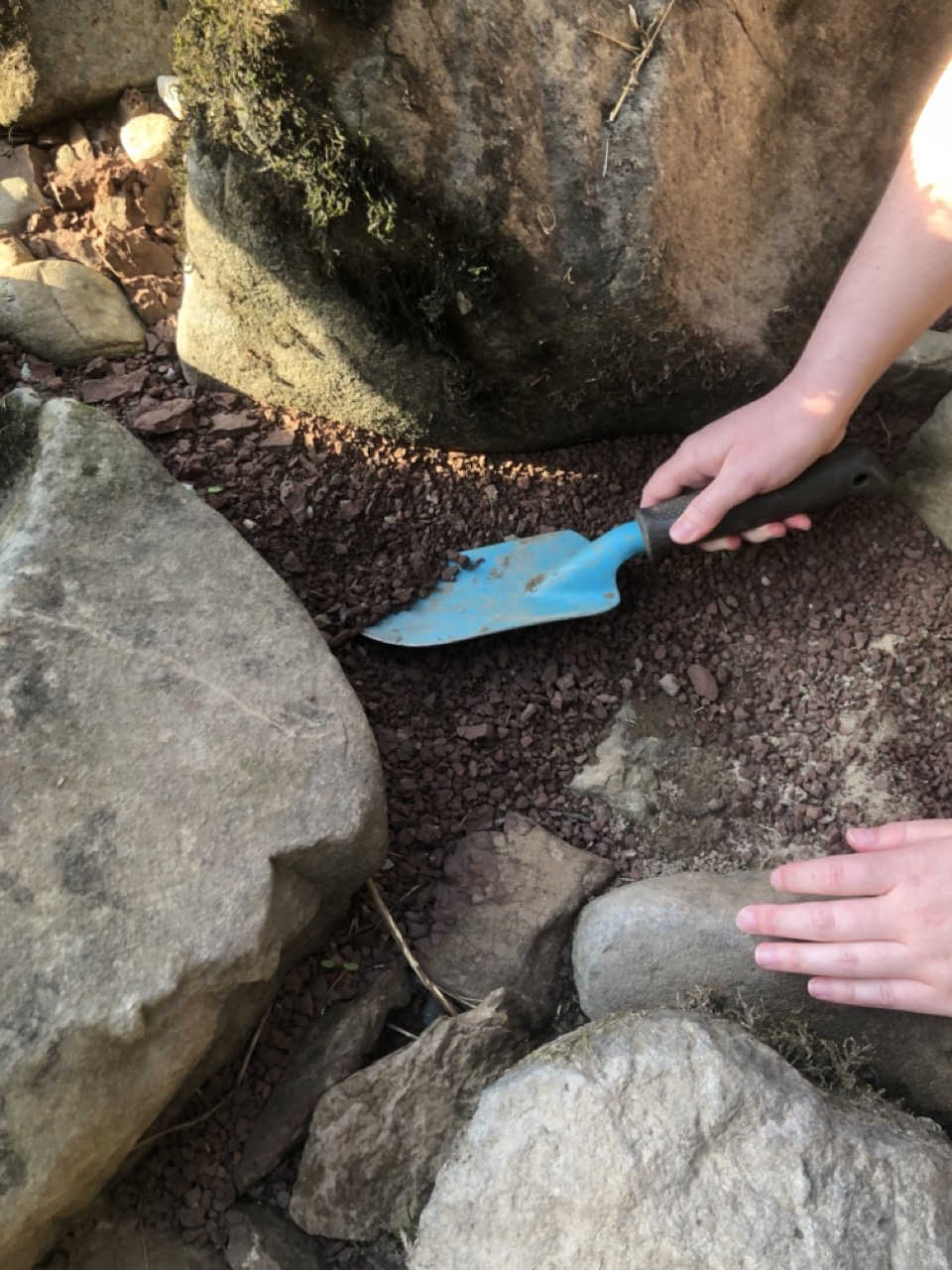

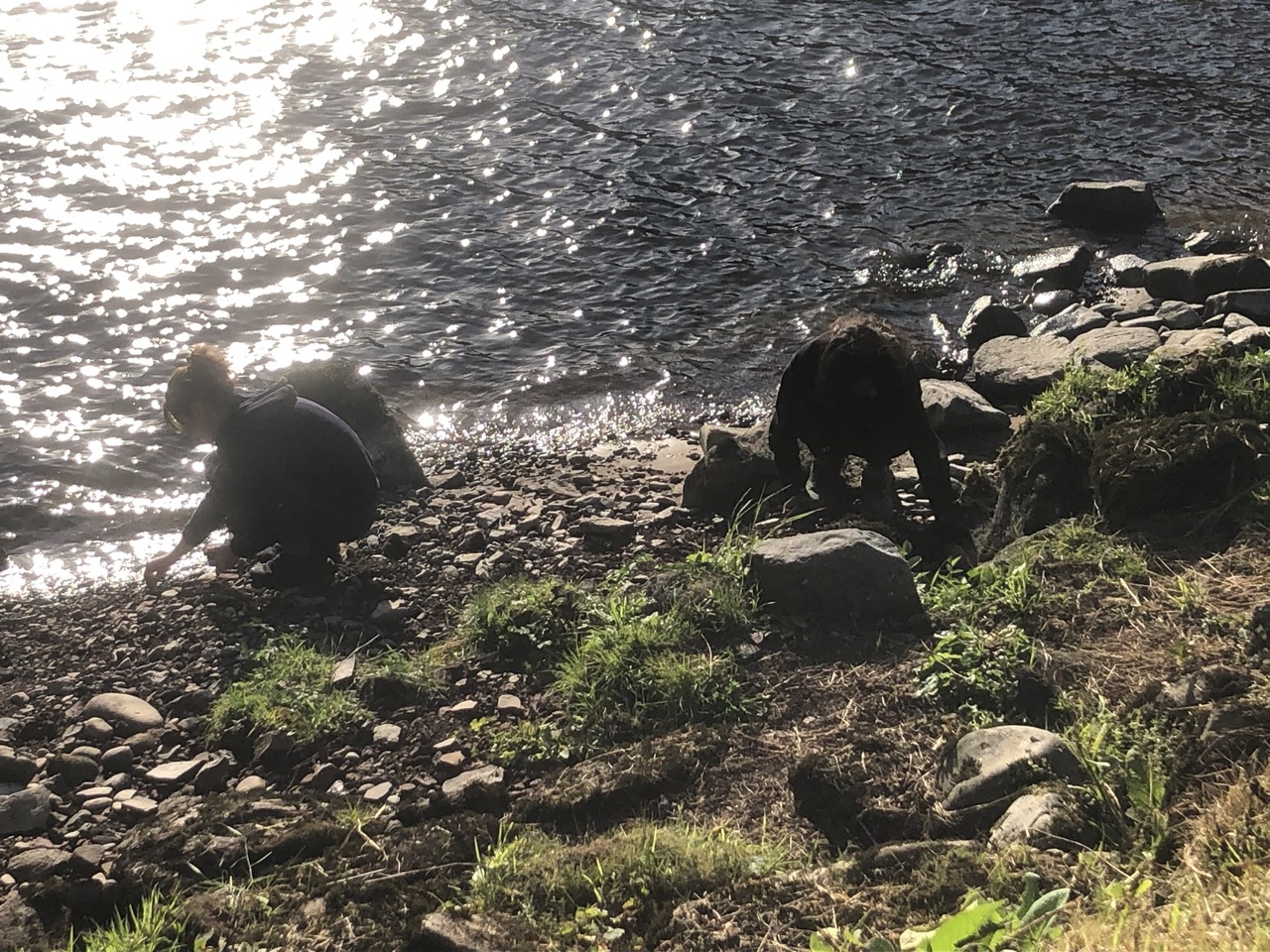
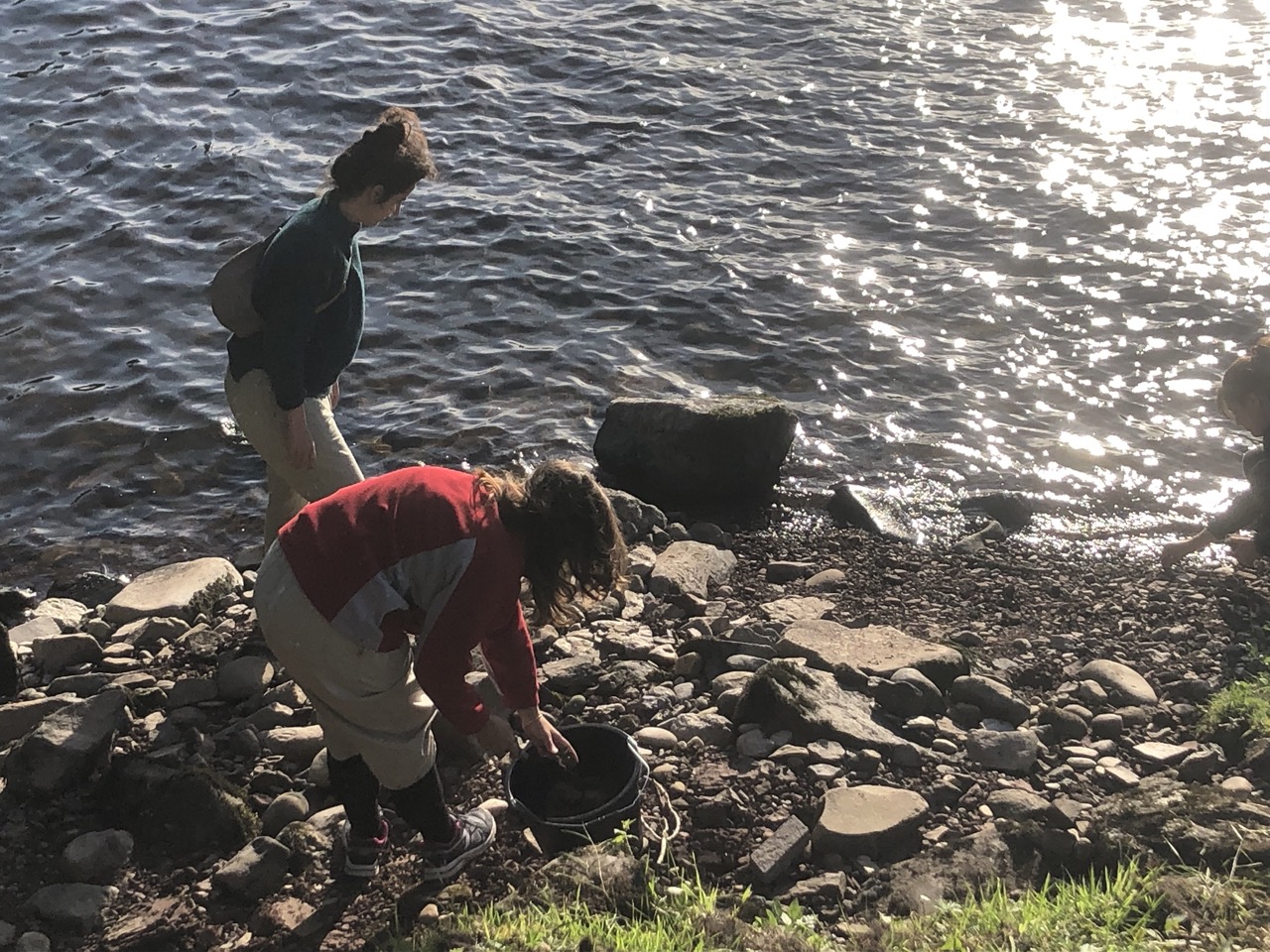
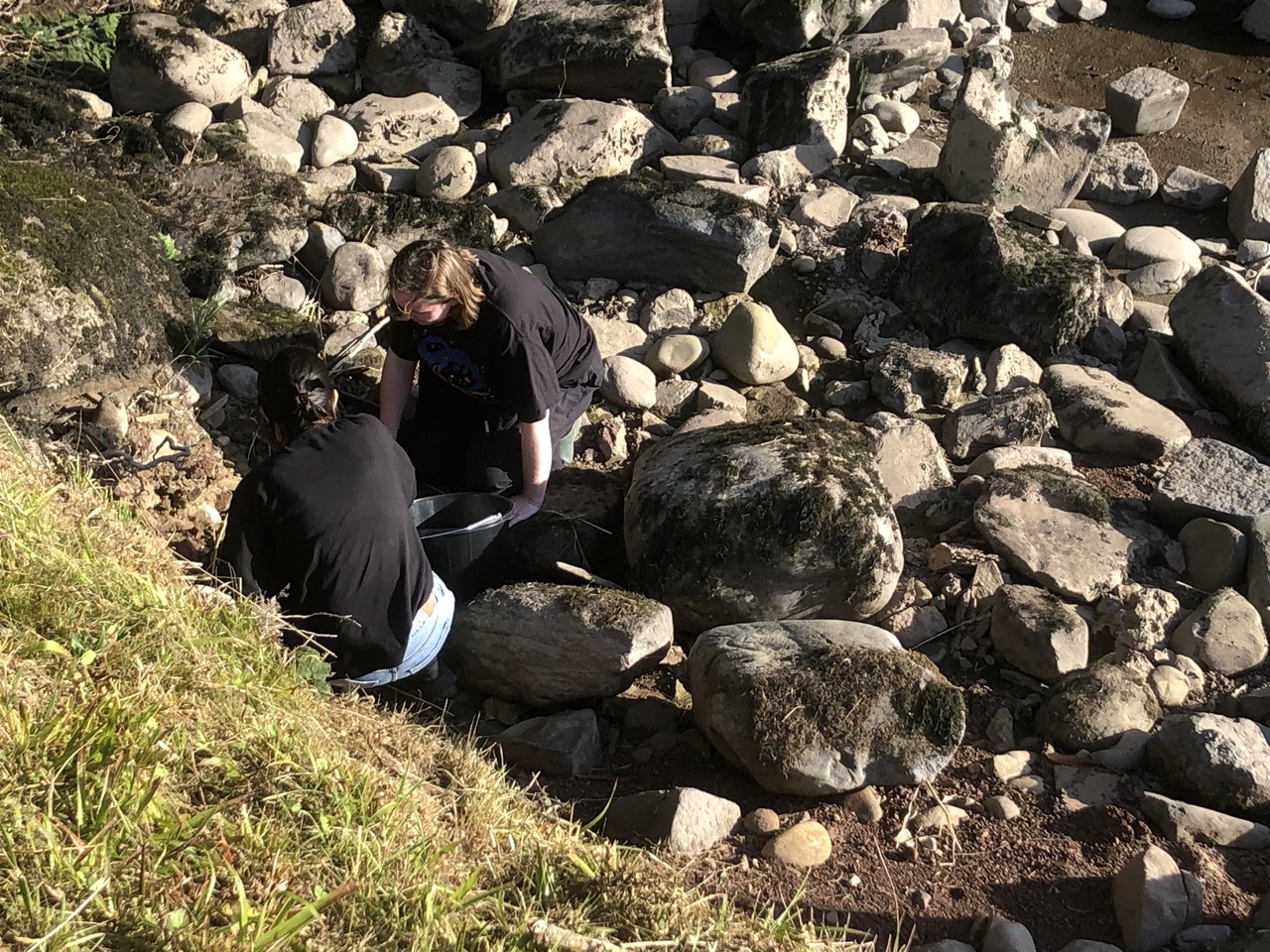
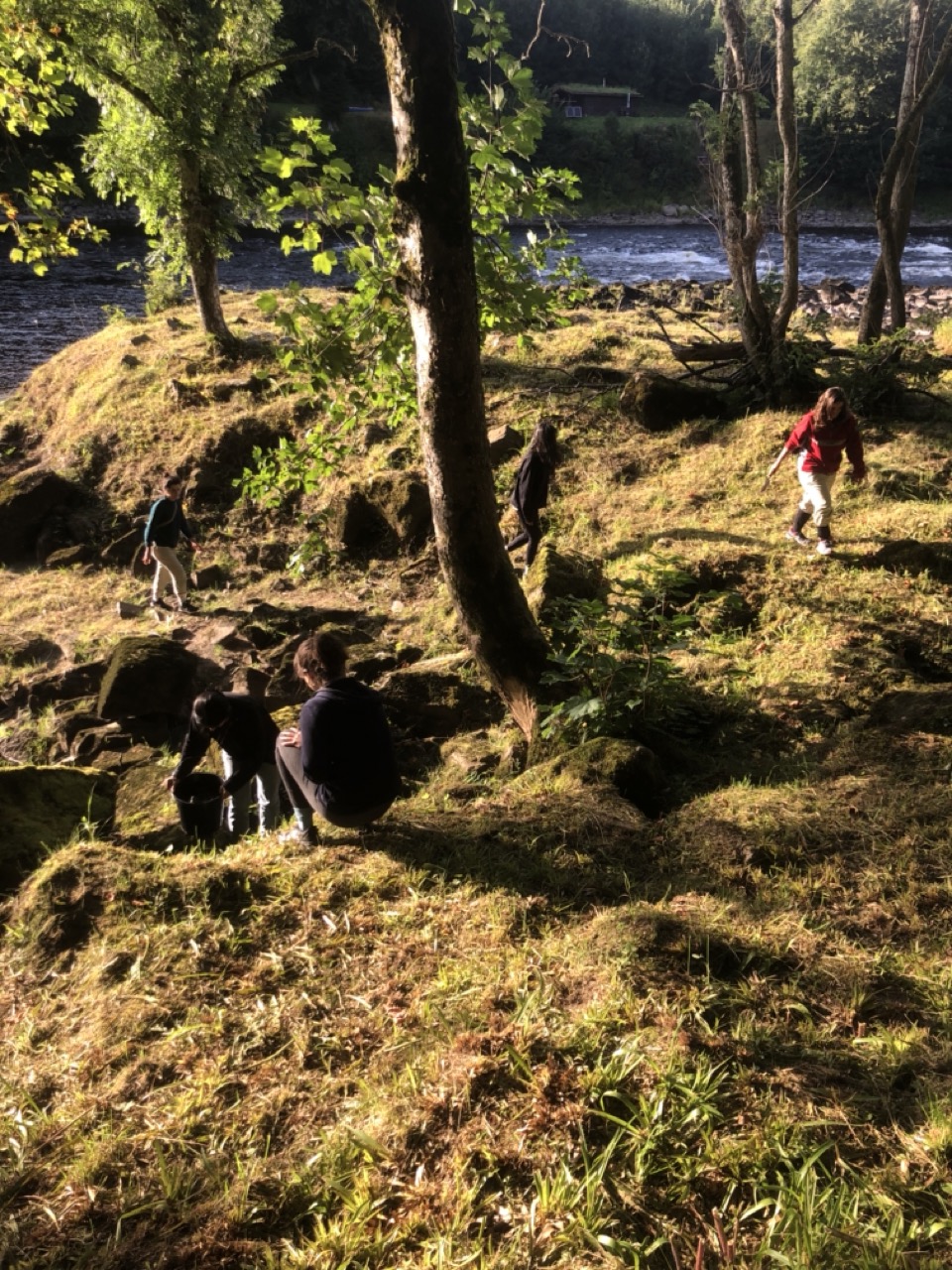

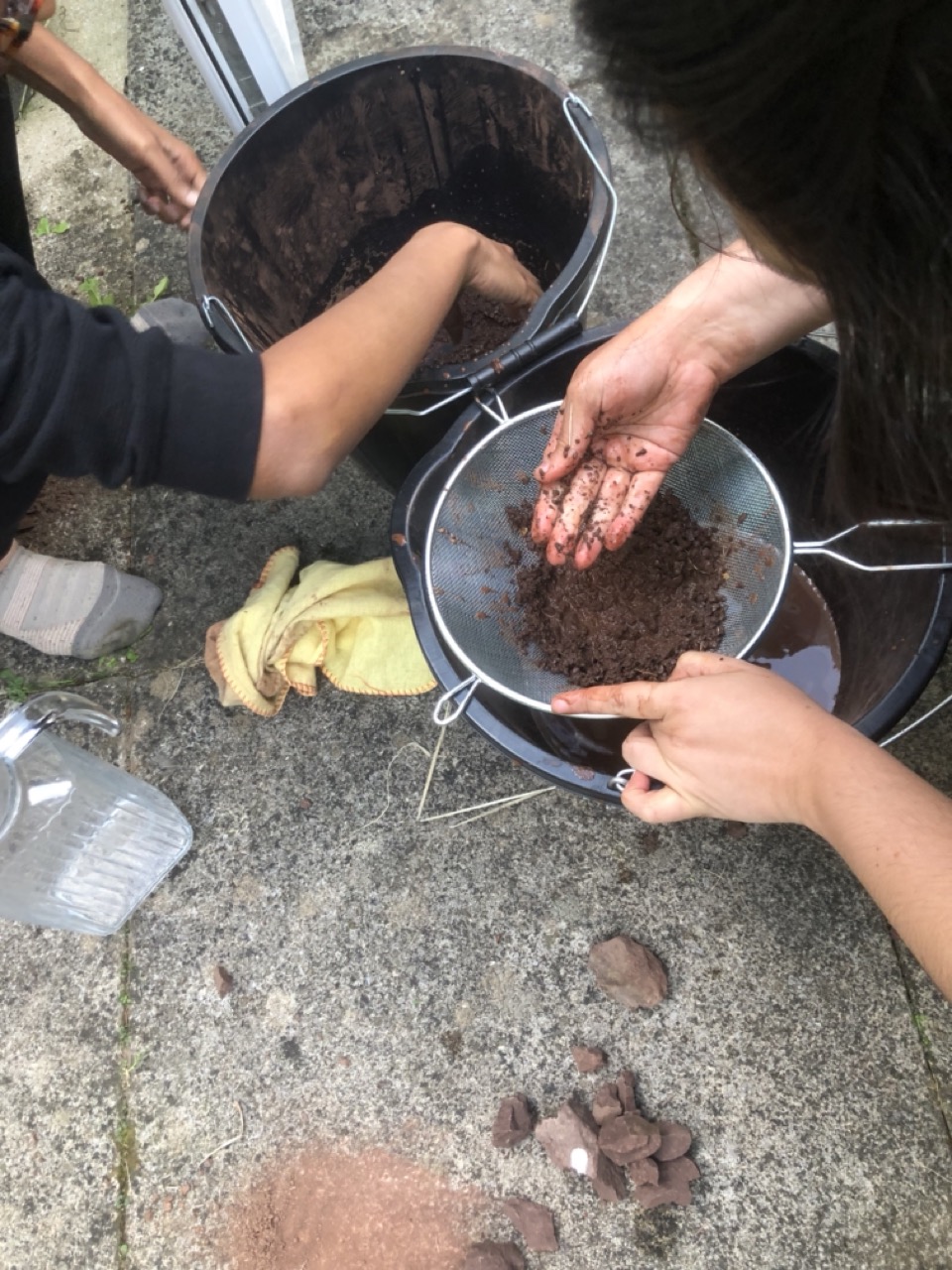

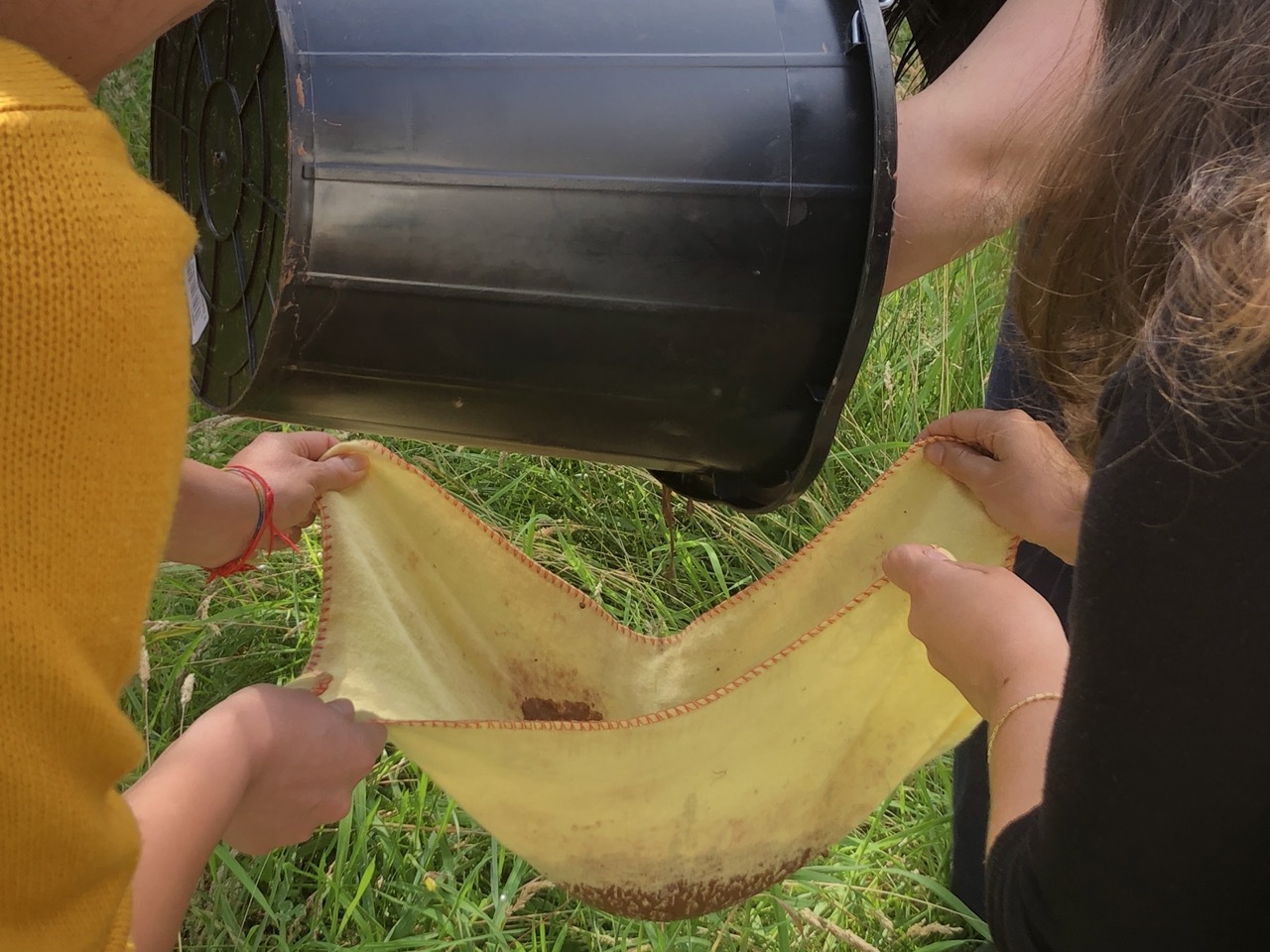
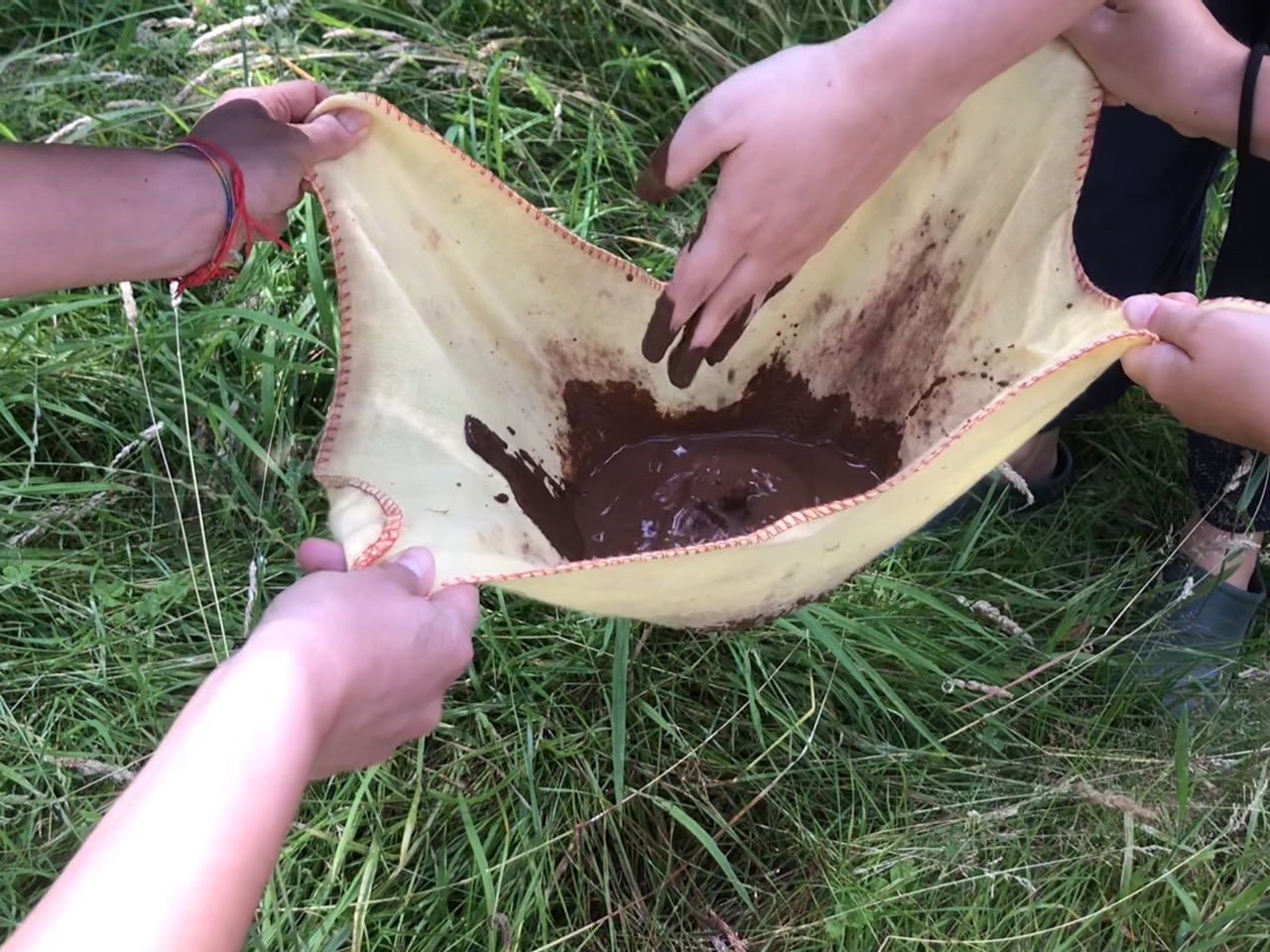
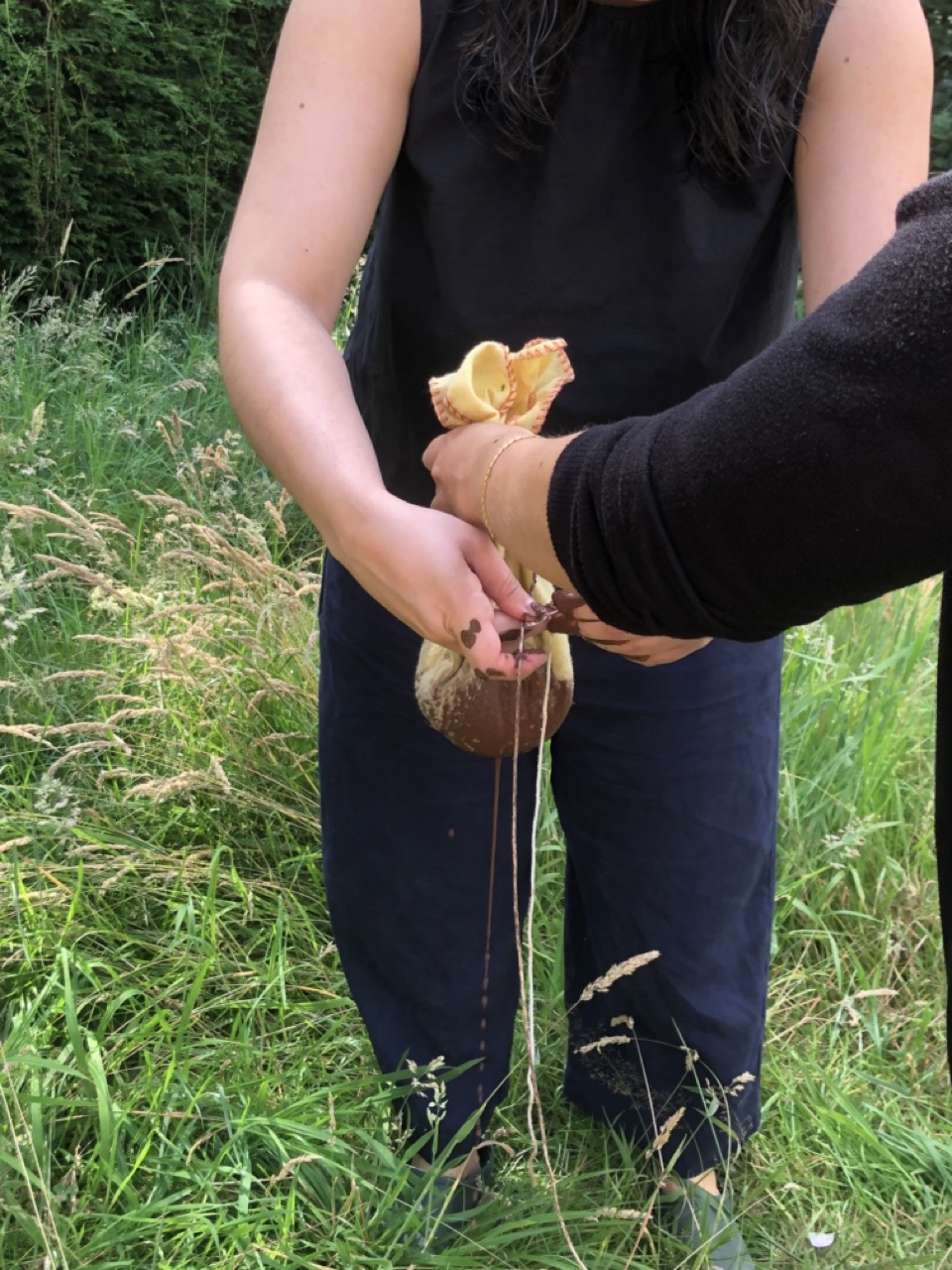
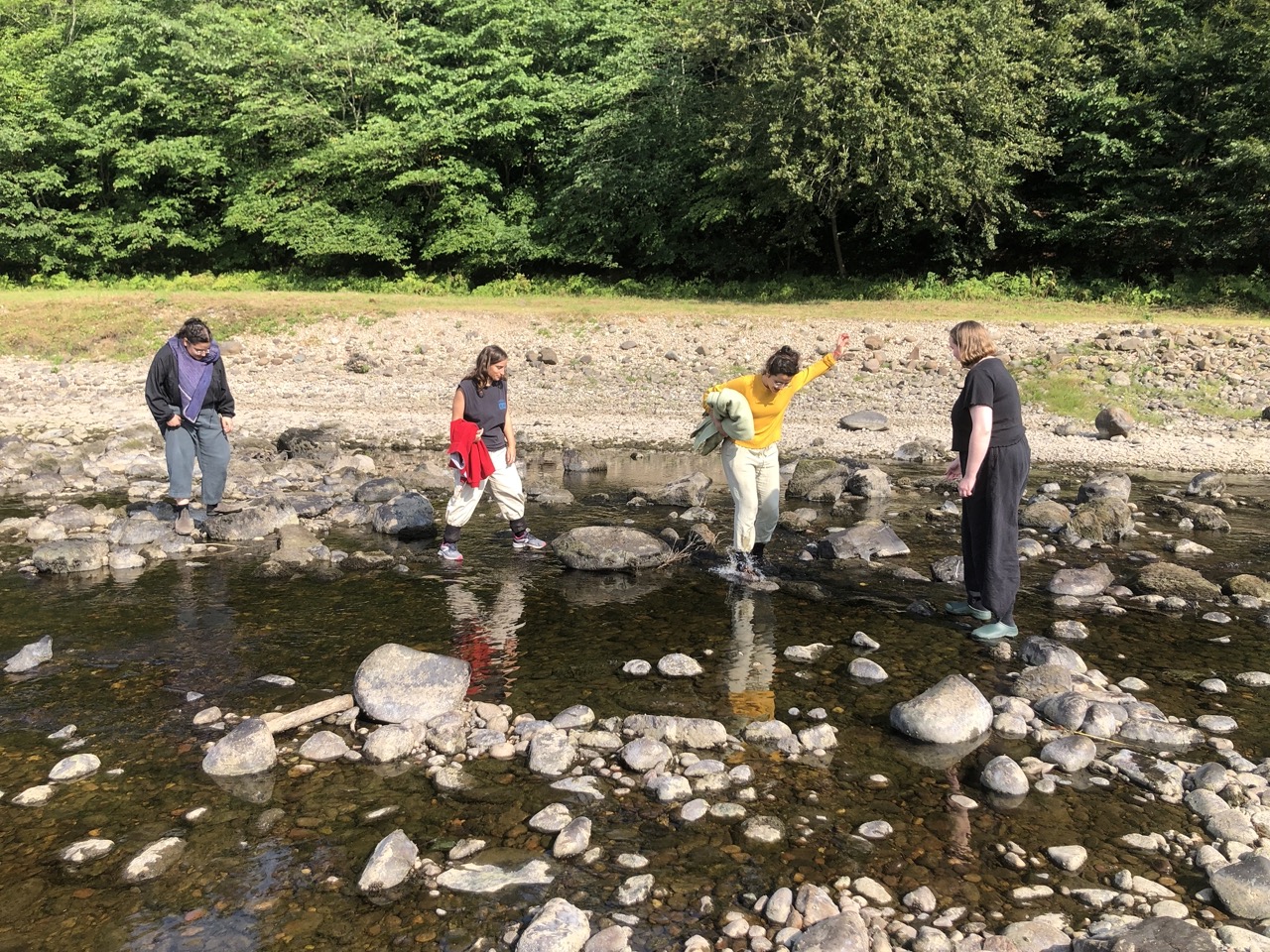
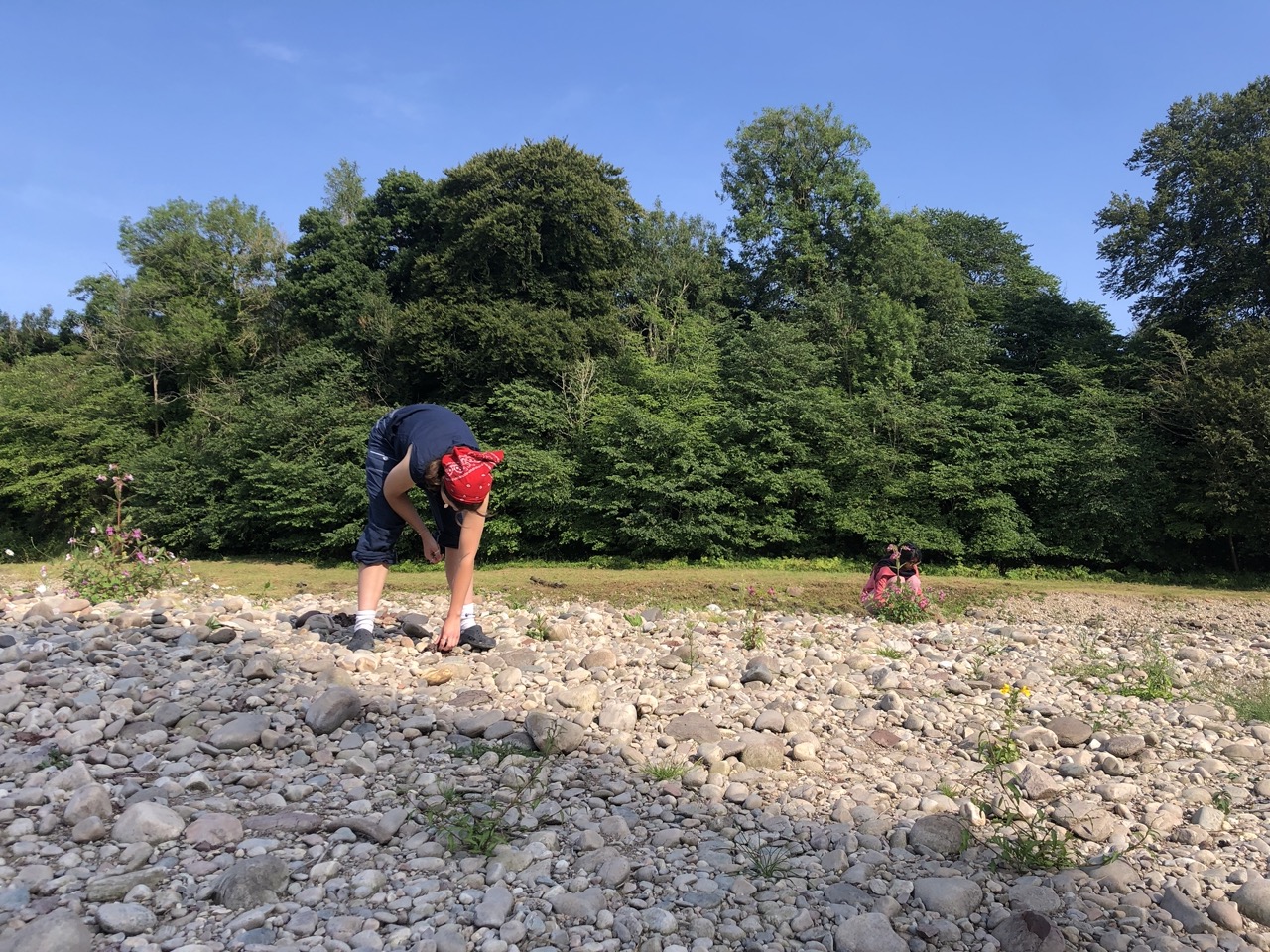
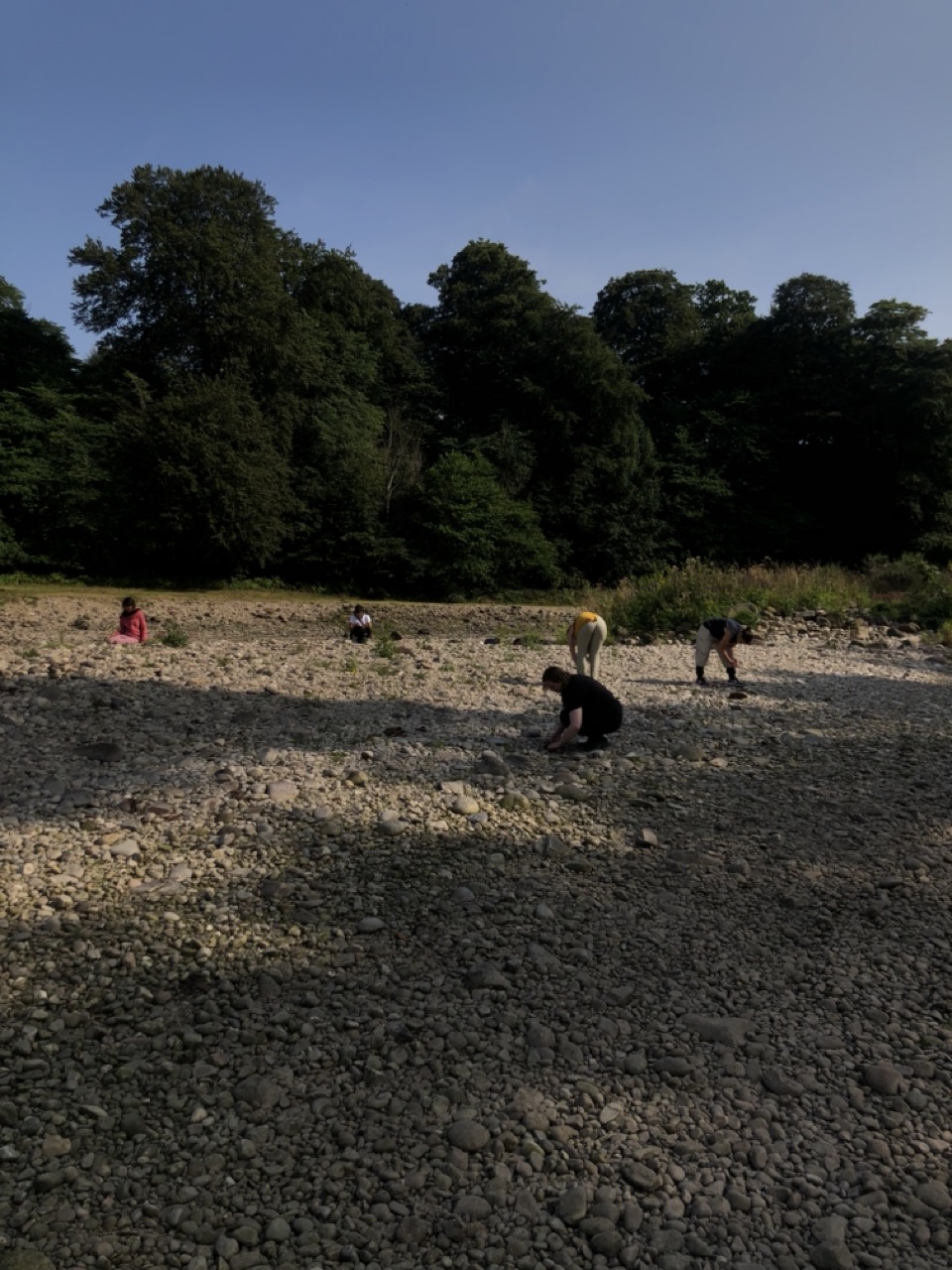
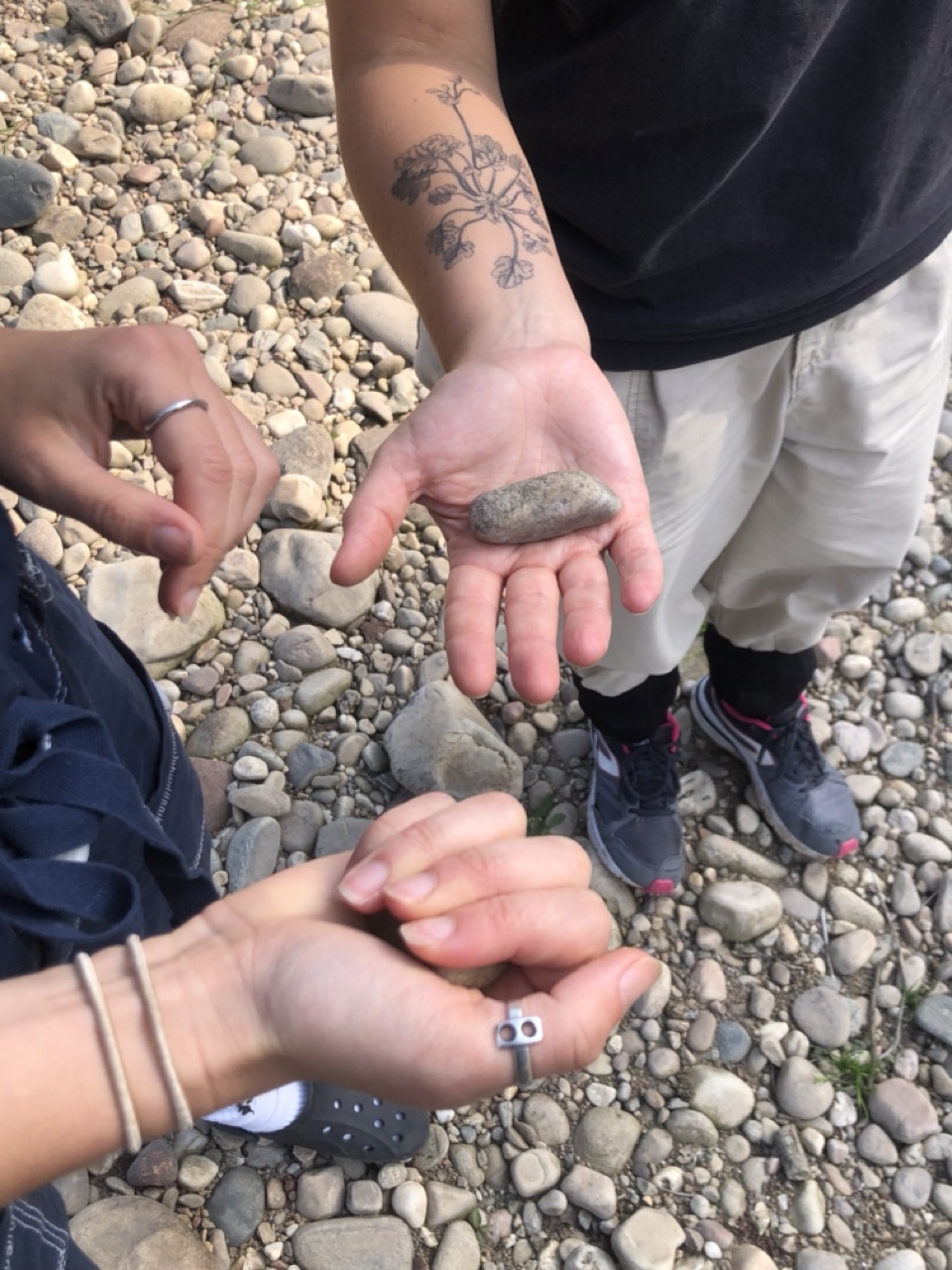

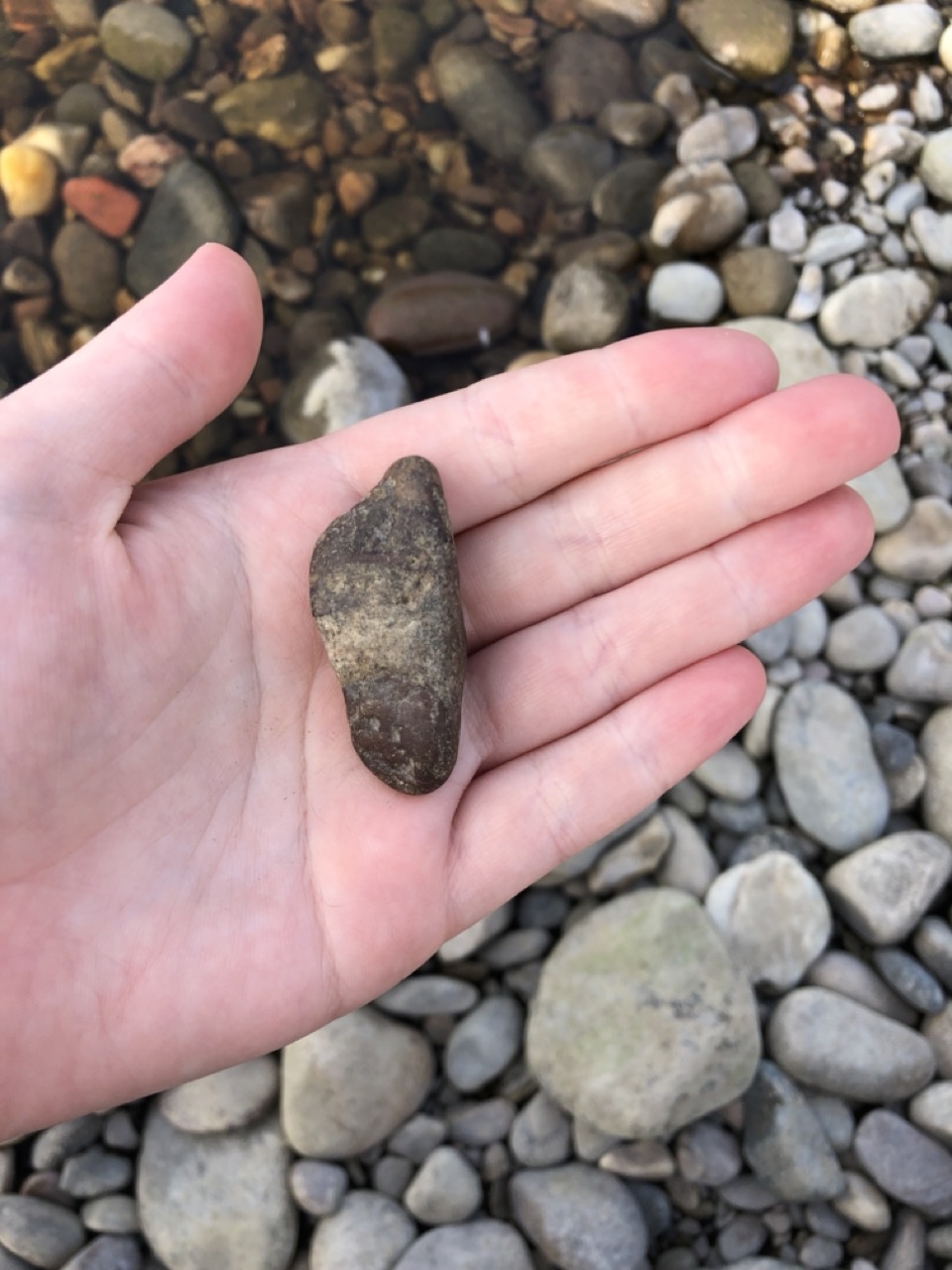


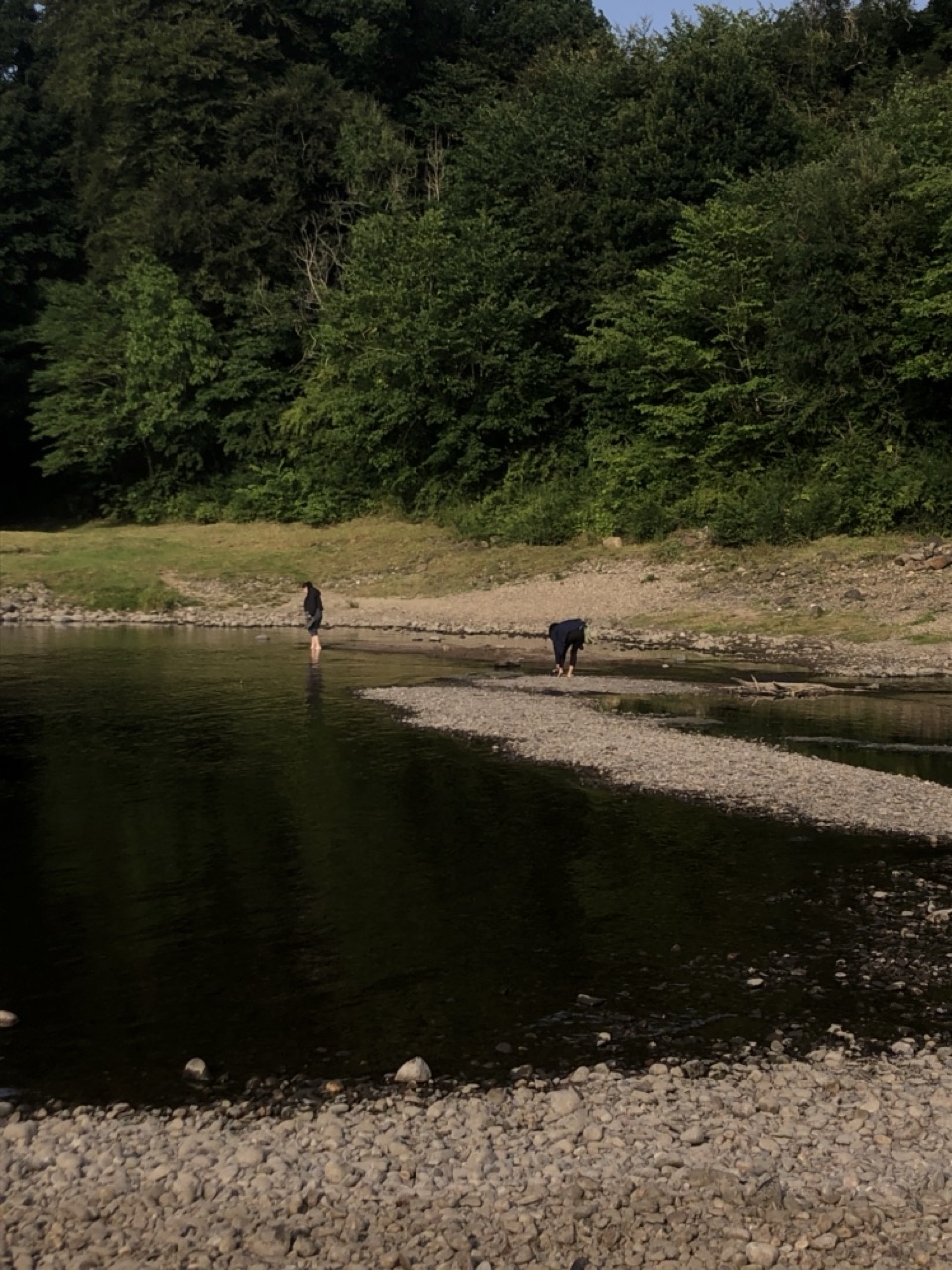
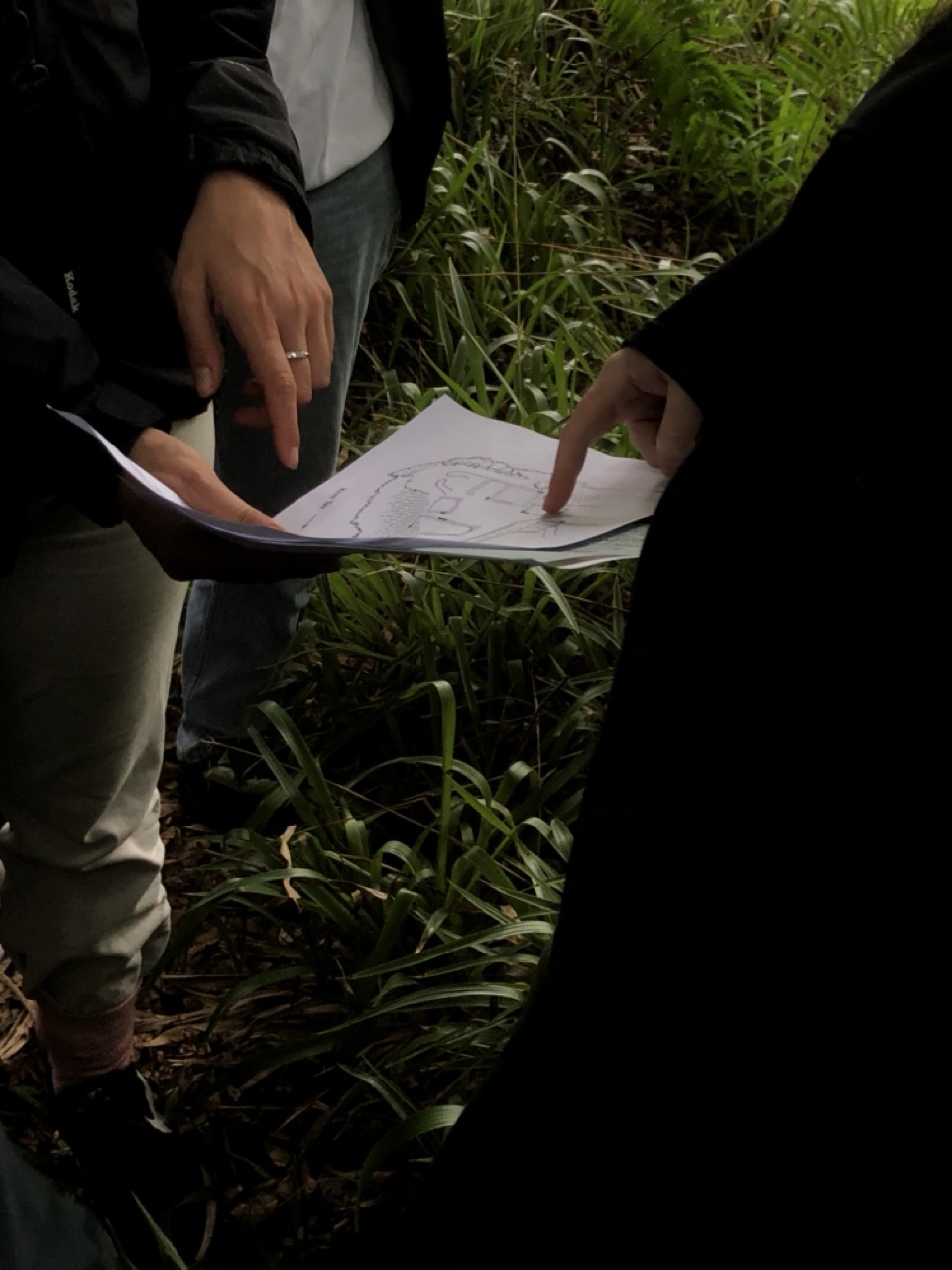
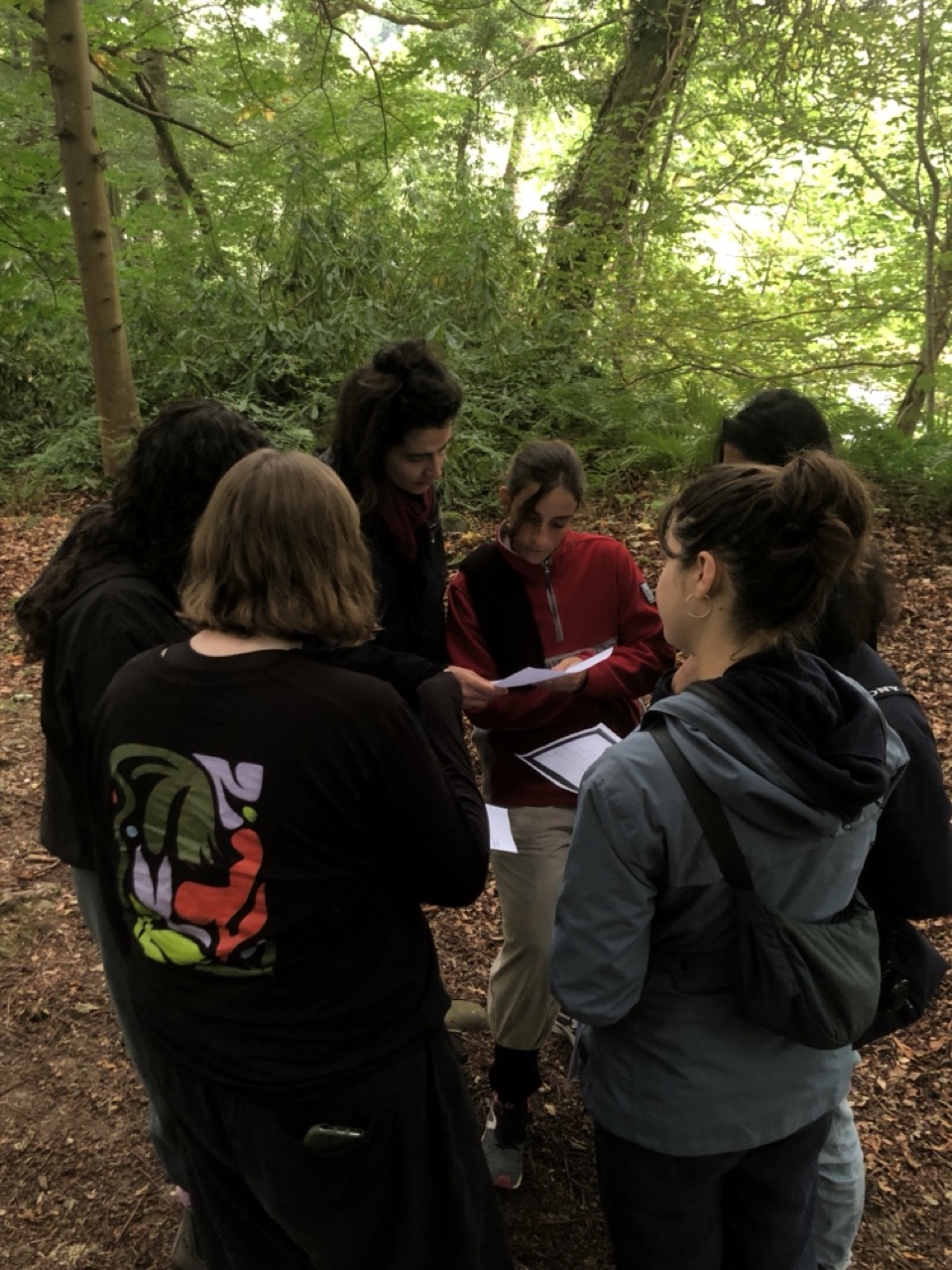

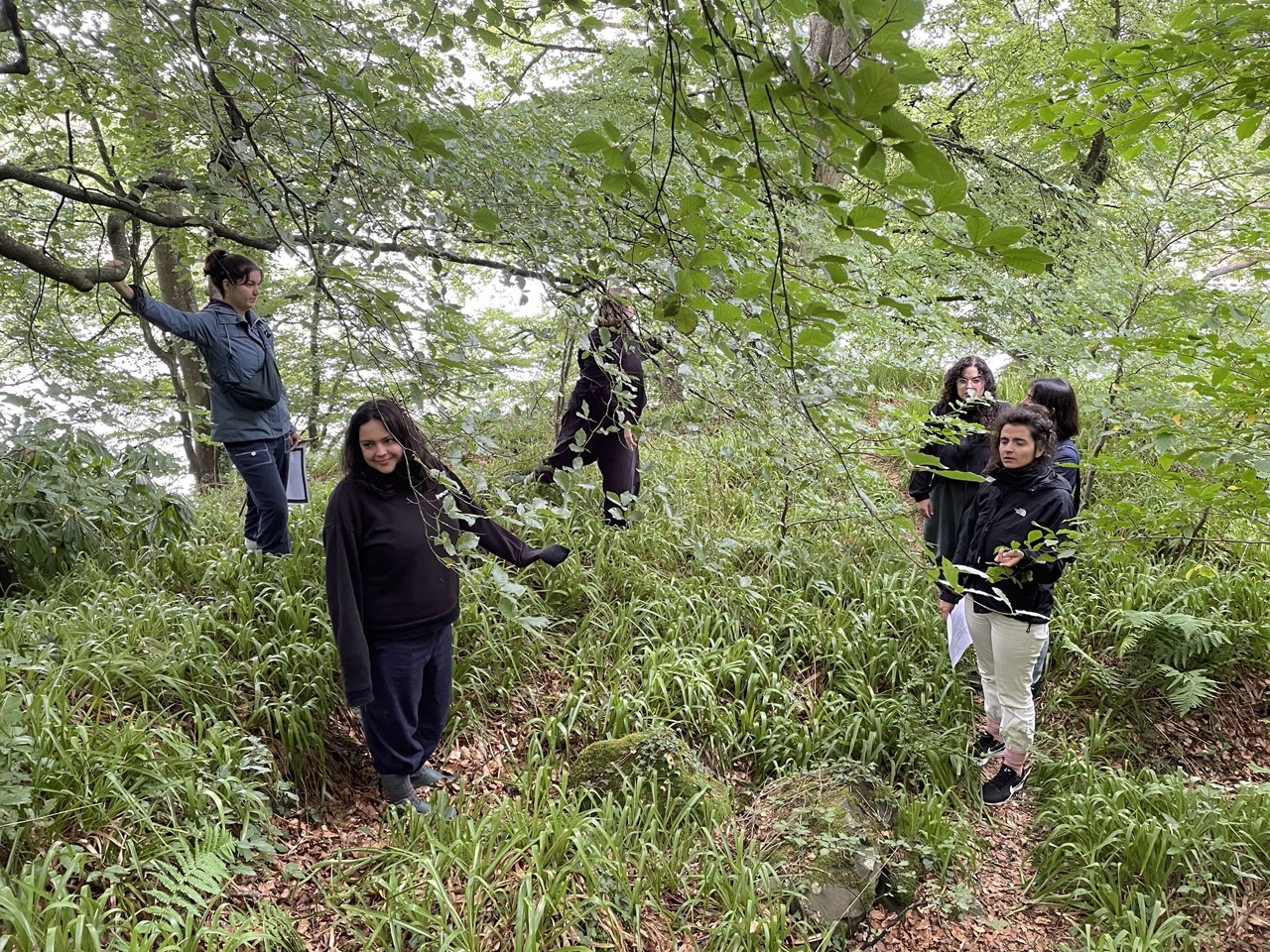





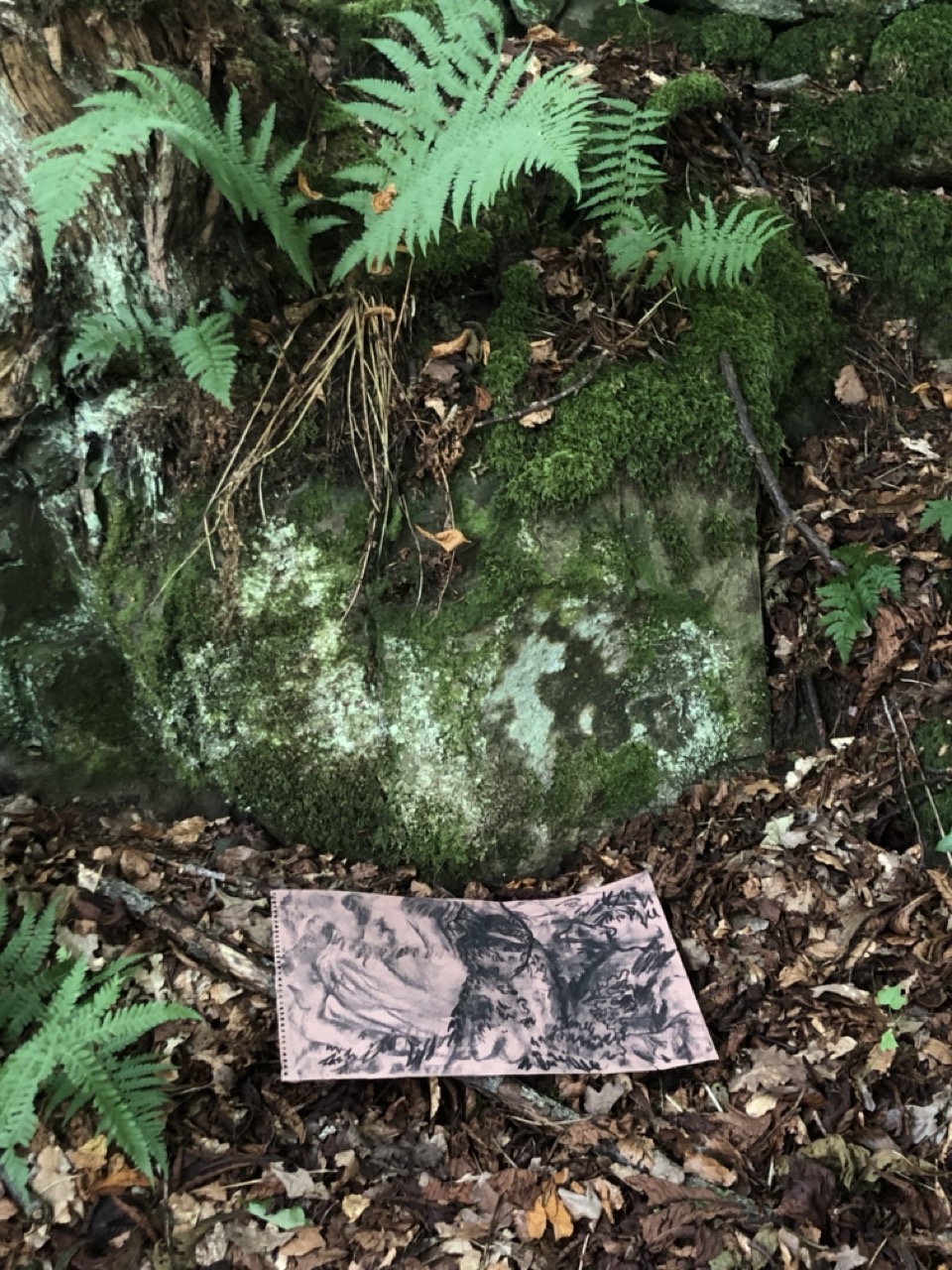
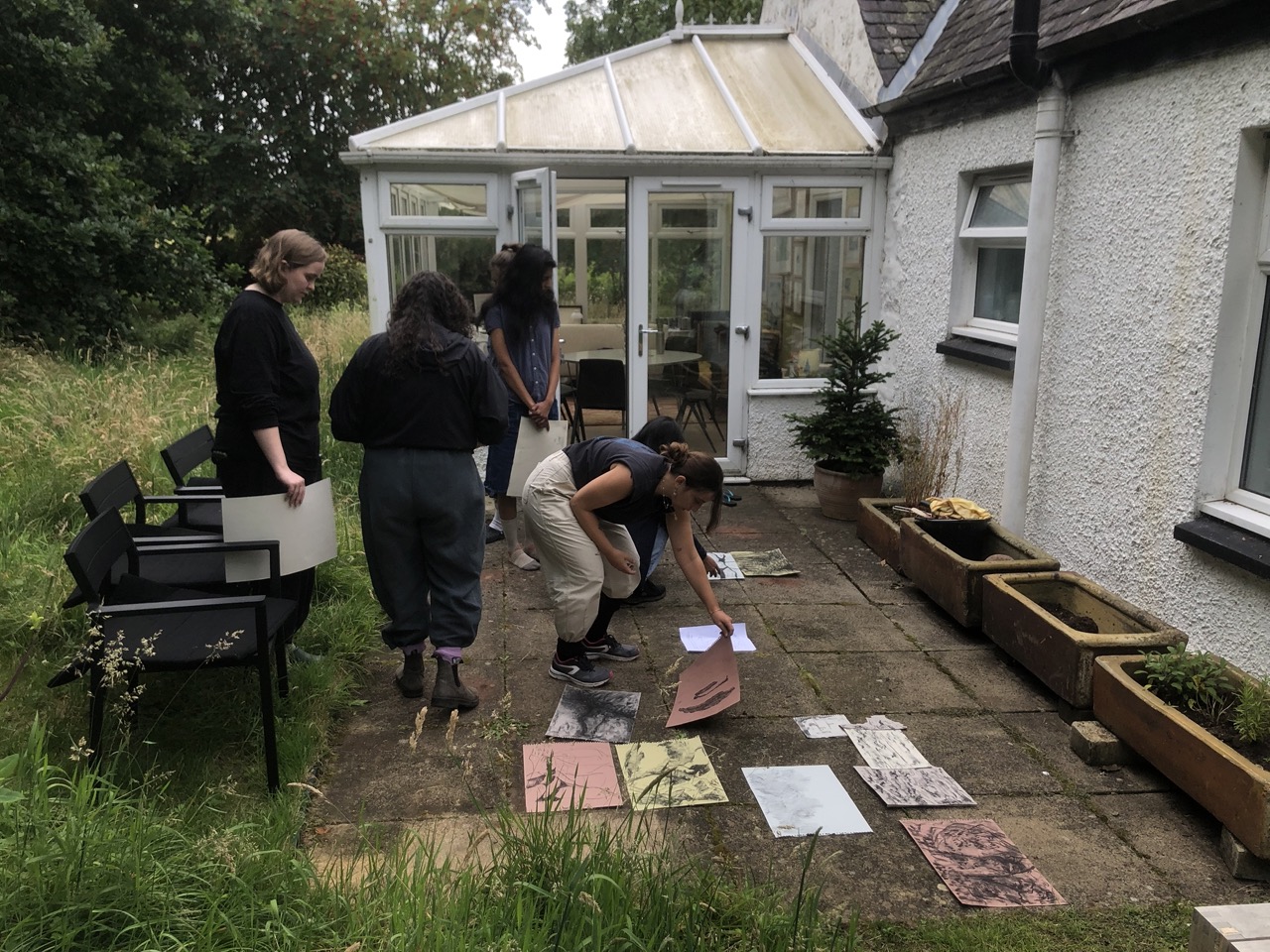


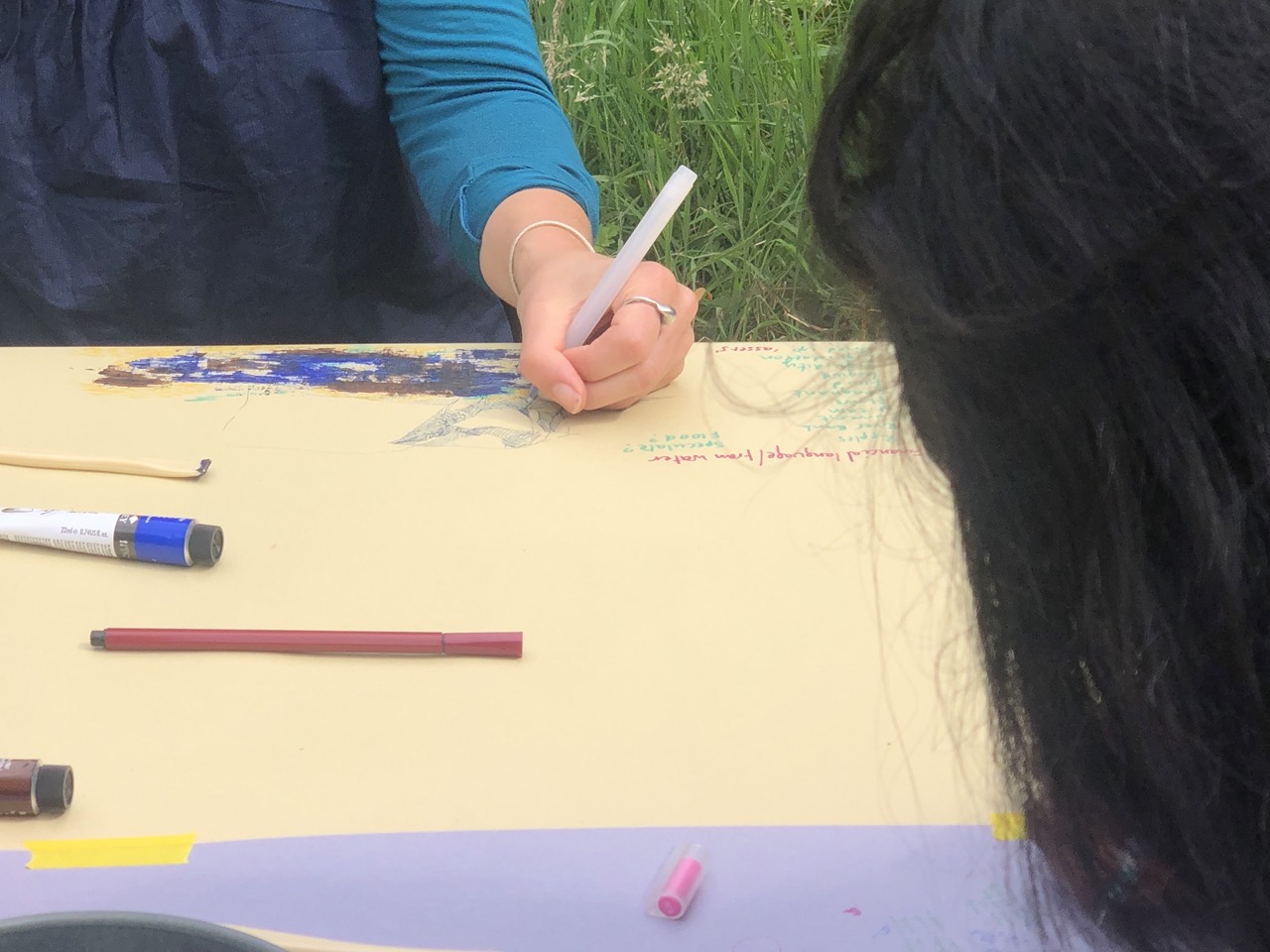
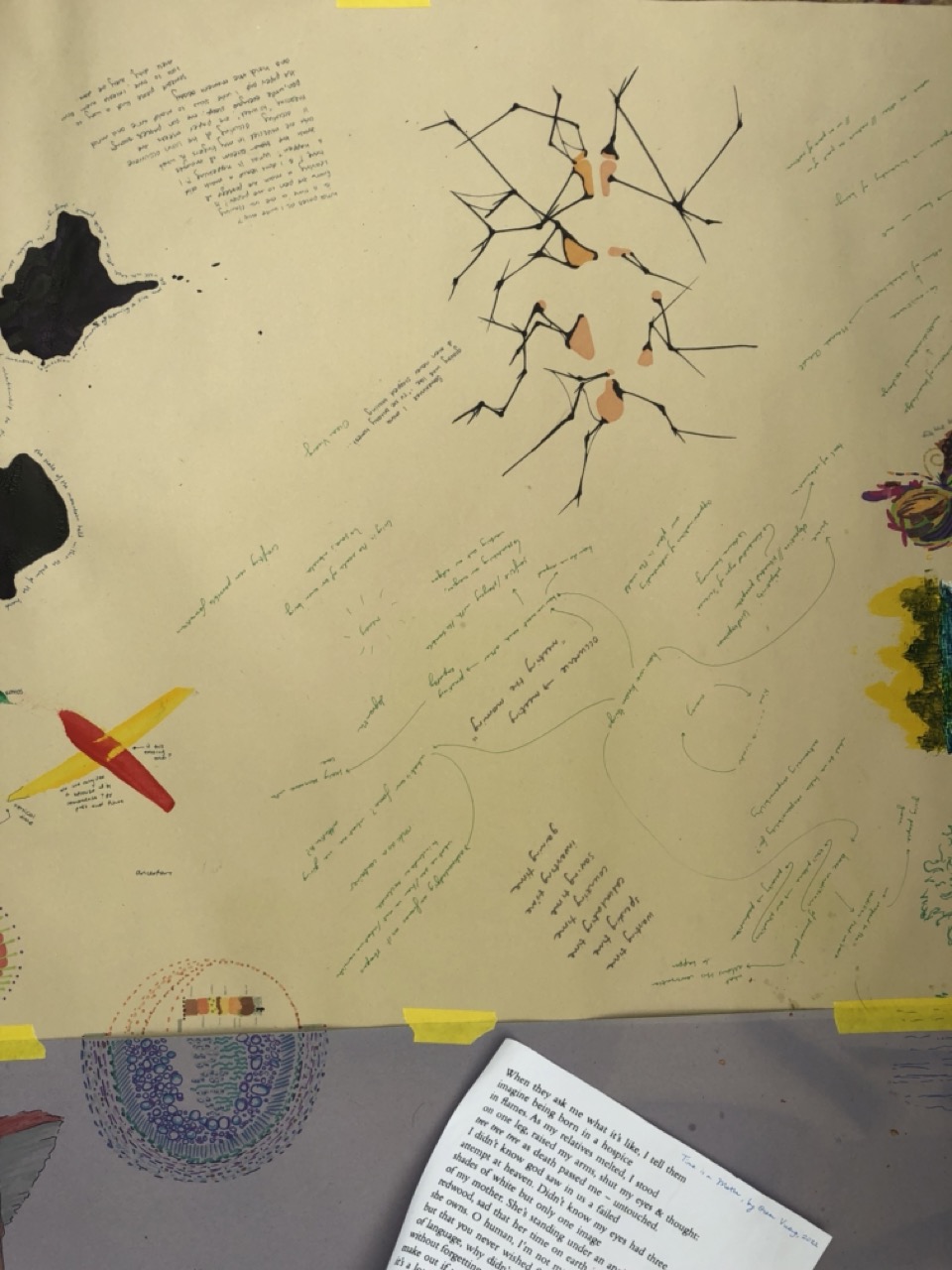
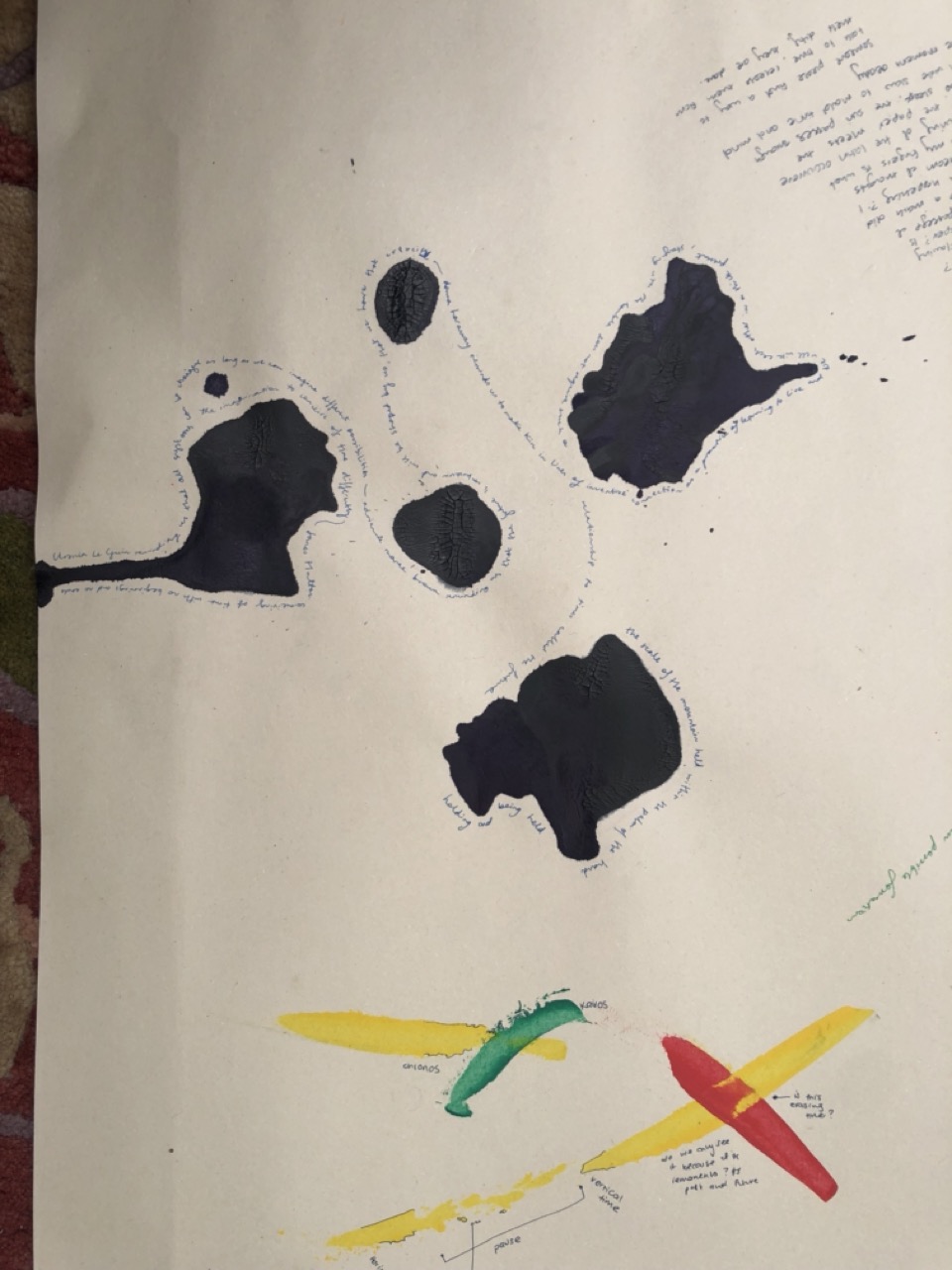
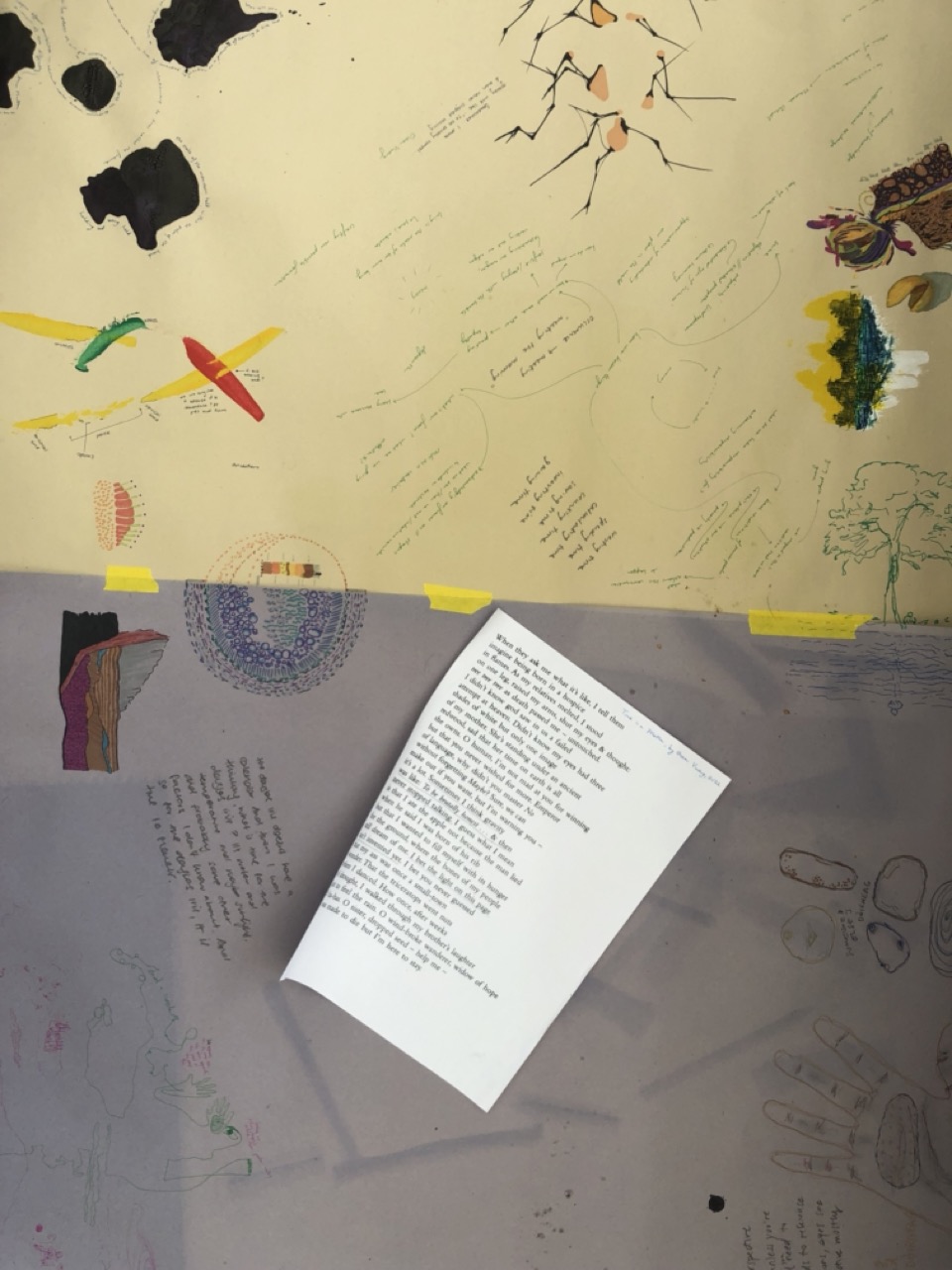
summer pools: DÒIRNEAG
Perthshire, Esocia | 2024
En colaboración con Eloise Maltby Maland.
summer pools es un programa anual autogestionado enfocado en prácticas artísticas y espaciales. A través de metodologías situadas y pedagogías multidireccionales, exploramos a lo largo de una semana, temas relacionados con ecologías, lenguaje y territorio.
El proyecto nació de conversaciones sobre la necesidad de replantear modelos de práctica colectiva. Cada año regresamos a Perthshire, donde tomamos prestada una palabra del entorno local que inspira y guía los talleres. Durante una semana, nos reunimos para reflexionar, crear y compartir conocimientos y habilidades, fomentando una experiencia de aprendizaje compartido.
-
En esta edición prestamos la palabra gaélica dòirneag, que significa ‘una piedra redonda que cabe en la mano’, para reflexionar sobre las temporalidades del cuerpo y la roca. Desde nuestra posición sobre una línea de roca ígnea formada hace más de 300 millones de años, exploramos cuatro escalas de piedra presentes en el territorio, con enfoques conceptuales, contextuales, sensoriales y materiales:
Sobre el dique, donde leímos junt+s teoría, poesía, diccionarios científicos, entradas de blogs y correos electrónicos sobre rocas y el tiempo.
Entre los muros, donde reflexionamos sobre la reorganización
de fragmentos en estructuras de piedra construidas por humanos, y
el parcelamiento de la tierra como forma de protección y división. Figuramos mapas, documentos y notas del sitio, y descubrimos restos de piedra de un monasterio del siglo XII.
Entre las piedras de río, encontramos nuestras propias dòirneags, seguido de una meditación guiada y un ejercicio donde nombramos estas piedras desde lo observado/afectivo.
Con la arcilla, recolectamos y procesamos lutita local, arcilla acumulada a lo largo del río sobre el tiempo.
Estos talleres dieron lugar a un mapeo colectivo y a escritos individuales que actualmente estamos reuniendo y reformulando en un fanzine.
¡Muchas gracias Bansi, Francesca, Leonie, Montse, Nicolette, Shivani!
-
Seguí el proyecto con más profundidas a través de nuestra cuenta de instagram @summer__pools
Perthshire, Scotland | 2024
In collaboration with Eloise Maltby Maland.
summer pools is a yearly week-long, self-organised arts and spatial practice programme. We explore ecologies, languages and our implicated bodies, through situated methodologies and a multidirectional approach to learning.
The project was born out of conversations about a need and yearning to think through alternative models of collective practice. Each year we return to Perthshire where we borrow a word relating to its landscapes that frames the workshops of the programme. Together, over the week, we think, make and share knowledges and skills.
-
In this edition we borrowed from the gaelic word dòirneag, meaning 'a round stone that fills the hand when held', thinking through temporalities of the body and the rock. Delving into our position on a line of igneous bedrock formed over 300 million years ago, we approached the site through four scales of stone across the landscape, with conceptual, contextual, sensorial, and material approaches in relation to the site:
On the dyke, where we read together theory, poetry, scientific dictionaries, blog entries and emails on rocks and time.
Between the walls, thinking through rearrangement of fragments, human-made stone structures, parceling of land as protection and division. We pieced together maps, documents and notes around the site and found stone remains of an XII century abbey.
With the pebbles, where we found our particular dòirneags, followed by a guided meditation and an exercise where we named the stones from affective/careful observation.
With the clay, collecting and processing local mudstone, accumulated clay settled along the river over time.
These workshops informed collective mind-mapping and individual writing that we are currently bringing together as zine.
Thank you Bansi, Francesca, Leonie, Montse, Nicolette, Shivani!
-
Follow the project in more depth through our instagram account @summer__pools
summer pools is a yearly week-long, self-organised arts and spatial practice programme. We explore ecologies, languages and our implicated bodies, through situated methodologies and a multidirectional approach to learning.
The project was born out of conversations about a need and yearning to think through alternative models of collective practice. Each year we return to Perthshire where we borrow a word relating to its landscapes that frames the workshops of the programme. Together, over the week, we think, make and share knowledges and skills.
-
In this edition we borrowed from the gaelic word dòirneag, meaning 'a round stone that fills the hand when held', thinking through temporalities of the body and the rock. Delving into our position on a line of igneous bedrock formed over 300 million years ago, we approached the site through four scales of stone across the landscape, with conceptual, contextual, sensorial, and material approaches in relation to the site:
On the dyke, where we read together theory, poetry, scientific dictionaries, blog entries and emails on rocks and time.
Between the walls, thinking through rearrangement of fragments, human-made stone structures, parceling of land as protection and division. We pieced together maps, documents and notes around the site and found stone remains of an XII century abbey.
With the pebbles, where we found our particular dòirneags, followed by a guided meditation and an exercise where we named the stones from affective/careful observation.
With the clay, collecting and processing local mudstone, accumulated clay settled along the river over time.
These workshops informed collective mind-mapping and individual writing that we are currently bringing together as zine.
Thank you Bansi, Francesca, Leonie, Montse, Nicolette, Shivani!
-
Follow the project in more depth through our instagram account @summer__pools
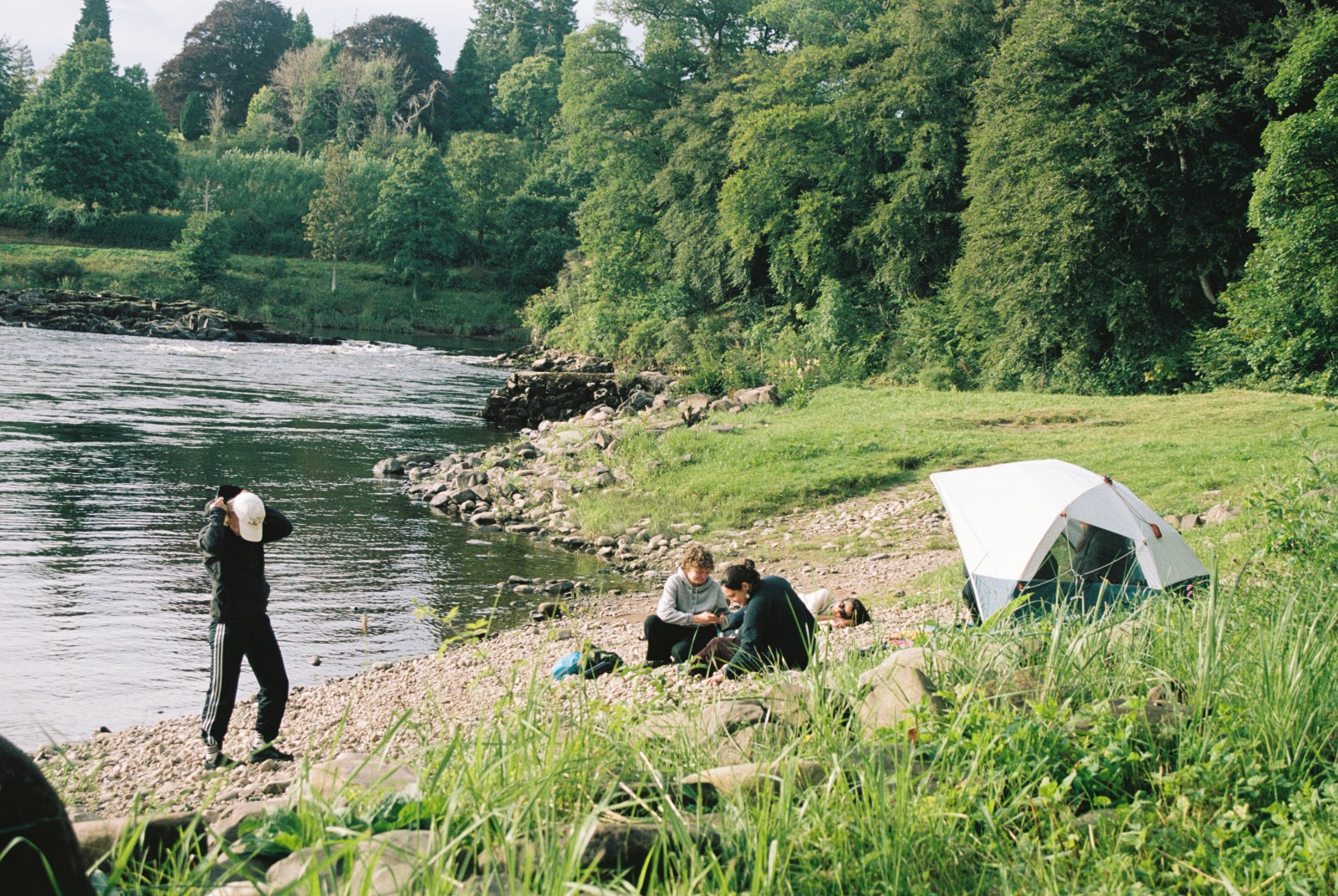
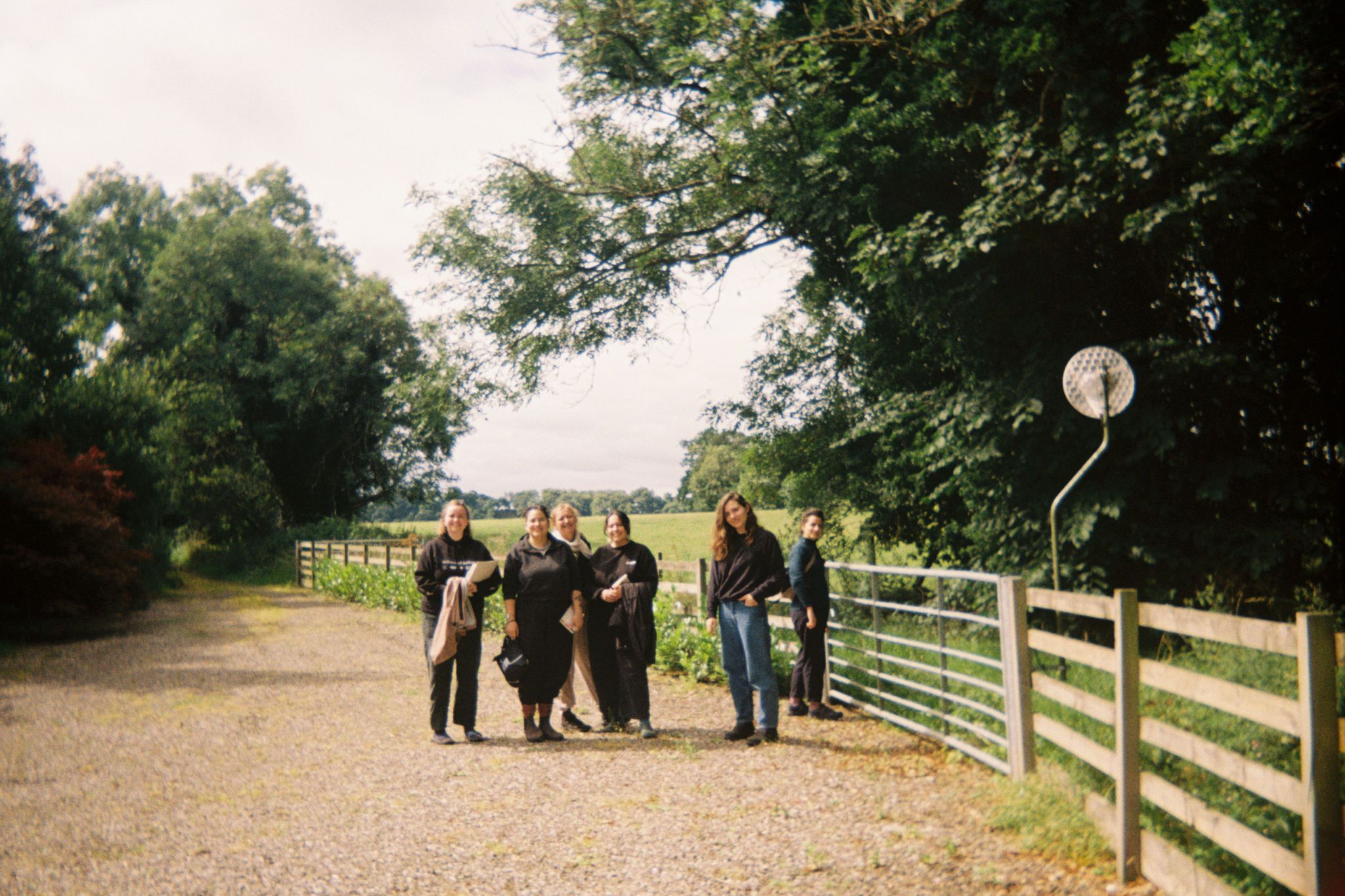
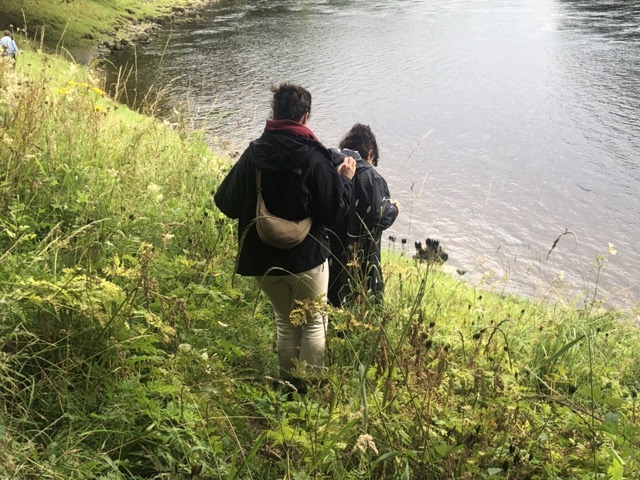


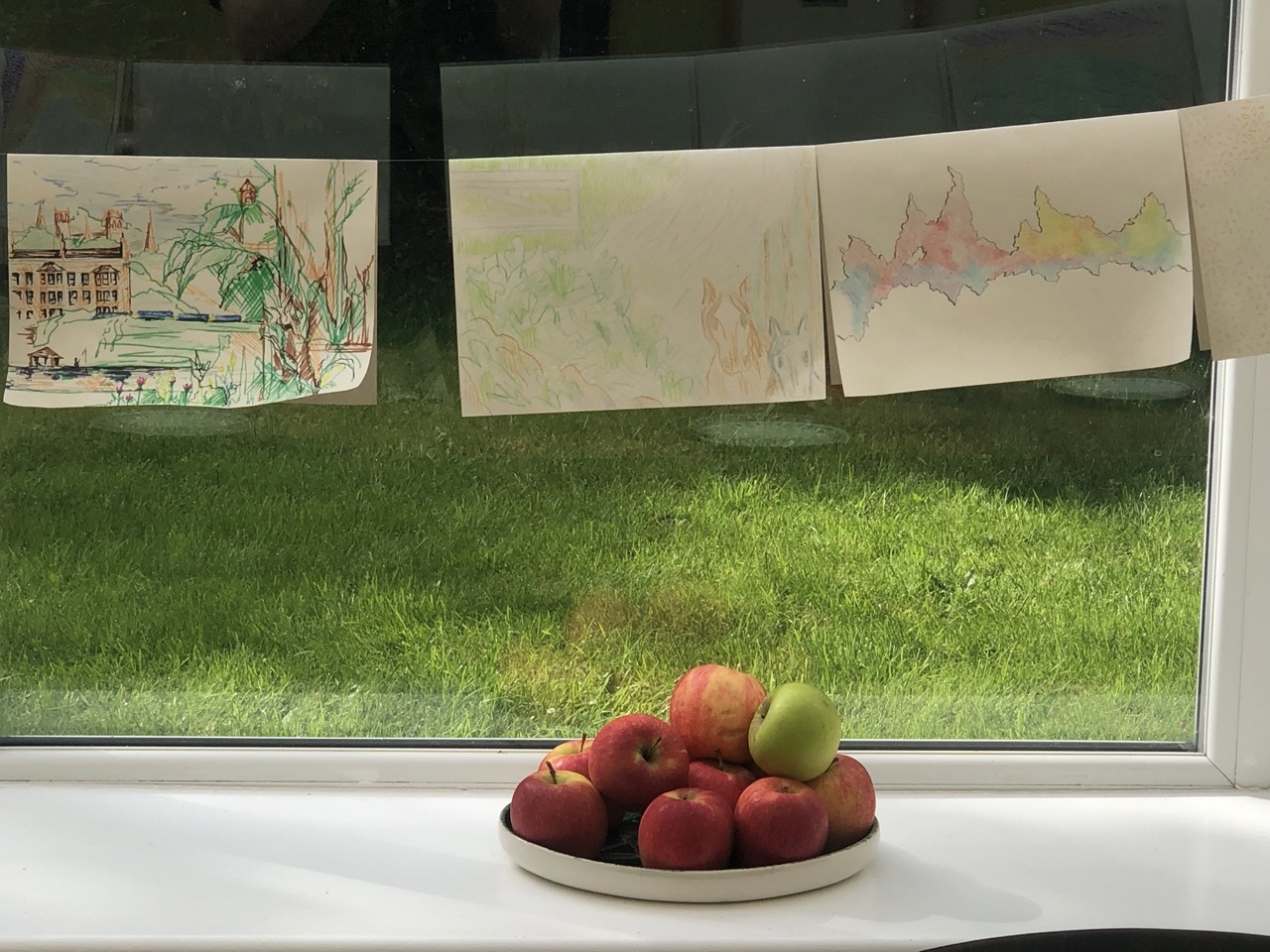

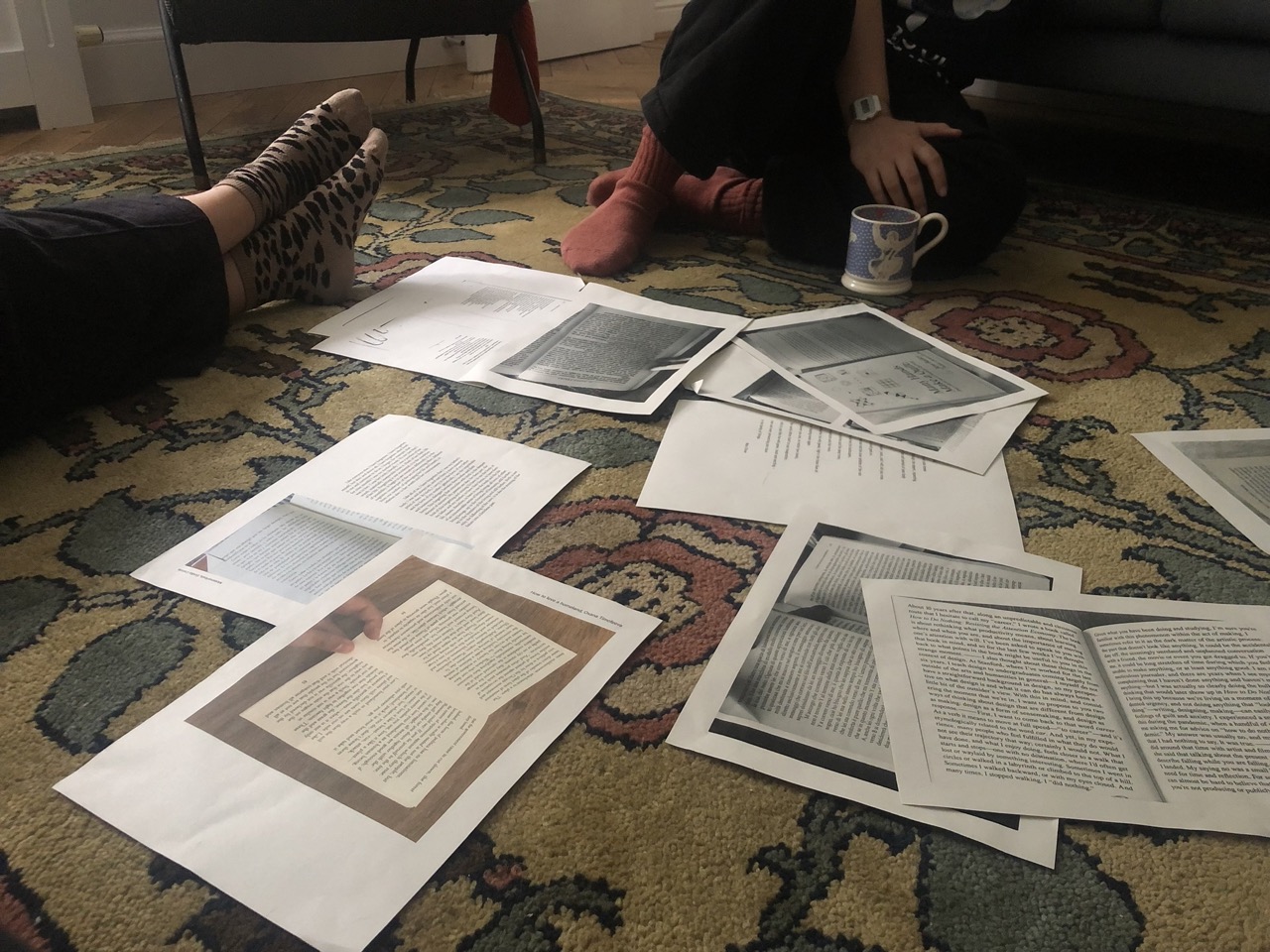
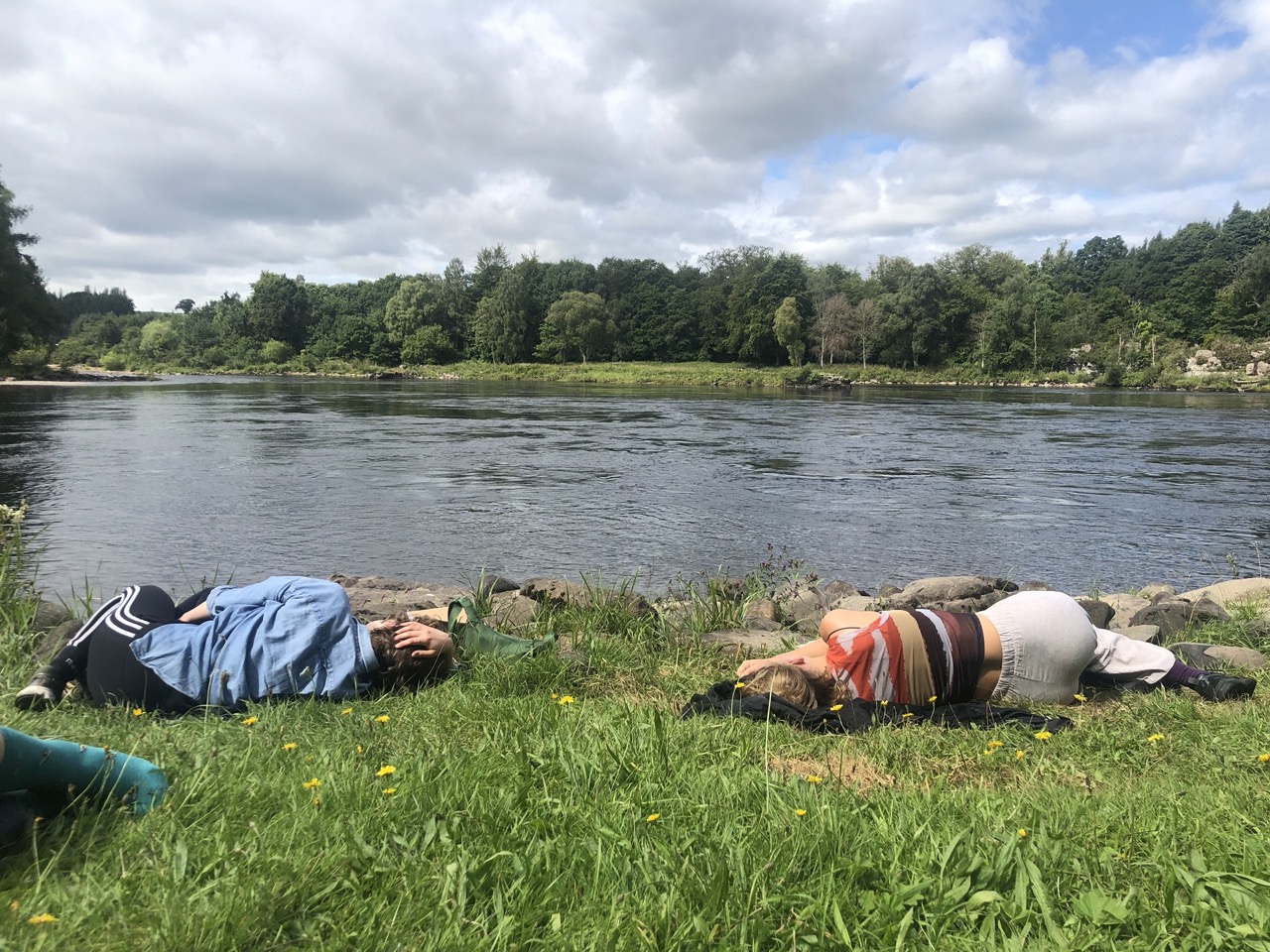
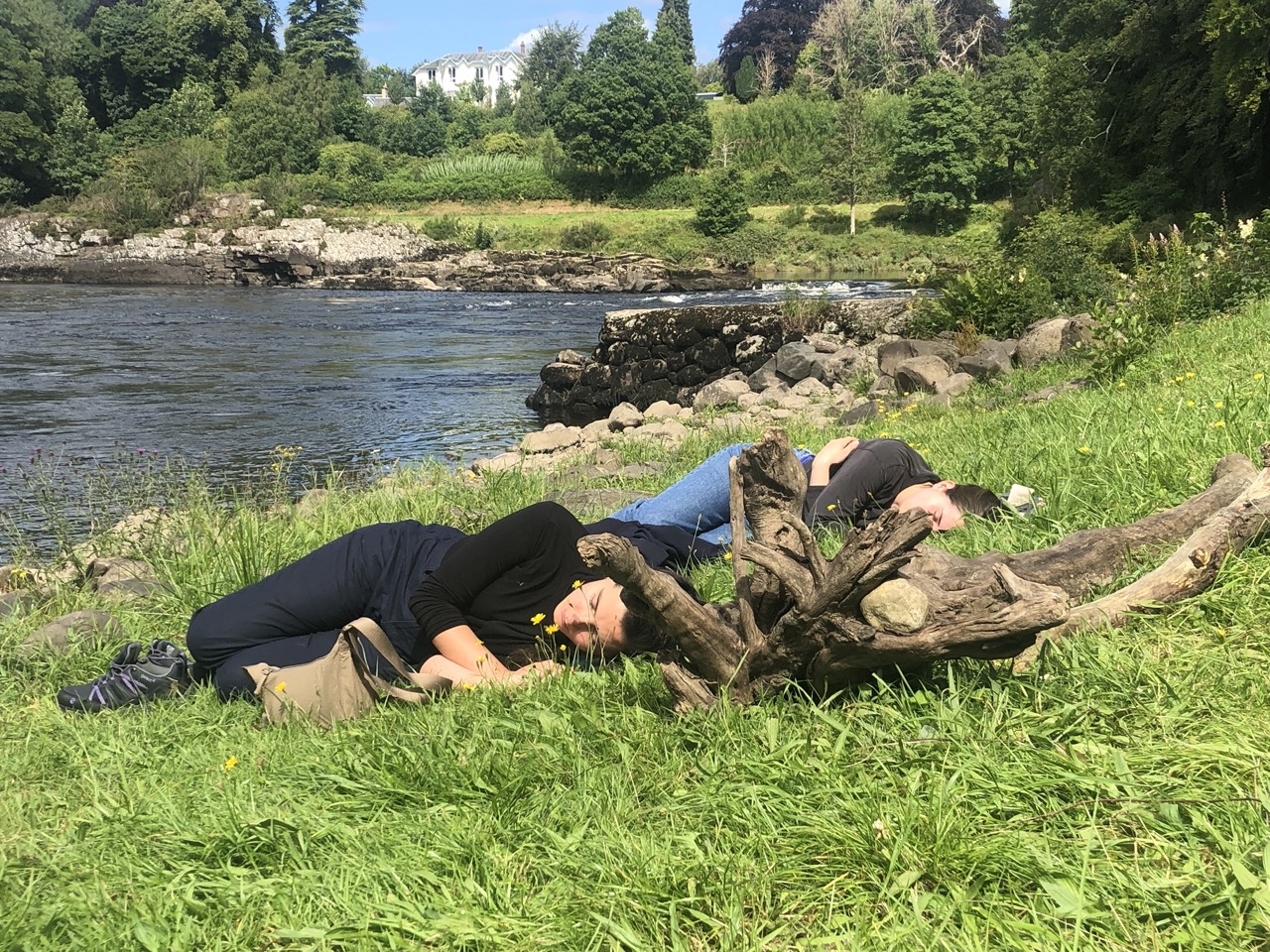
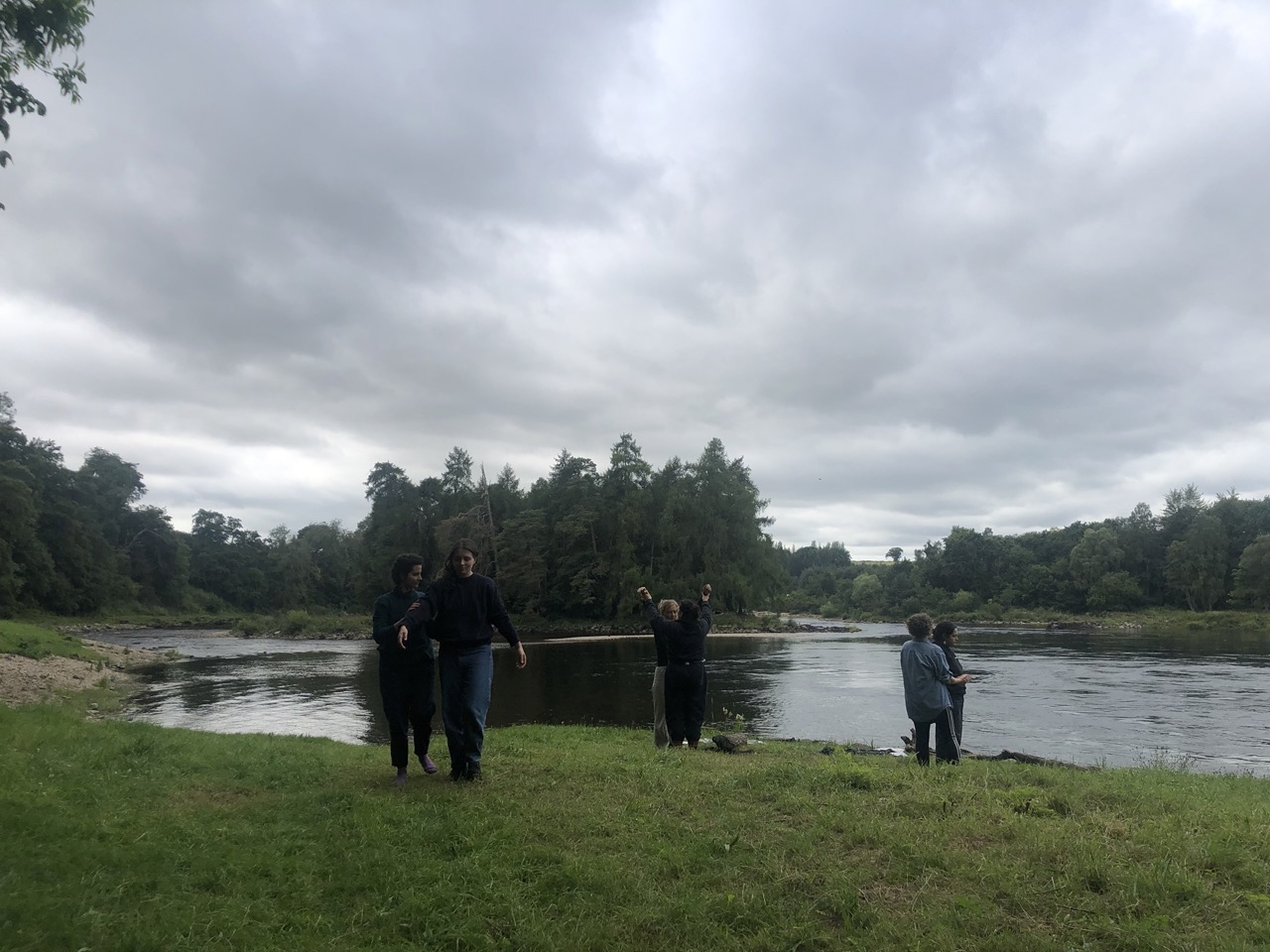
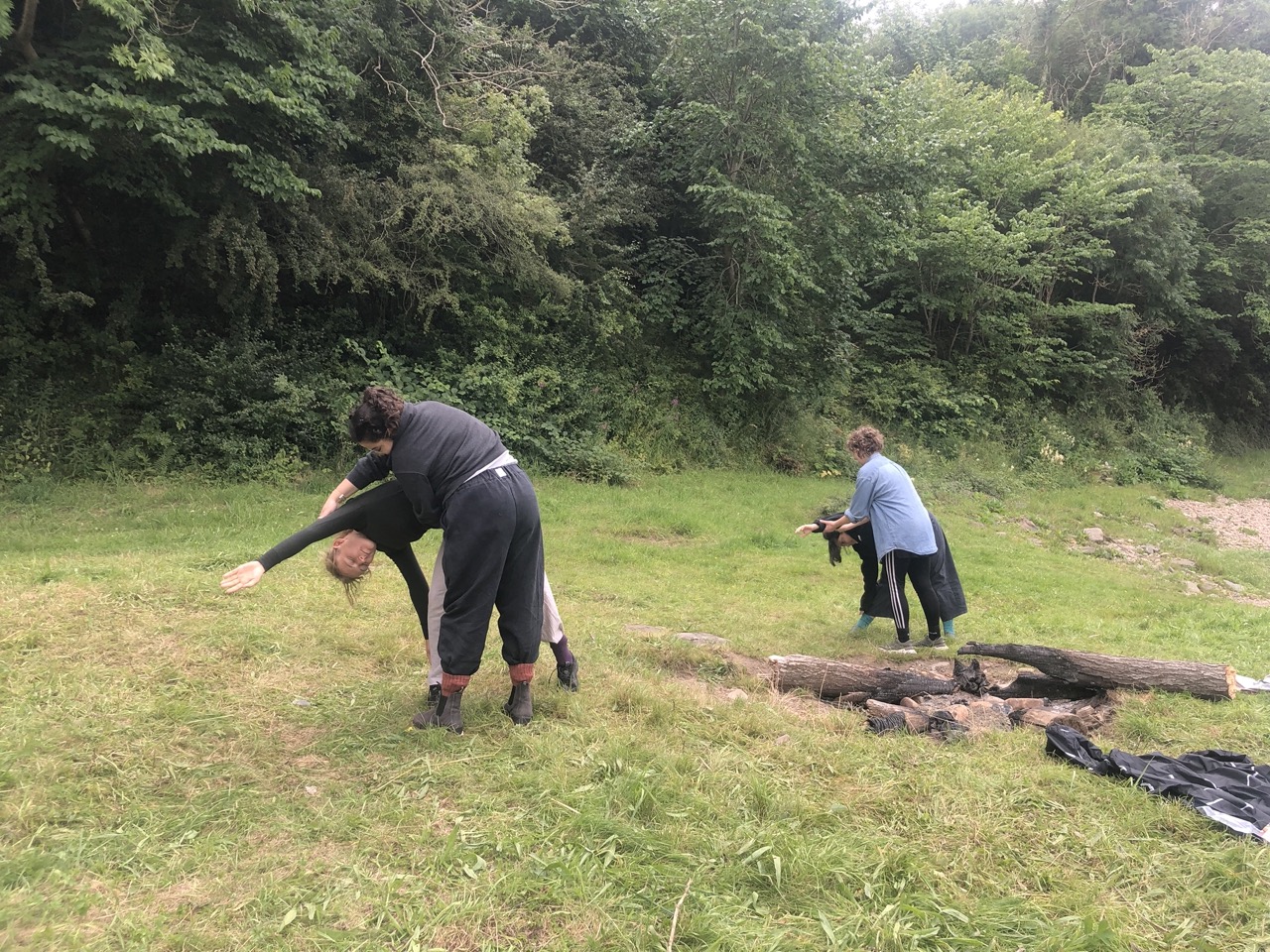
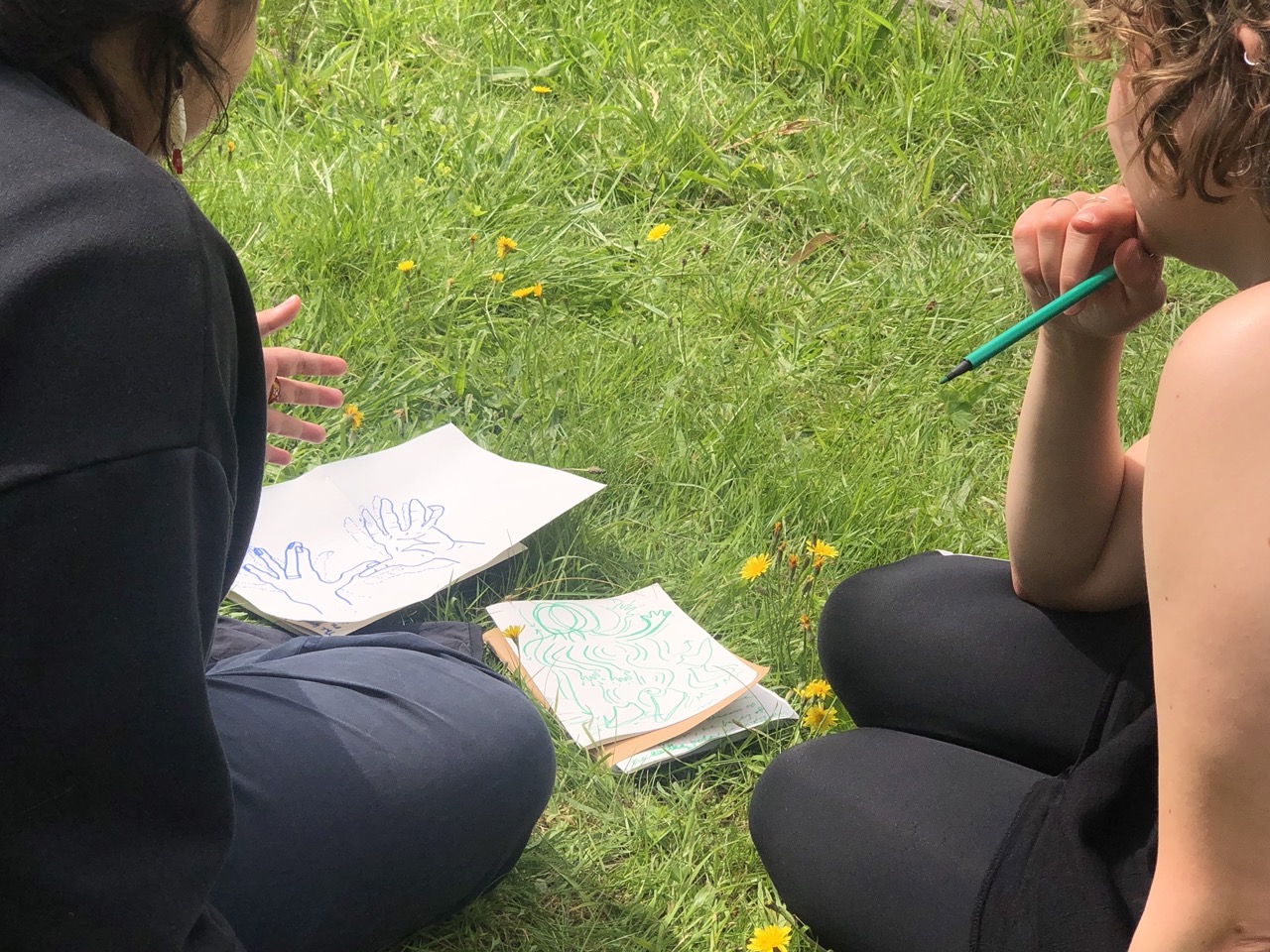
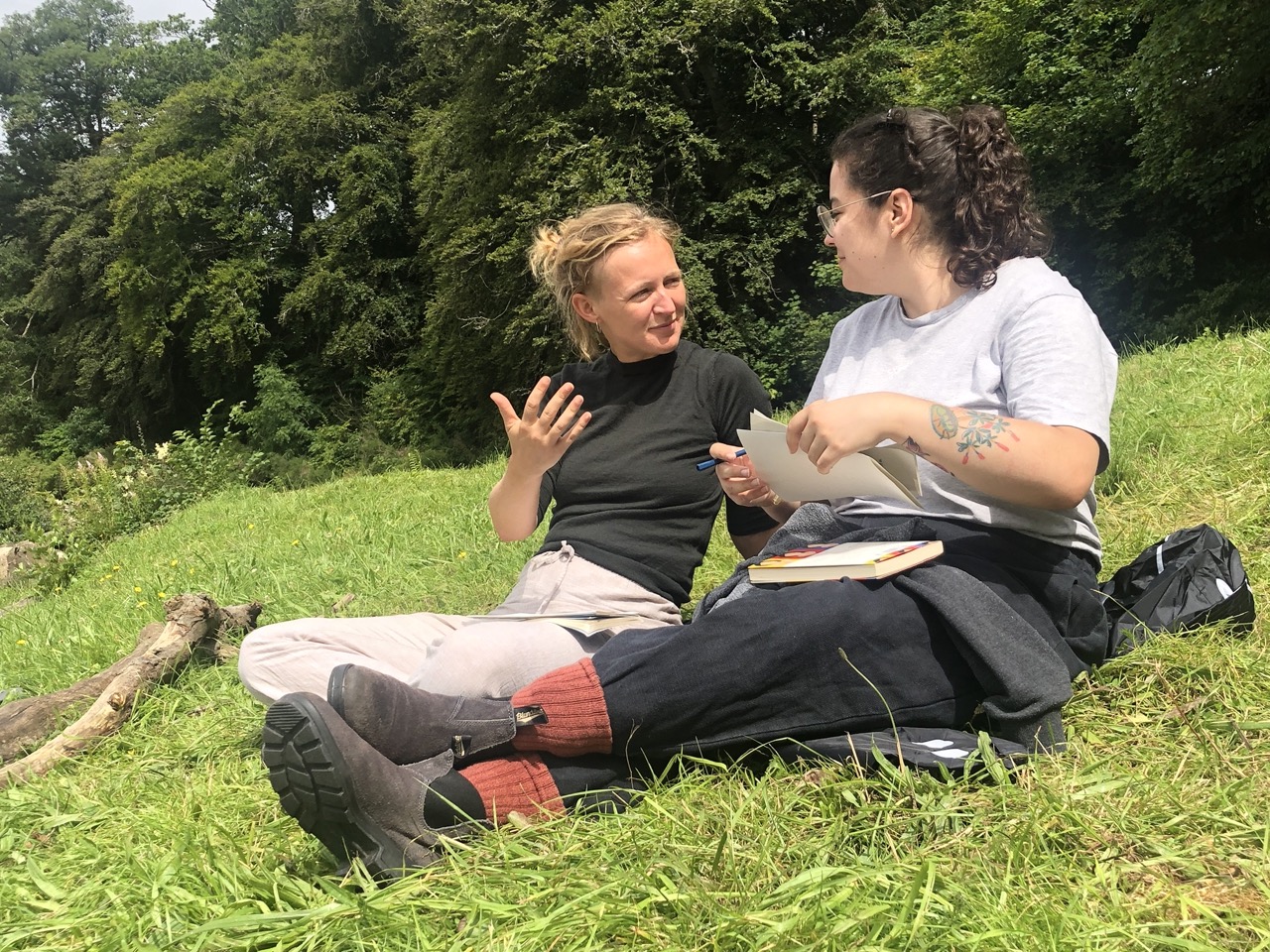


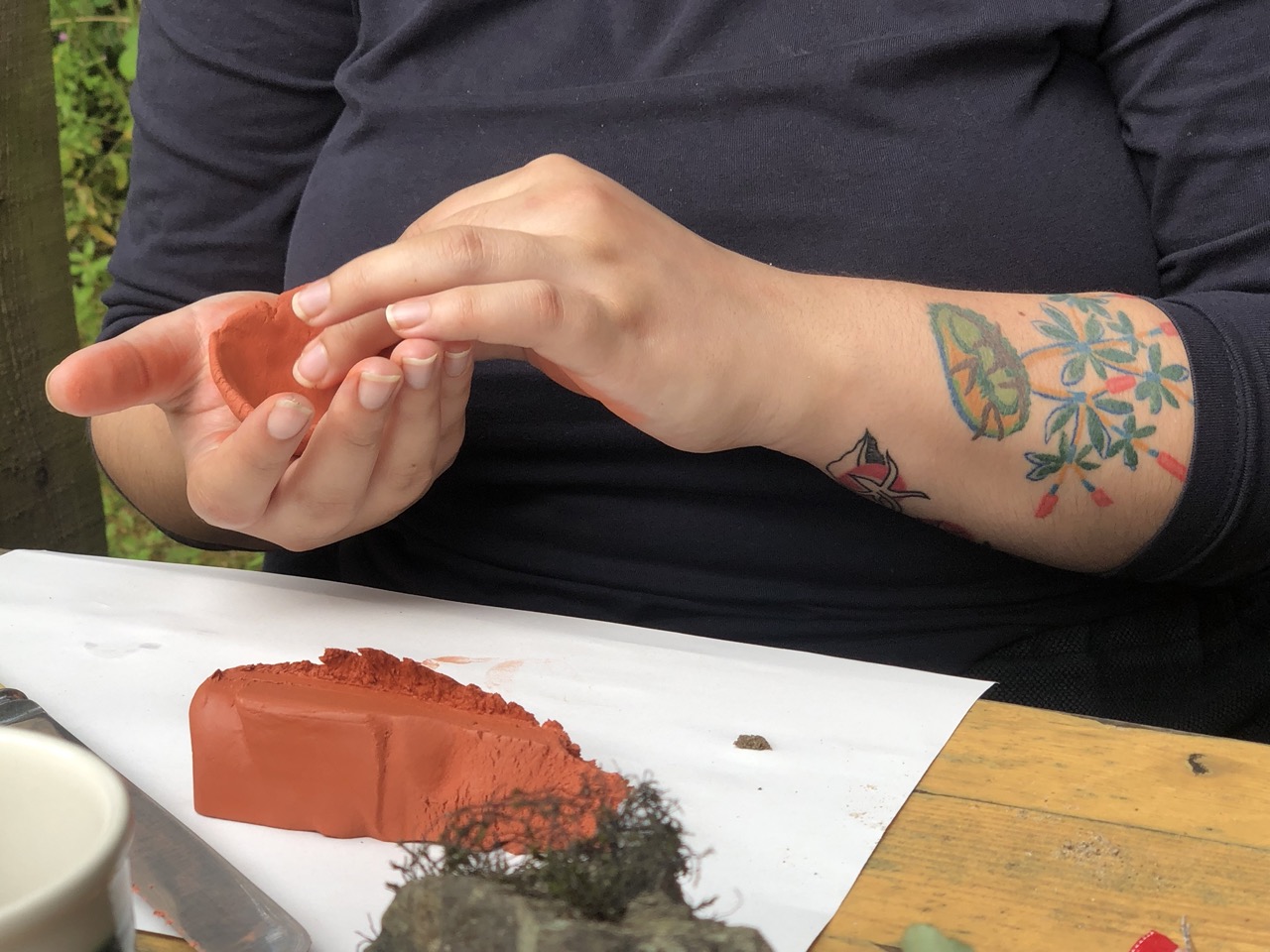




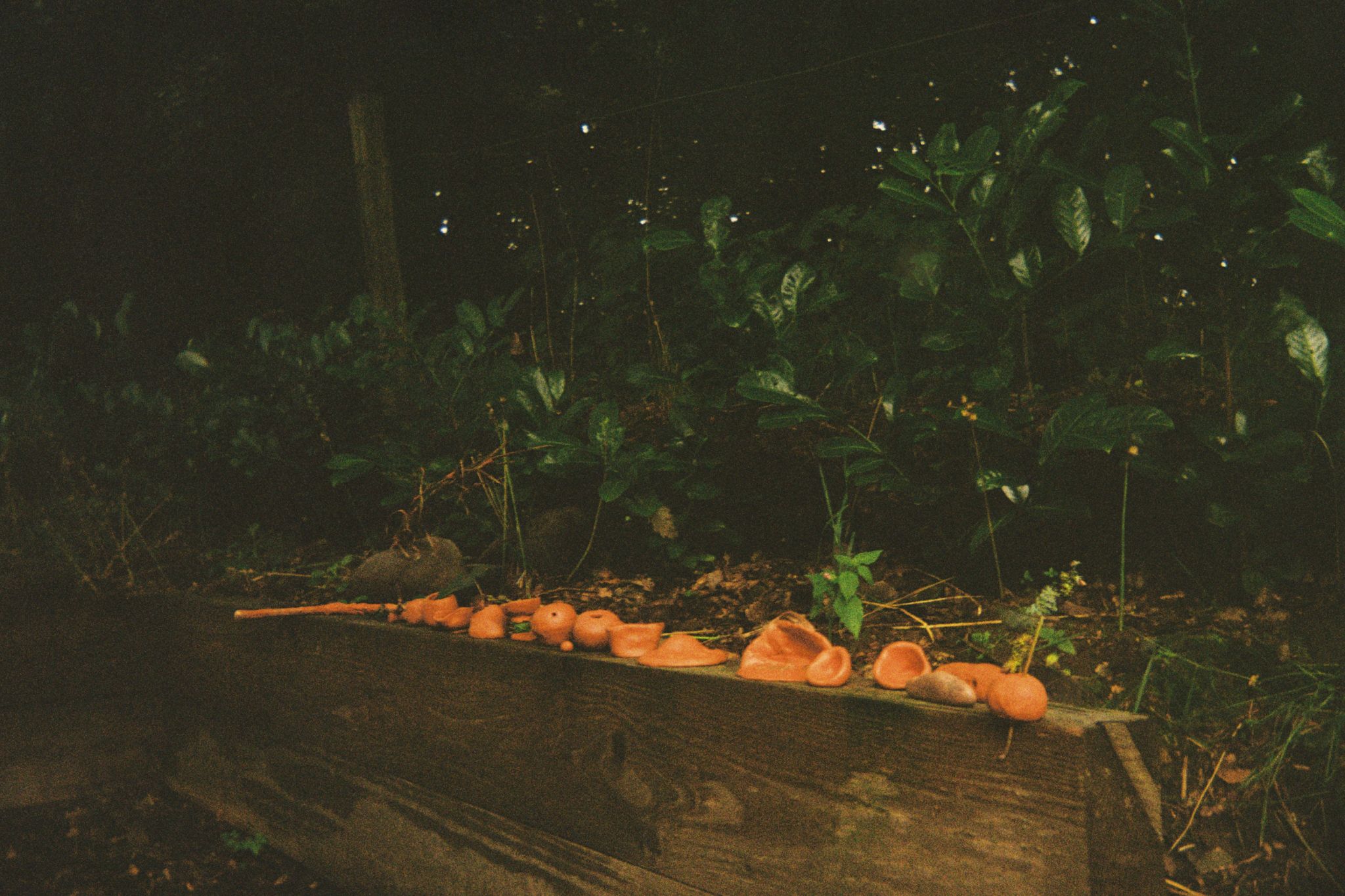


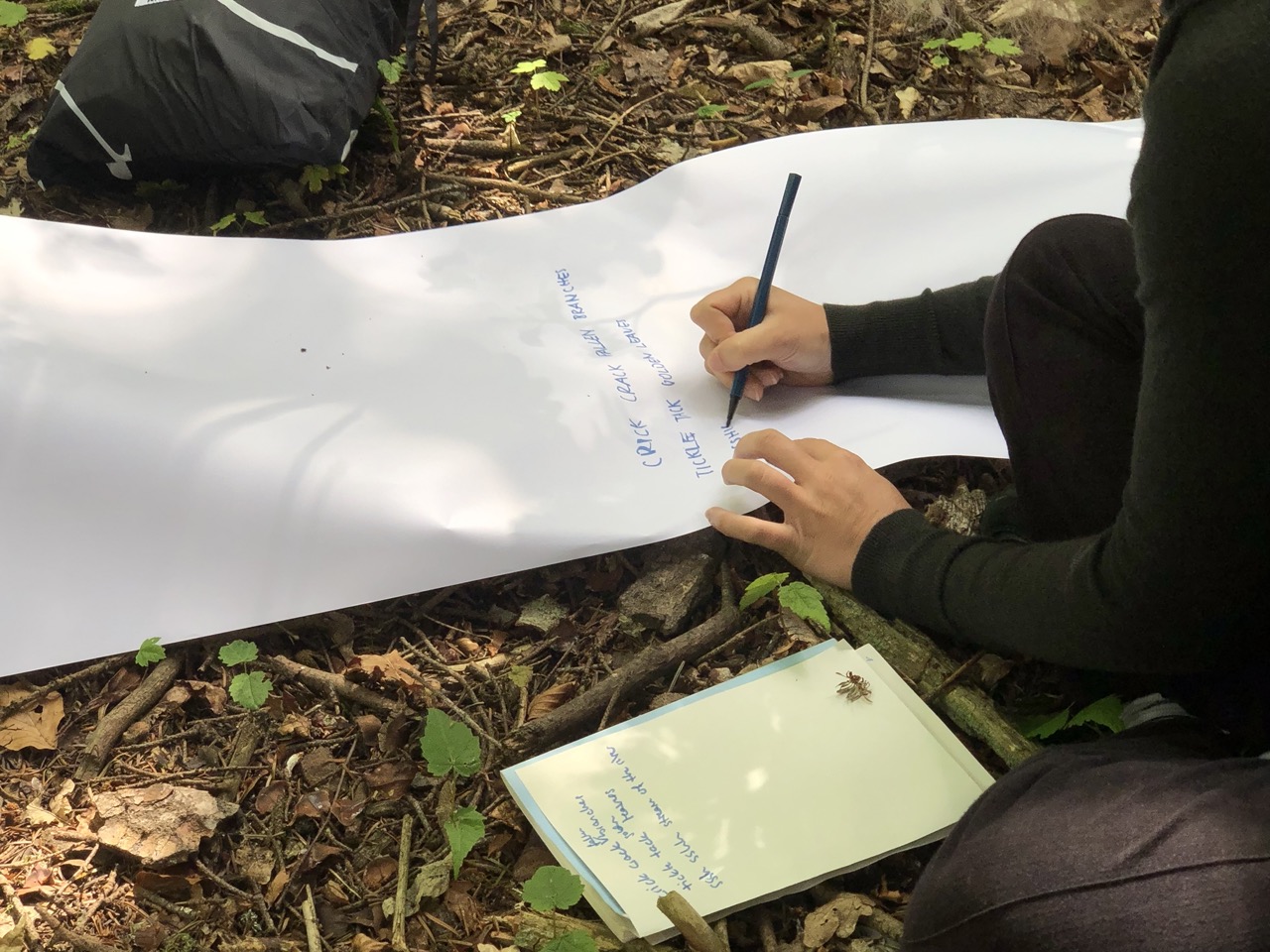
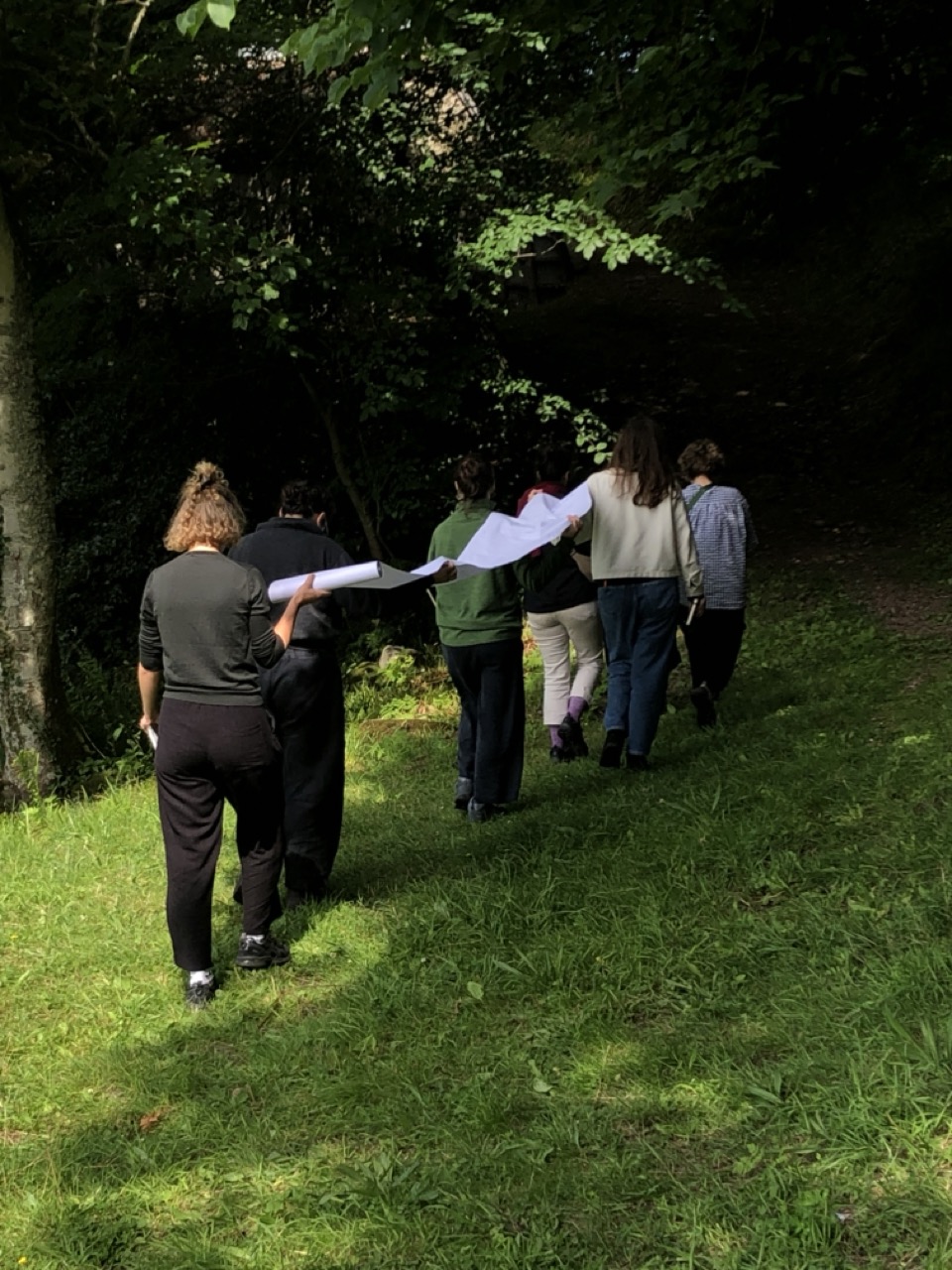

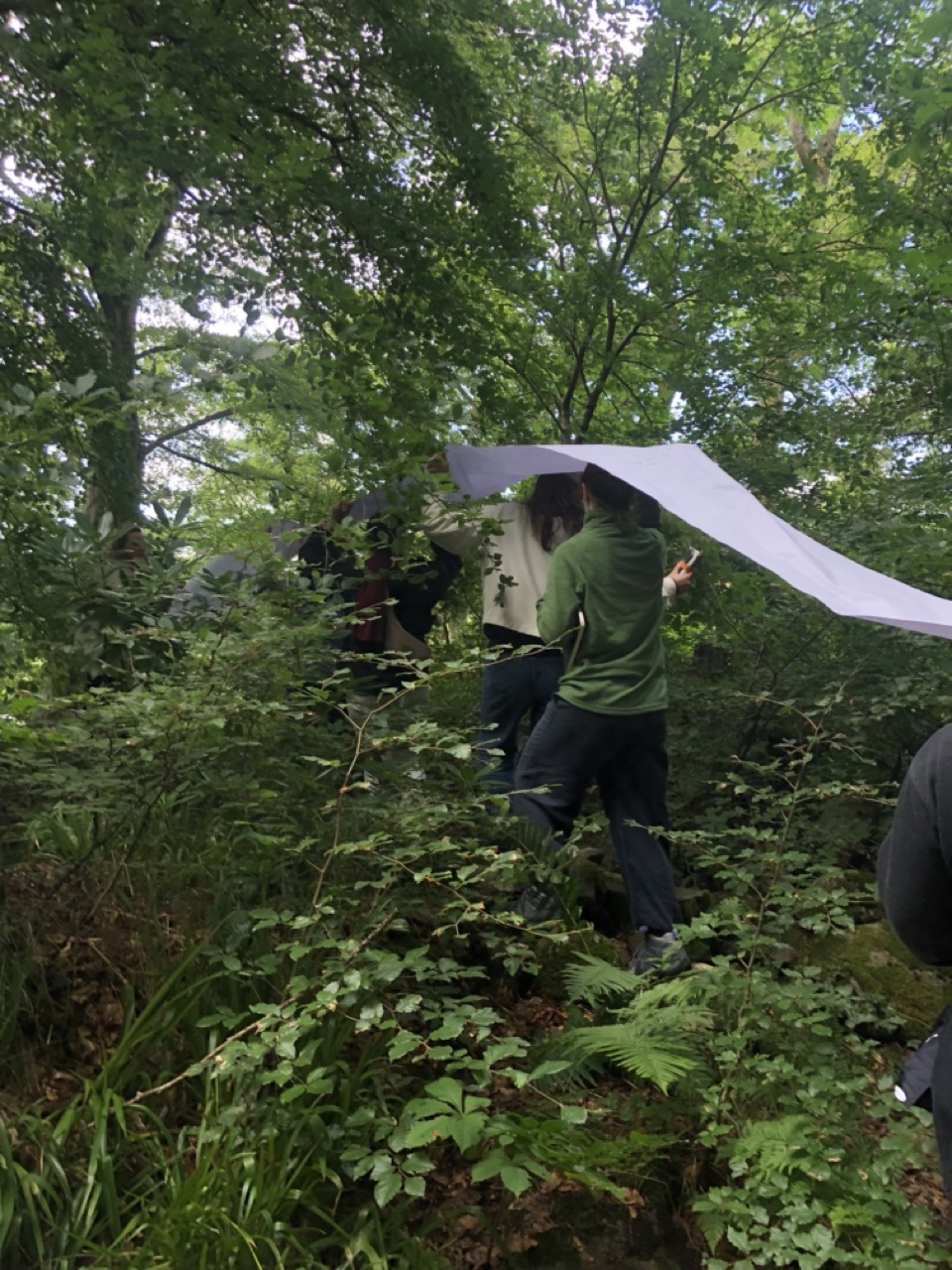
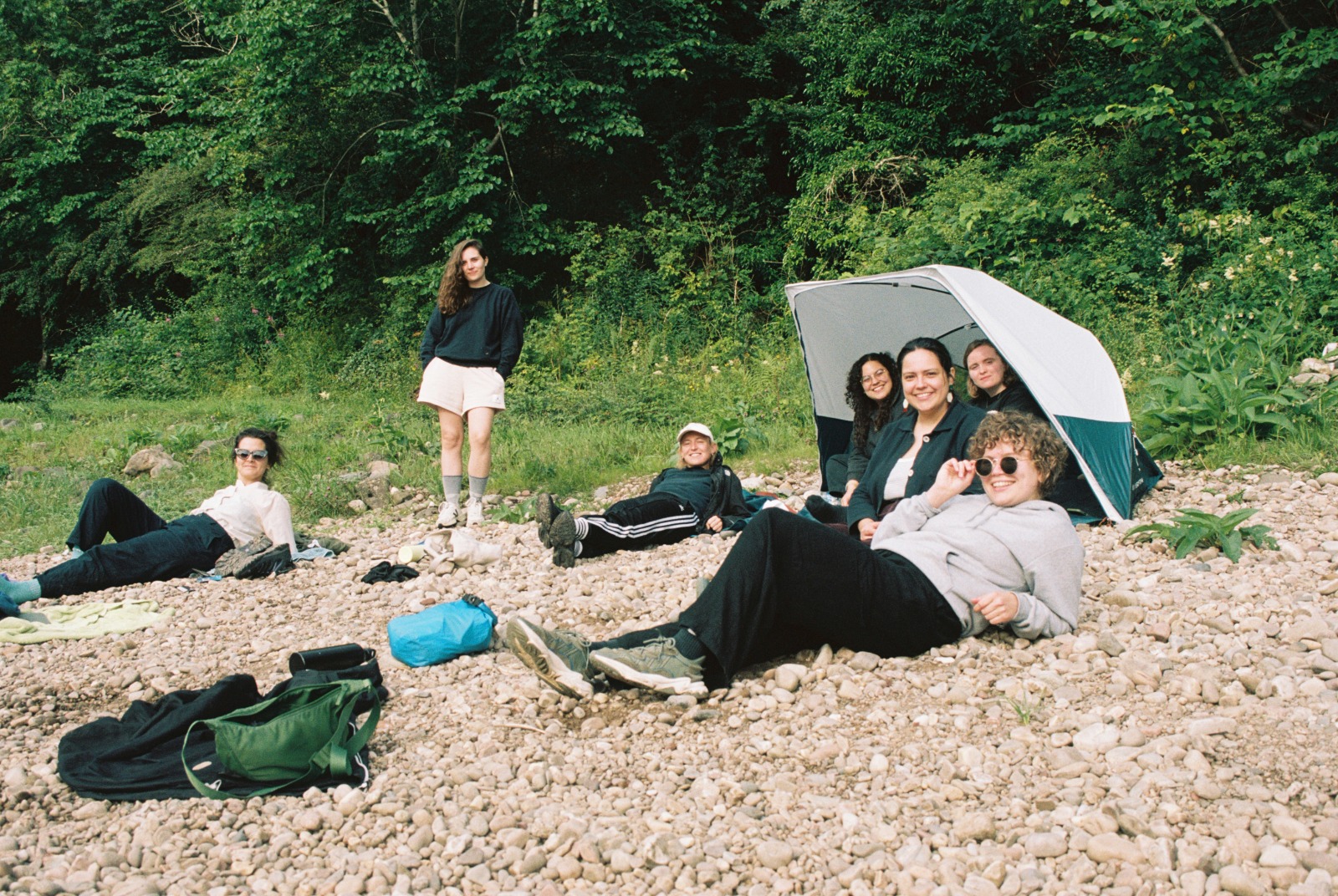
summer pools: TAGHAIRM
Perthshire, Esocia | 2023
En colaboración con Eloise Maltby Maland.
summer pools es un programa anual autogestionado enfocado en prácticas artísticas y espaciales. A través de metodologías situadas y pedagogías multidireccionales, exploramos a lo largo de una semana, temas relacionados con ecologías, lenguaje y territorio.
El proyecto nació de conversaciones sobre la necesidad de replantear modelos de práctica colectiva. Cada año regresamos a Perthshire, donde tomamos prestada una palabra del entorno local que inspira y guía los talleres. Durante una semana, nos reunimos para reflexionar, crear y compartir conocimientos y habilidades, fomentando una experiencia de aprendizaje compartido.
-
La primera iteración del programa tuvo lugar en Perthshire, Escocia. Prestamos la palabra gaélica "taghairm", que significa "ruido; eco; tipo de adivinación mediante la escucha del ruido de las cascadas". Tomando esta palabra como punto de partida, exploramos ruidos, silencios, la voz y la escucha activa junto a las intensas corrientes del río Tay, empleando una variedad de formatos: dibujo, escritura, meditación, lectura, caminata, cartografía, cerámica, y movimiento.
Ocho personas viajamos desde Italia, España, Alemania y el Reino Unido para una semana de talleres, paseos y conversaciones con un grupo increíble que aportó muchas texturas, intereses, conocimientos y experiencias.
¡Muchas gracias a nuestras primeras participantes!
Anya, Clara, Francesca, Franzi, Grace, Montse
-
Seguí el proyecto con más profundidas a través de nuestra cuenta de instagram @summer__pools
Perthshire, Scotland | 2023
In collaboration with Eloise Maltby Maland.
summer pools is a yearly week-long, self-organised arts and spatial practice programme. We explore ecologies, languages and our implicated bodies, through situated methodologies and a multidirectional approach to learning.
summer pools was born out of conversations about a need and yearning to think through alternative models of collective practice. Each year we return to Perthshire where we borrow a word relating to its landscapes that frames the workshops of the programme. Together, over the week, we think, make and share knowledges and skills.
-
The first iteration of summer pools programme took place in Perthshire, Scotland. We borrowed from the Gaelic word of ‘taghairm’ meaning a ‘noise; echo; type of divination by listening to the noise of waterfalls’, and explored noises, silences, voicing and listening next to the loud currents of the River Tay through different formats, which include drawing, writing, reading, walking, collecting, mapping, moving, recording, and making.
Eight of us travelled from Italy, Spain, Germany, and the UK for a week of workshops, walks, conversations with an amazing group who brought many textures, interests, knowledges and experiences.
Thank you so much to our first participants!
Anya, Clara, Francesca, Franzi, Grace, Montse
-
Follow the project in more depth through our instagram account @summer__pools
summer pools is a yearly week-long, self-organised arts and spatial practice programme. We explore ecologies, languages and our implicated bodies, through situated methodologies and a multidirectional approach to learning.
summer pools was born out of conversations about a need and yearning to think through alternative models of collective practice. Each year we return to Perthshire where we borrow a word relating to its landscapes that frames the workshops of the programme. Together, over the week, we think, make and share knowledges and skills.
-
The first iteration of summer pools programme took place in Perthshire, Scotland. We borrowed from the Gaelic word of ‘taghairm’ meaning a ‘noise; echo; type of divination by listening to the noise of waterfalls’, and explored noises, silences, voicing and listening next to the loud currents of the River Tay through different formats, which include drawing, writing, reading, walking, collecting, mapping, moving, recording, and making.
Eight of us travelled from Italy, Spain, Germany, and the UK for a week of workshops, walks, conversations with an amazing group who brought many textures, interests, knowledges and experiences.
Thank you so much to our first participants!
Anya, Clara, Francesca, Franzi, Grace, Montse
-
Follow the project in more depth through our instagram account @summer__pools


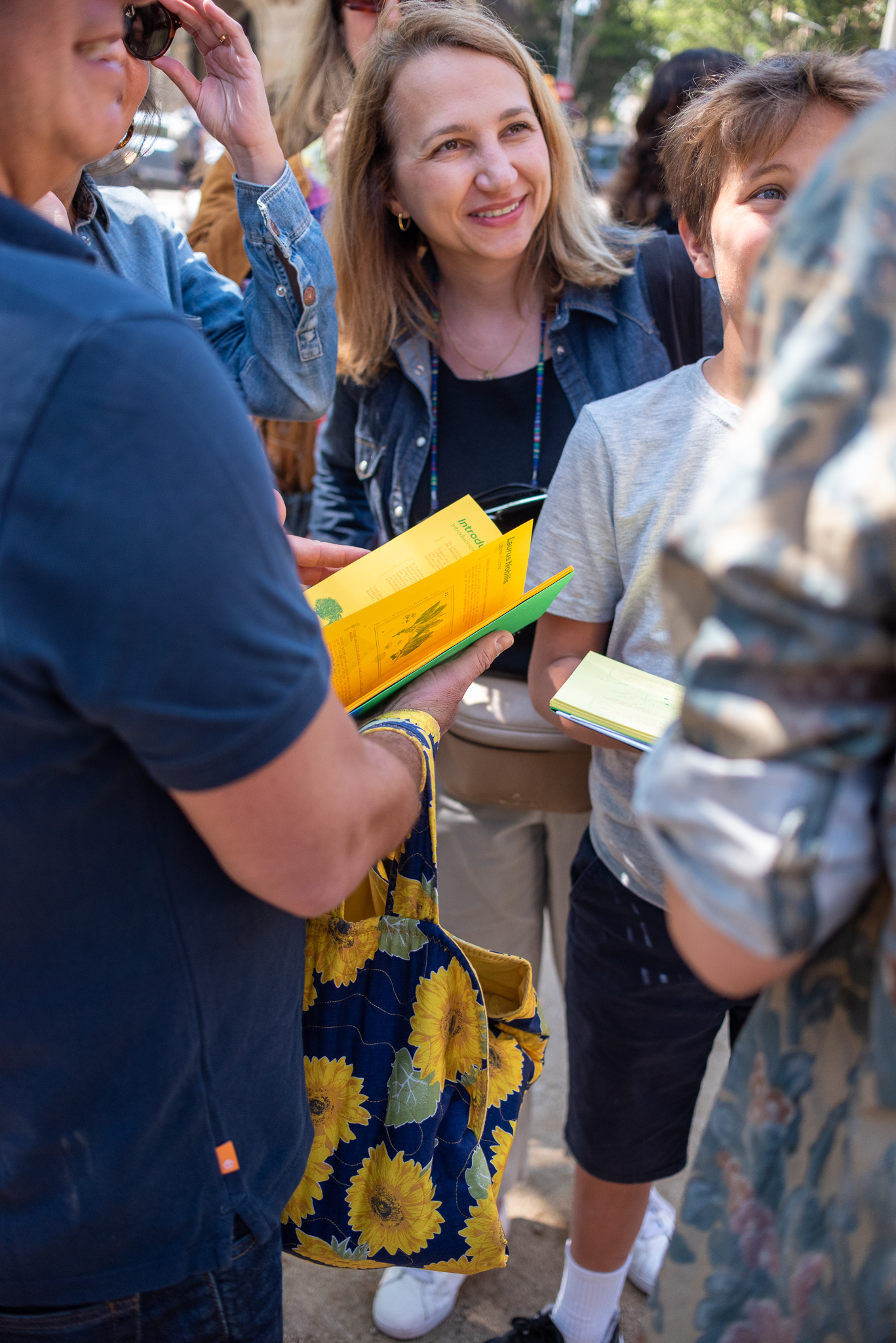














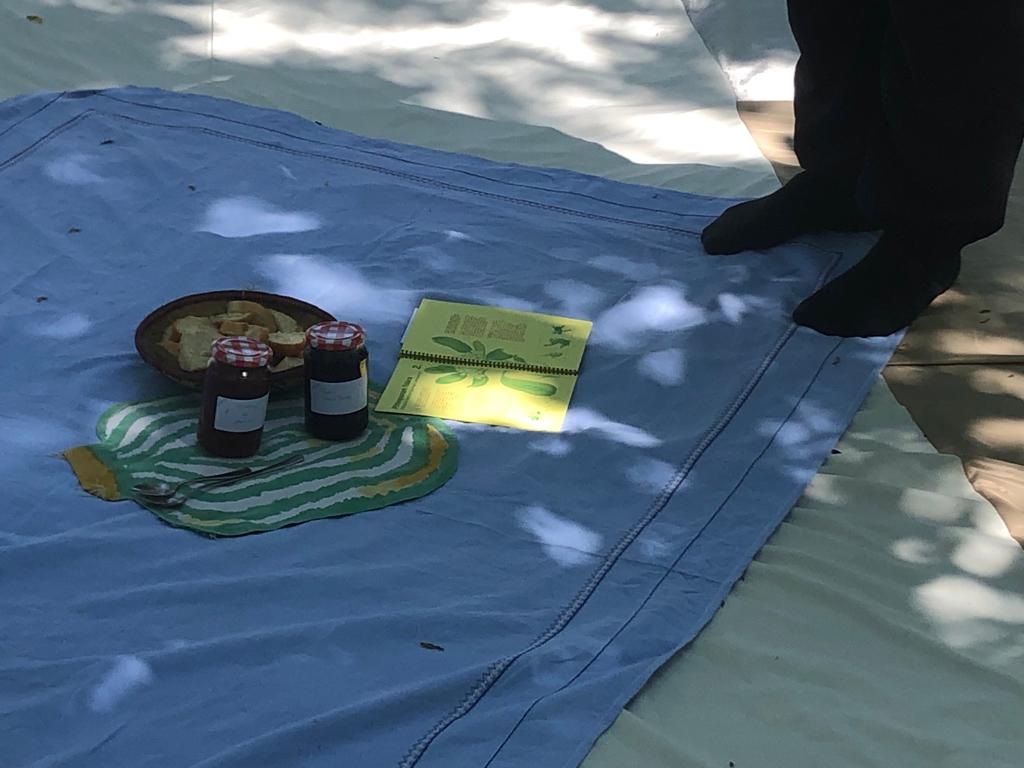

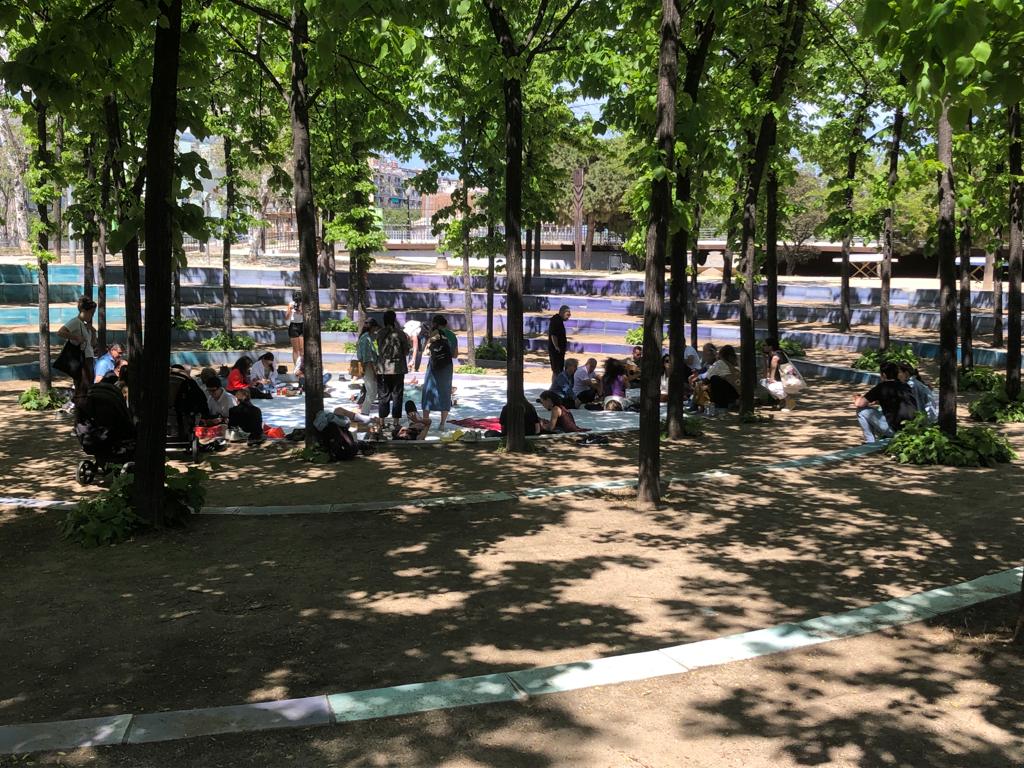

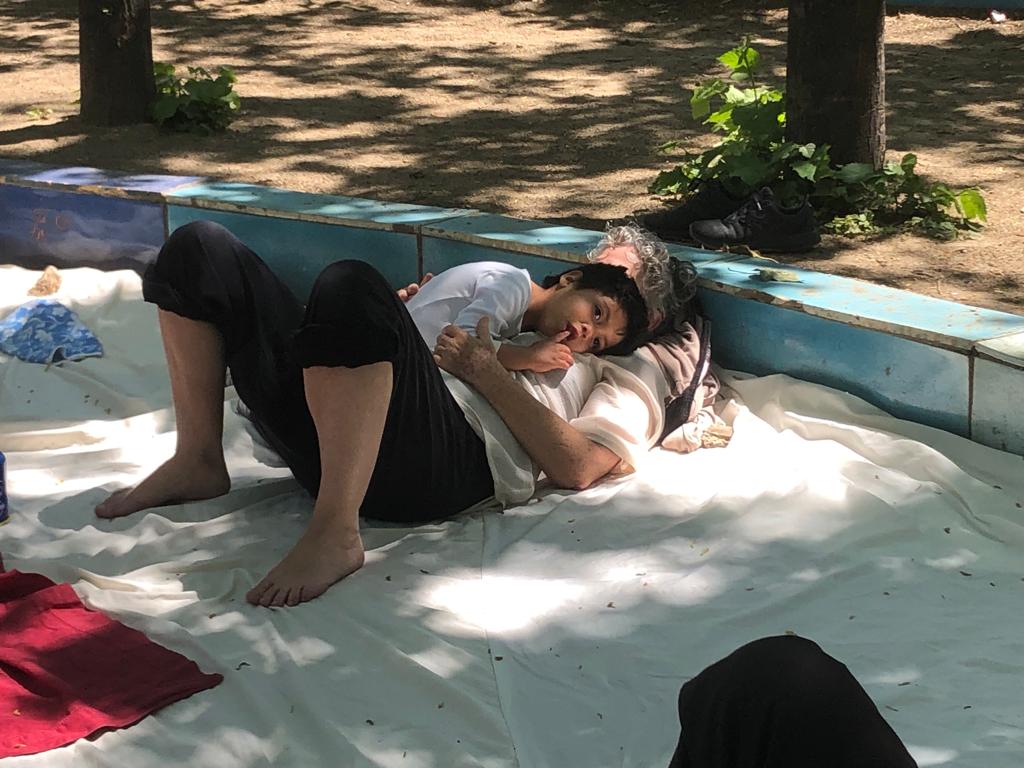
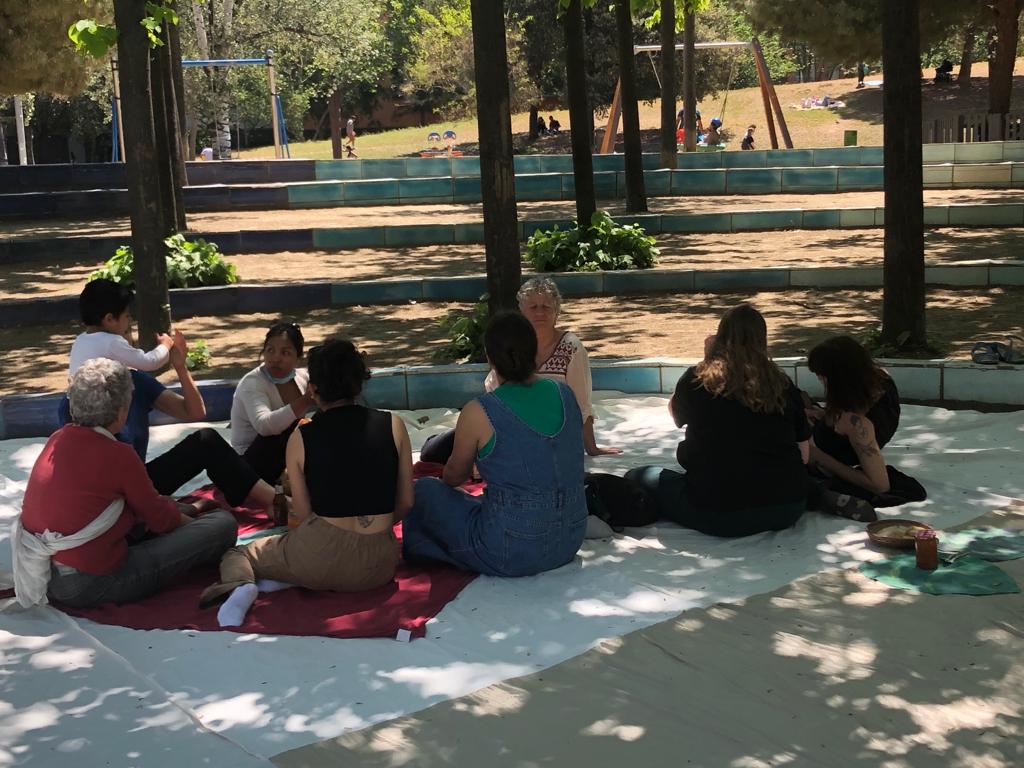









Fiesta del Árbol
Barcelona, Cataluña, España | 2023
En colaboración con Eloise Maltby Maland y Caterina Miralles.
Fiesta del Árbol: Replay es una invitación a explorar las comunidades multiespecies de Barcelona a través de un recorrido entre los árboles de la ciudad.
Ocurrió el 30 de abril de 2023, exactamente en el 124 aniversario de la primera Fiesta del Árbol de Barcelona, de la que presta su nombre. Esta última fue organizada por un ingeniero forestal que creía en reconocer la importancia de los árboles en un país donde los bosques estaban siendo ampliamente destruidos. Para ello, niñ+s y profesor+s se reunieron en el Parque de la Ciutadella para celebrar los árboles de la ciudad.
L+s participantes fueron guiad+s por los árboles de la Parc de la Ciutadella y Parc de l’Estació del Nord a través de un mapa y un libro que cuenta sus historias, narrativas íntimas, mitologías y relaciones, junto a invitaciones para interactuar con cada árbol. En la última parada una fiesta esperaba bajo un espiral de tilos.
El proyecto fue parte de las actividades de Model+ para Model. Festival d'Arquitectures de Barcelona 2023 organizado por el Ayuntamiento de Barcelona y la Fundación Mies van der Rohe, y comisariado por Eva Franch i Gilabert.
Barcelona, Catalonia, Spain | 2023
In collaboration with Eloise Maltby Maland and Caterina Miralles.
Fiesta del Árbol: Replay is an invitation to explore Barcelona's multi-species communities through a route among the city's trees.
It took place on the 30th of April 2023, exactly on the 124th anniversary of the first ‘Fiesta del Árbol’ in Barcelona, from which it borrows its name. The latter was organised by a forest engineer who believed in recognising the importance of trees in a country where forests were widely being destroyed. For this, children and teachers gathered together in Parc de la Ciutadella to celebrate the trees of the city.
The participants were guided around the trees of Parc de la Ciutadella and Parc de l’Estació del Nord through a map and a book that tells their histories, intimate stories, mythologies and relationships, with invitations to interact with each tree. At the last stop, a party awaited under a spiral of linden trees.
The project was part of the Model+ activities for Model. Festival d'Arquitectures de Barcelona 2023 run by the Barcelona City and the Foundation Mies van der Rohe, curated by Eva Franch i Gilabert.
Fiesta del Árbol: Replay is an invitation to explore Barcelona's multi-species communities through a route among the city's trees.
It took place on the 30th of April 2023, exactly on the 124th anniversary of the first ‘Fiesta del Árbol’ in Barcelona, from which it borrows its name. The latter was organised by a forest engineer who believed in recognising the importance of trees in a country where forests were widely being destroyed. For this, children and teachers gathered together in Parc de la Ciutadella to celebrate the trees of the city.
The participants were guided around the trees of Parc de la Ciutadella and Parc de l’Estació del Nord through a map and a book that tells their histories, intimate stories, mythologies and relationships, with invitations to interact with each tree. At the last stop, a party awaited under a spiral of linden trees.
The project was part of the Model+ activities for Model. Festival d'Arquitectures de Barcelona 2023 run by the Barcelona City and the Foundation Mies van der Rohe, curated by Eva Franch i Gilabert.